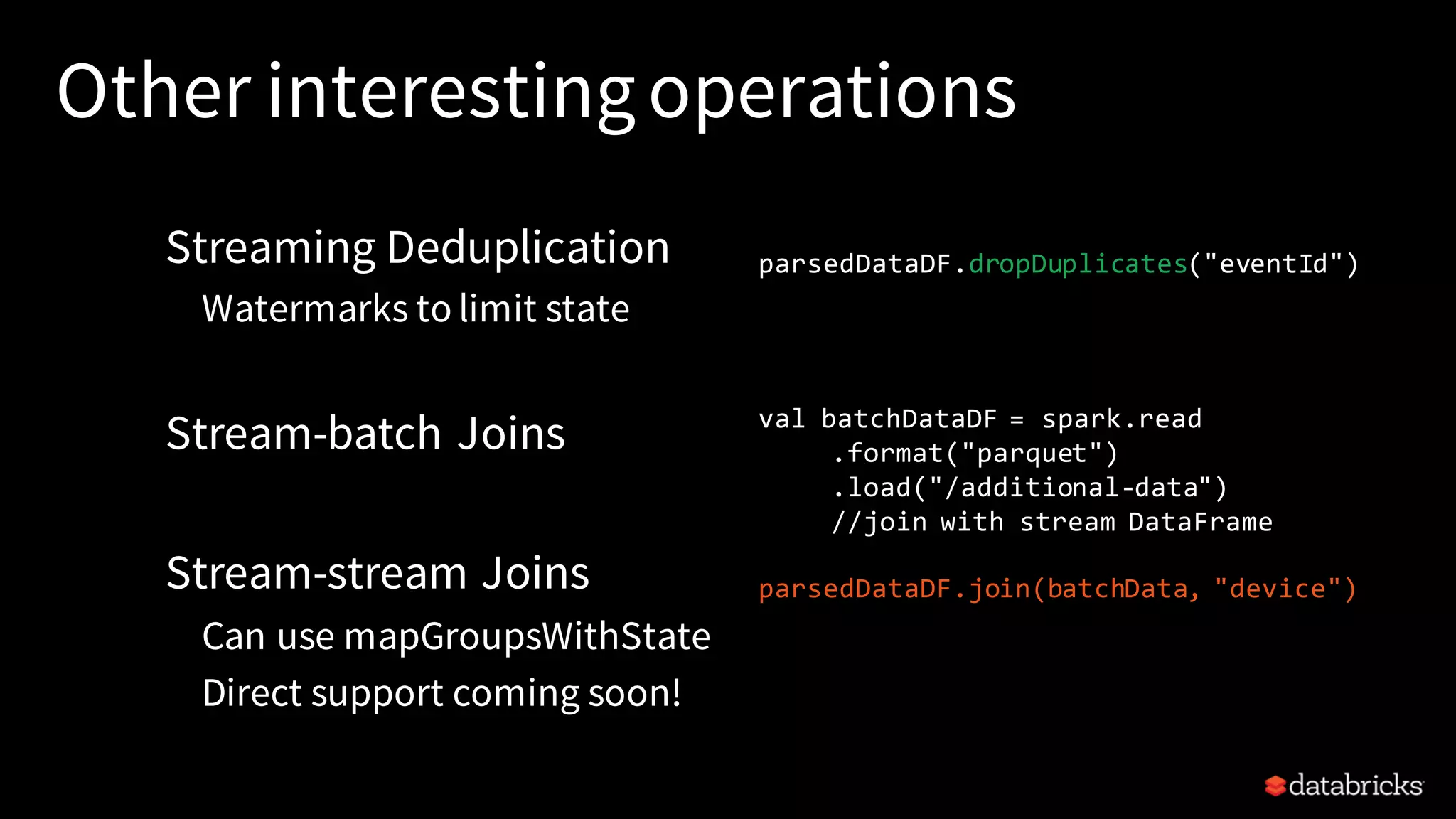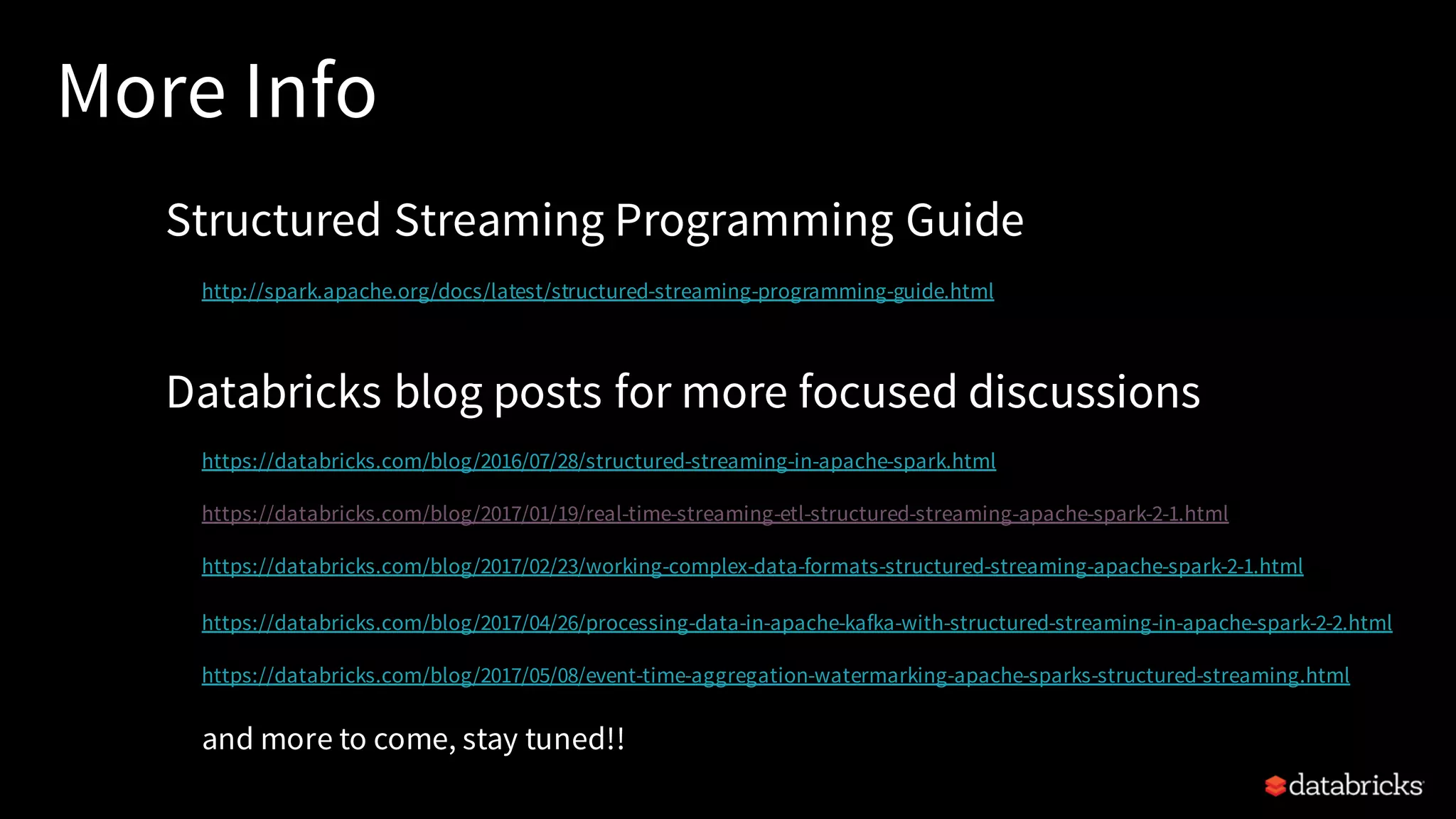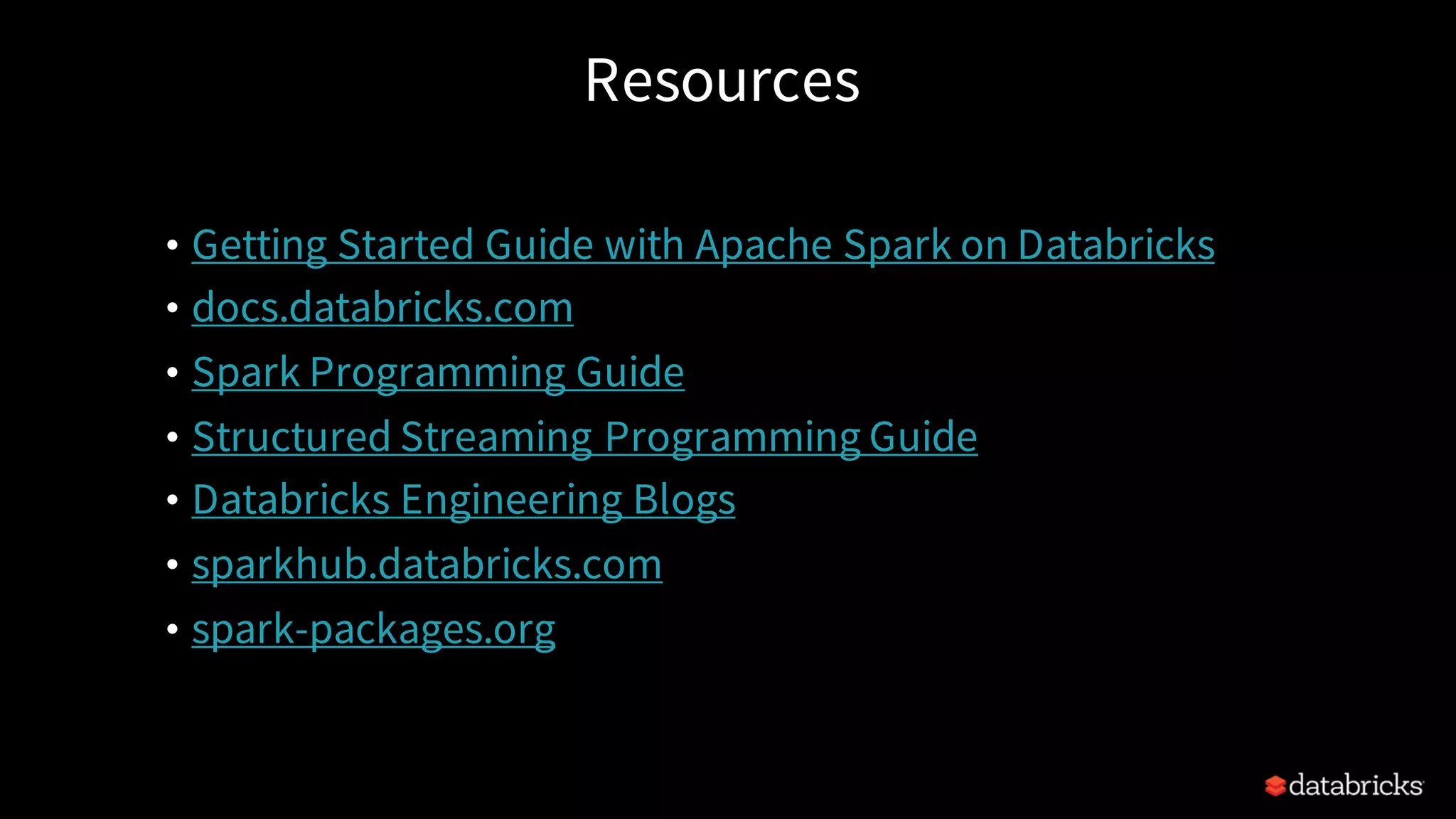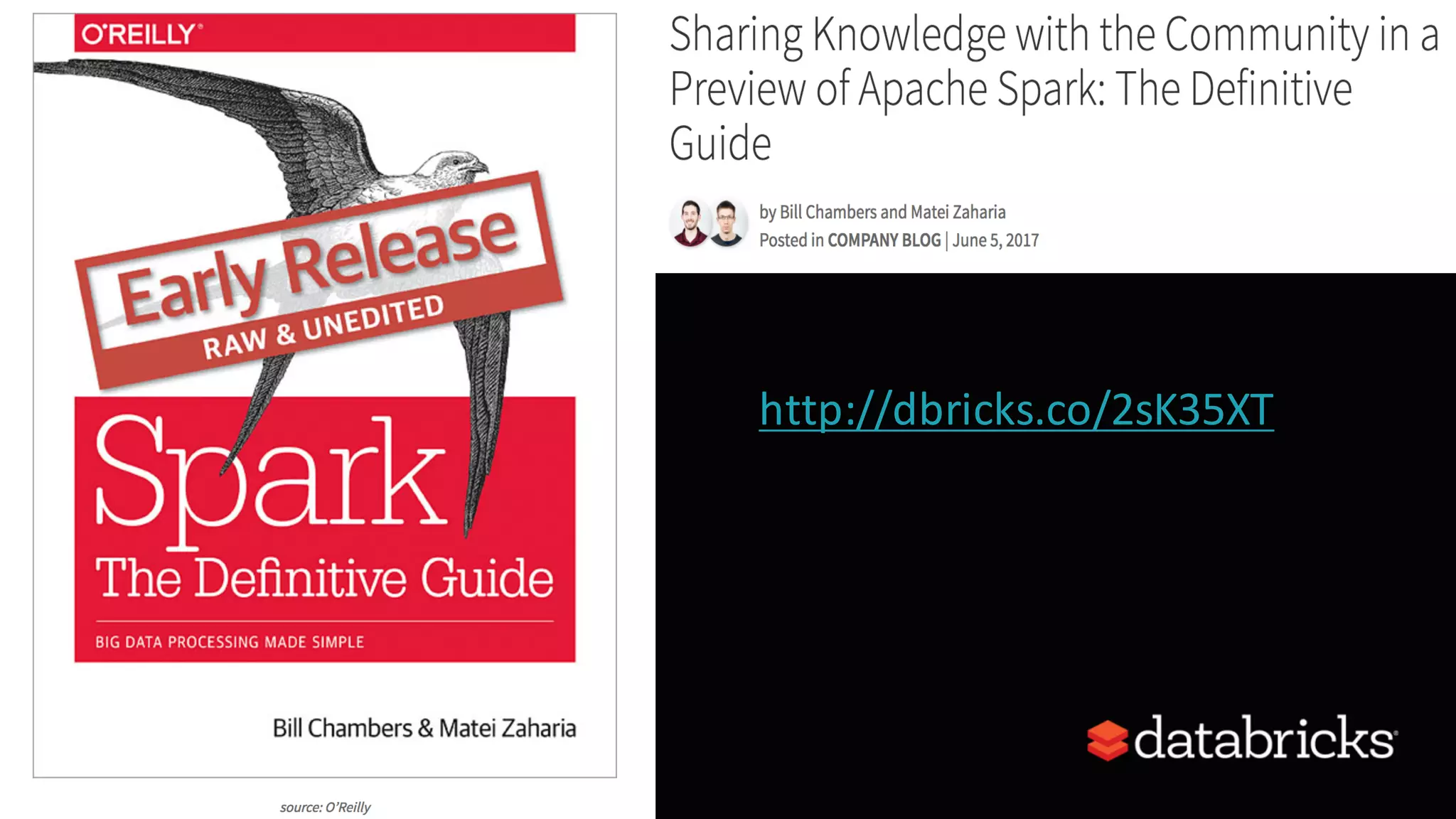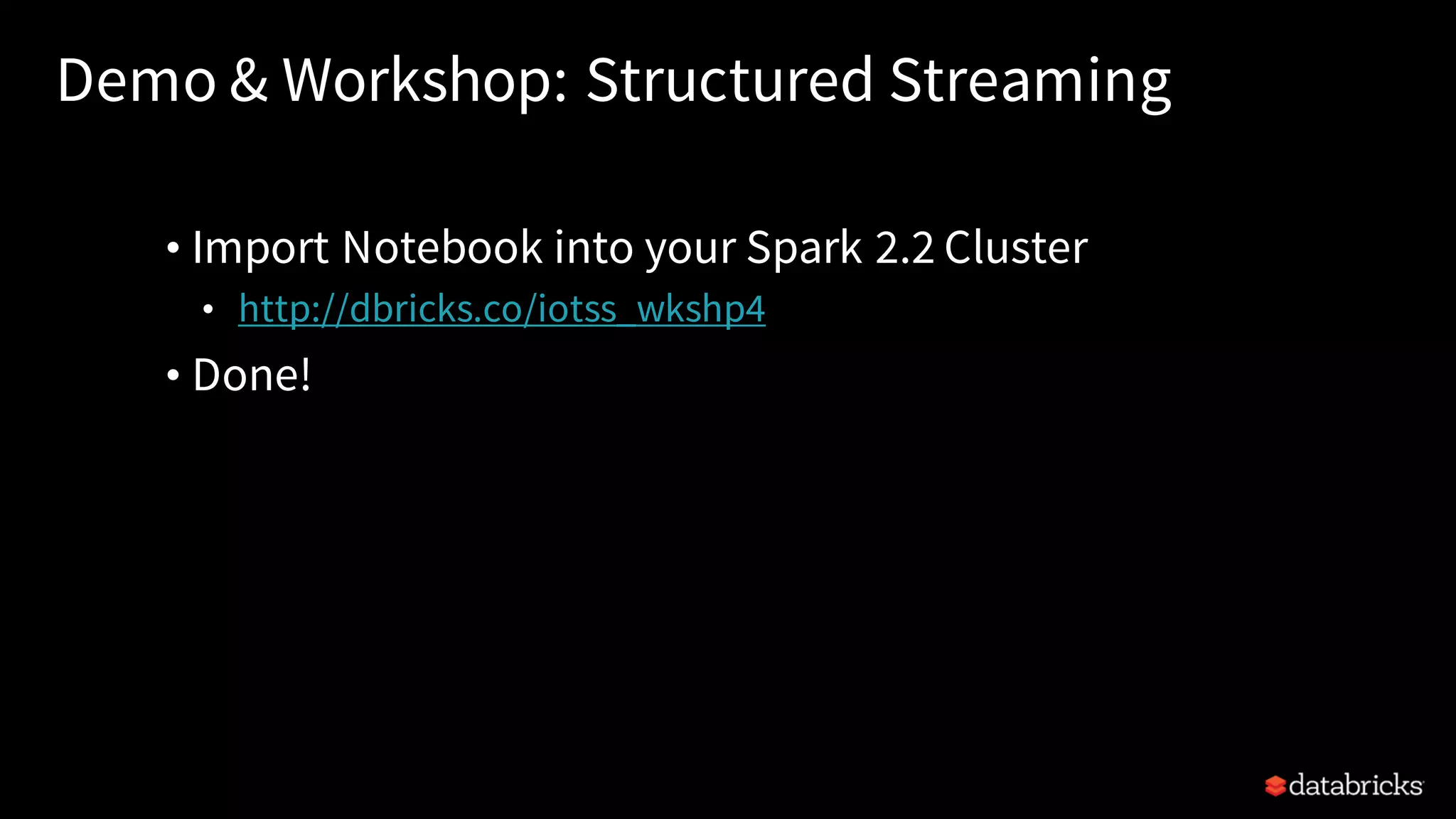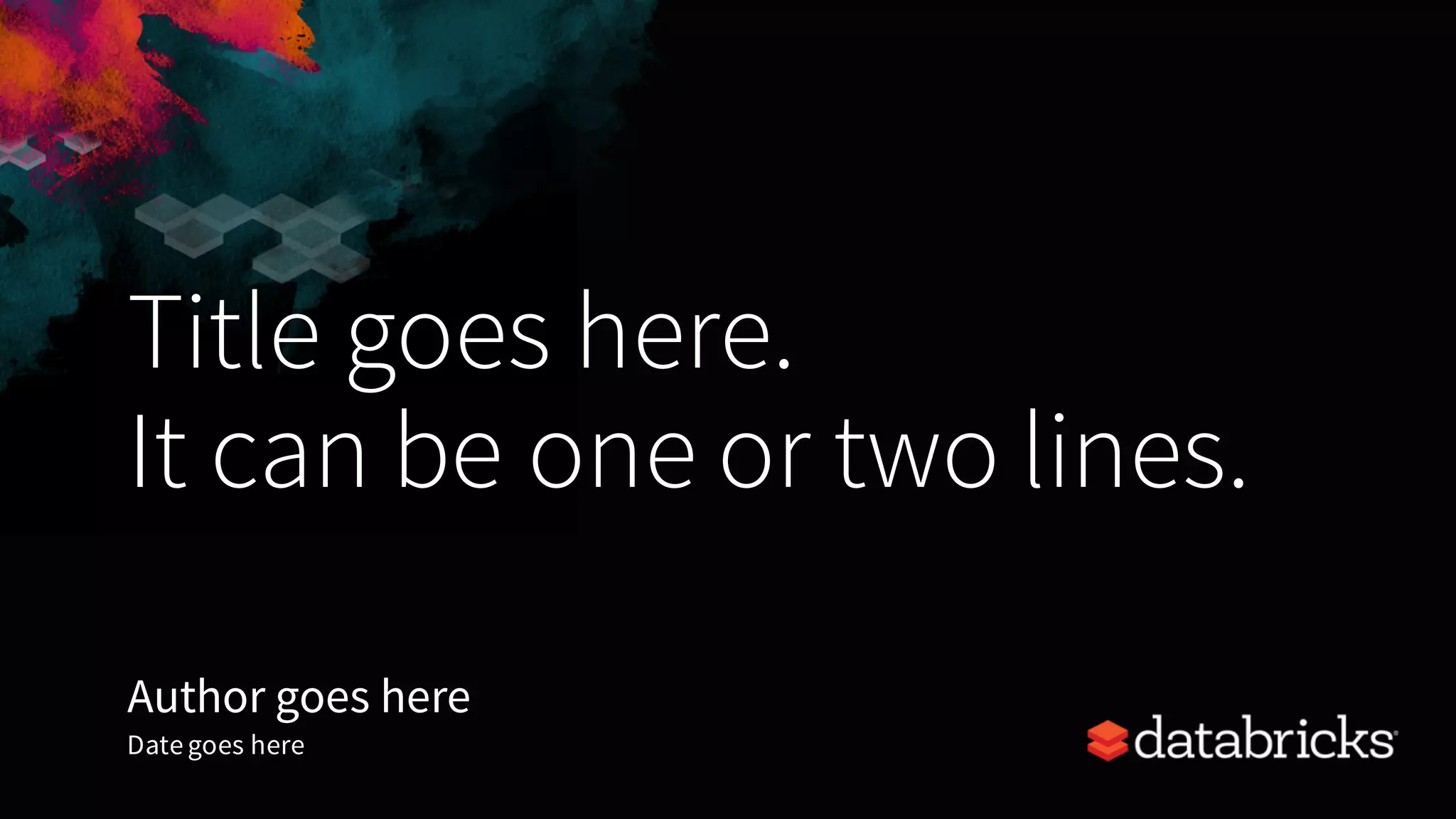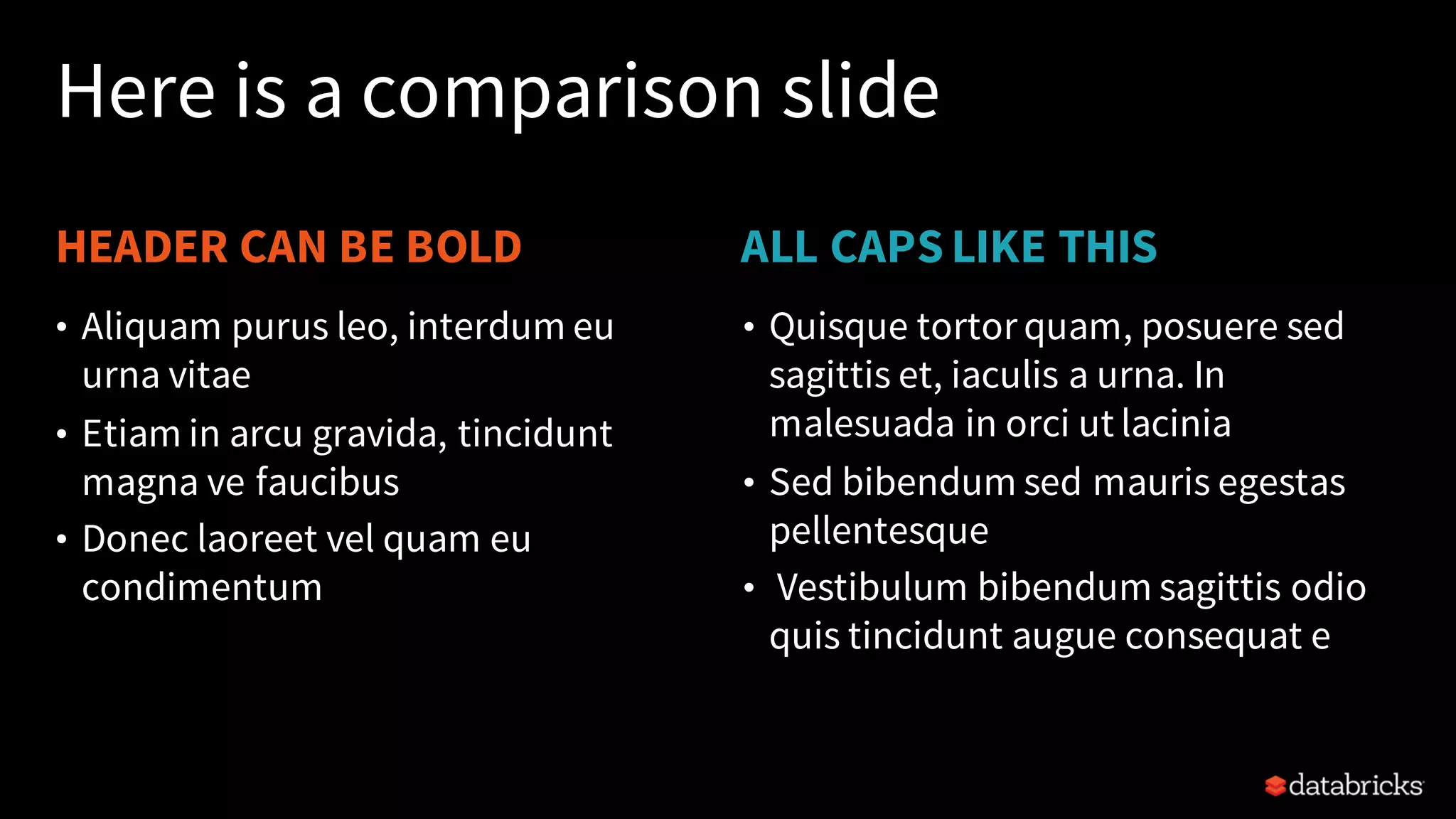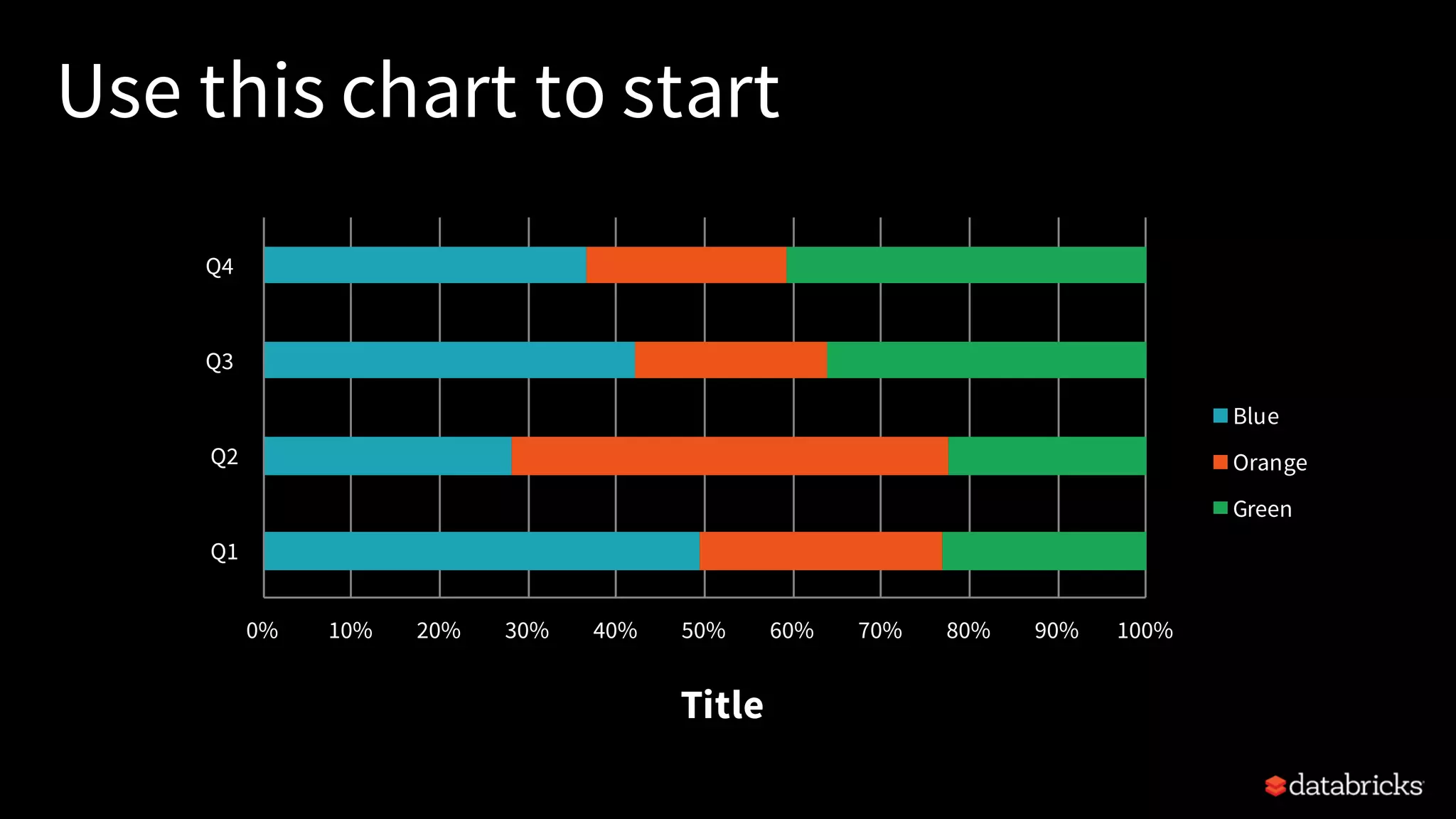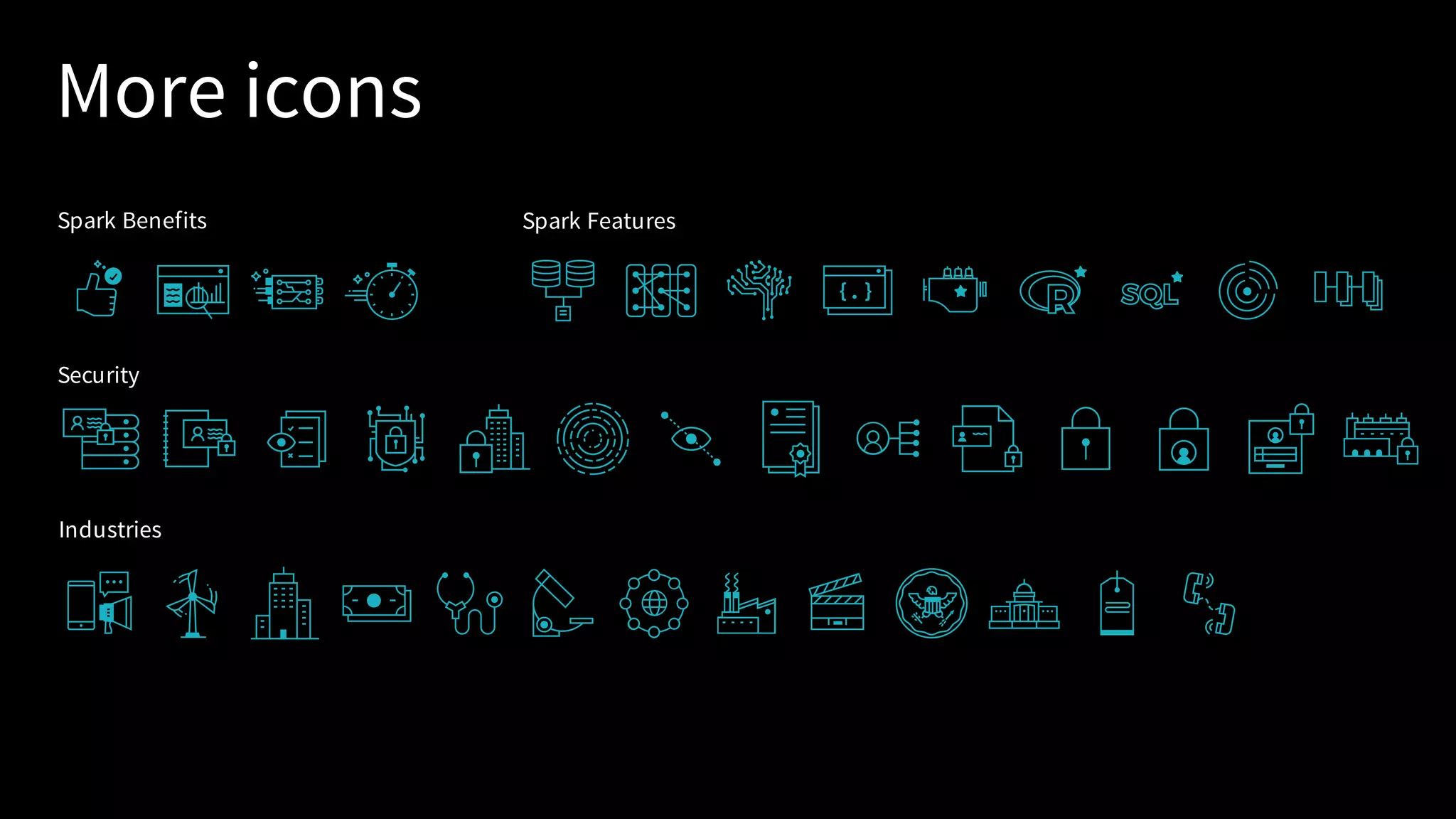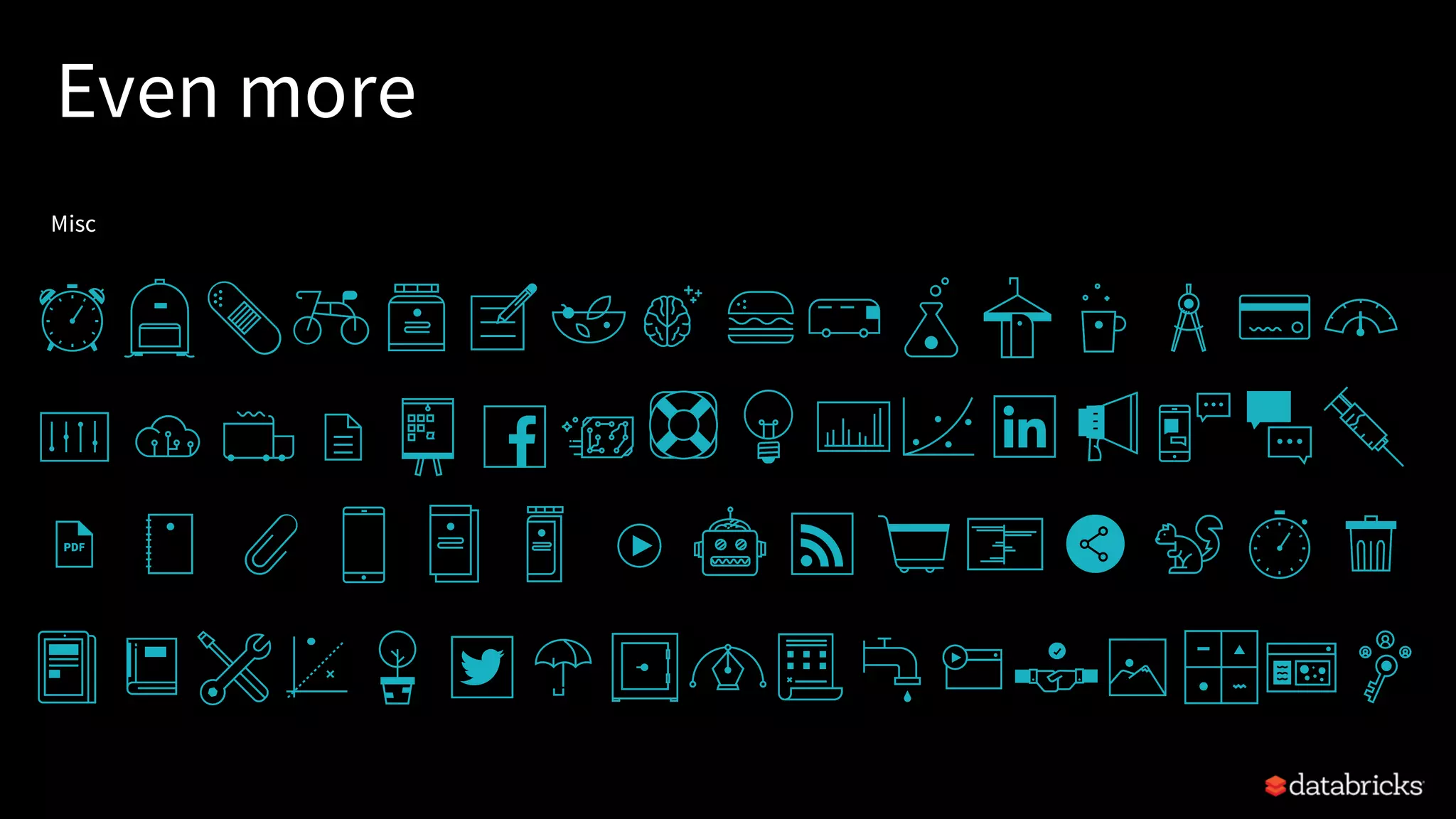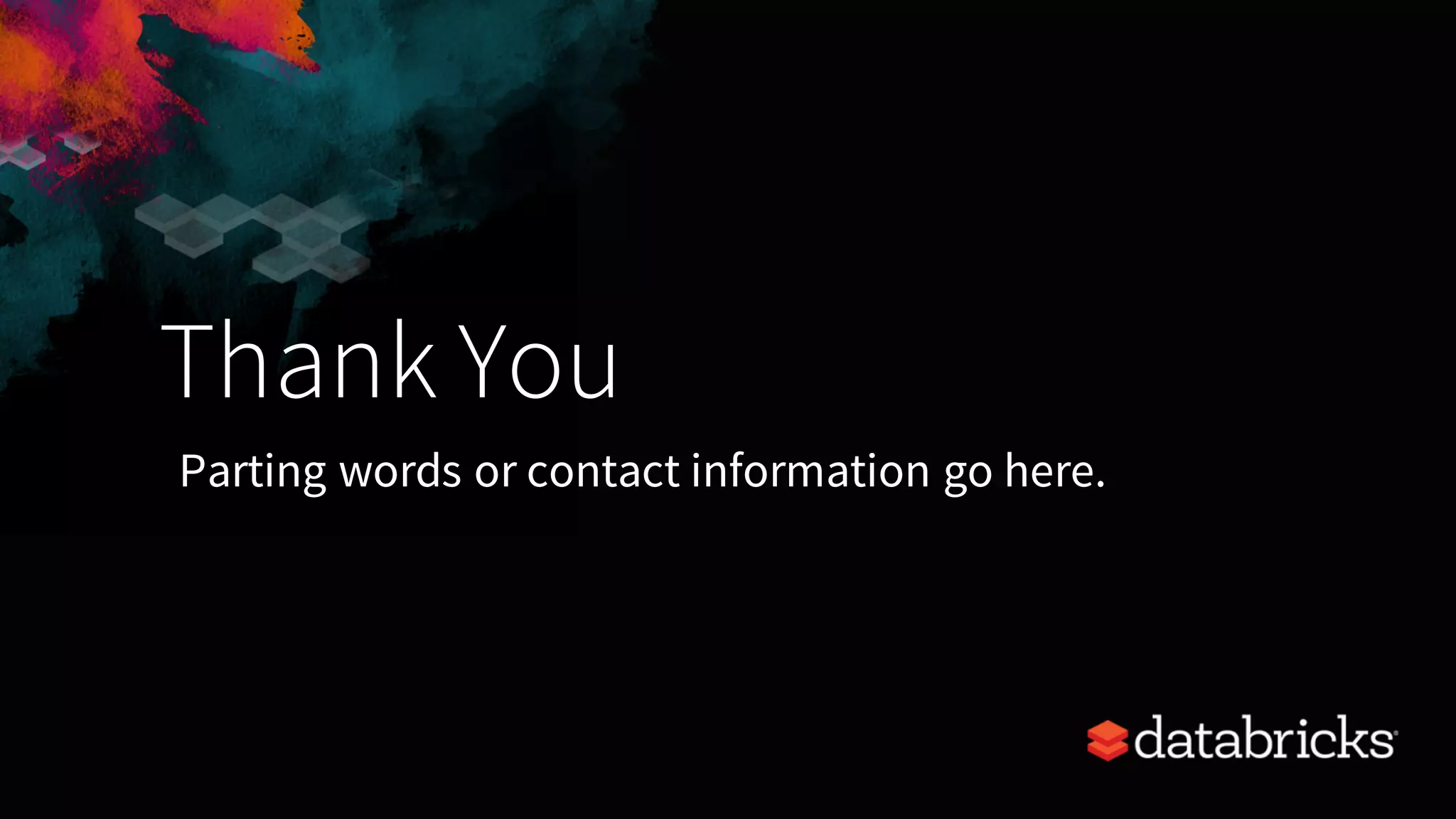The document outlines an introductory workshop on Apache Spark 2.x hosted by Databricks, covering key concepts such as DataFrames, Datasets, and Spark SQL, alongside a practical workshop experience. It explains the evolution of Apache Spark, focusing on its architecture and features introduced in version 2.x, including improvements in performance and the unified APIs. Additionally, the workshop addresses structured streaming concepts, providing insights into building robust streaming applications.
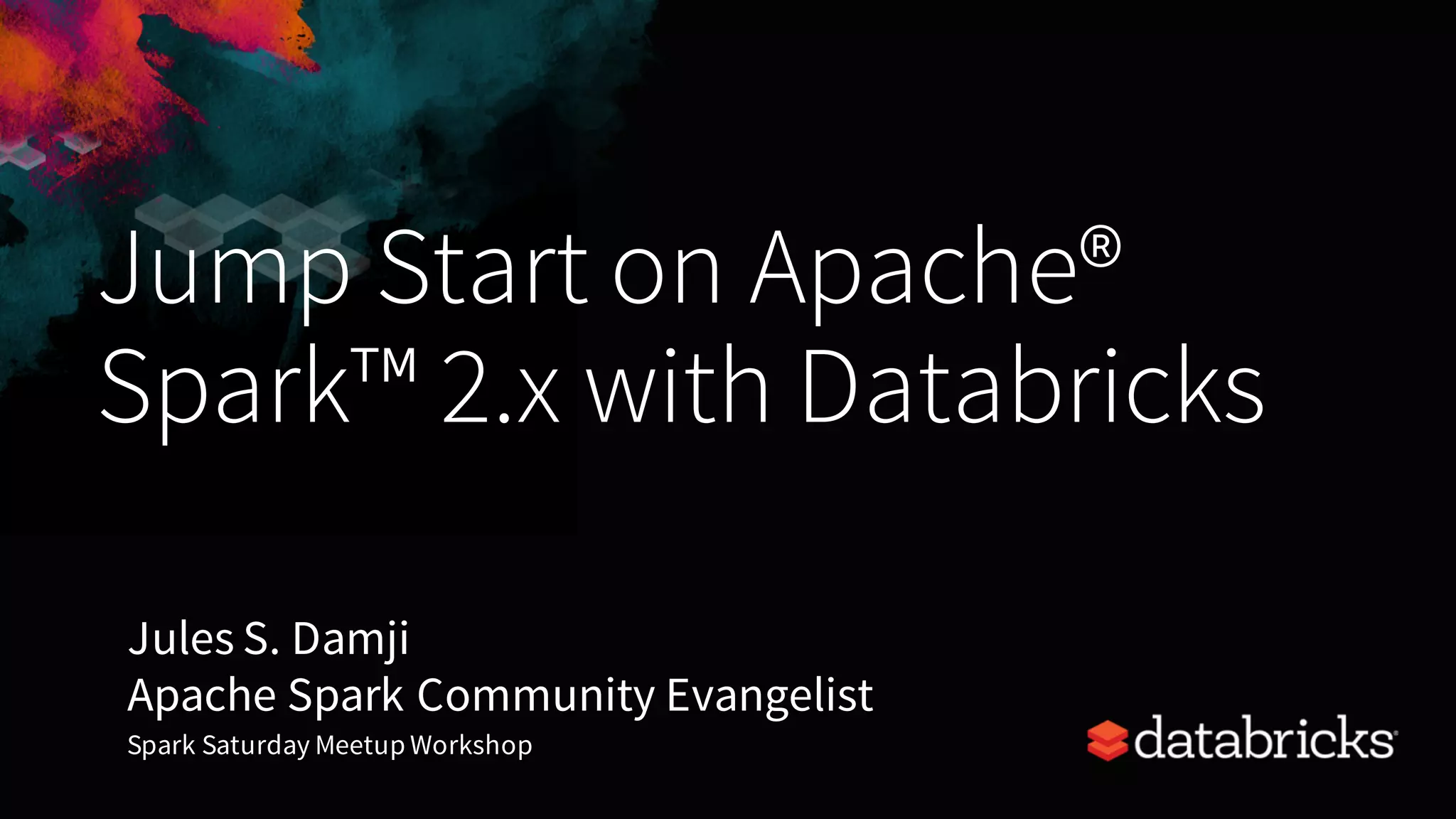
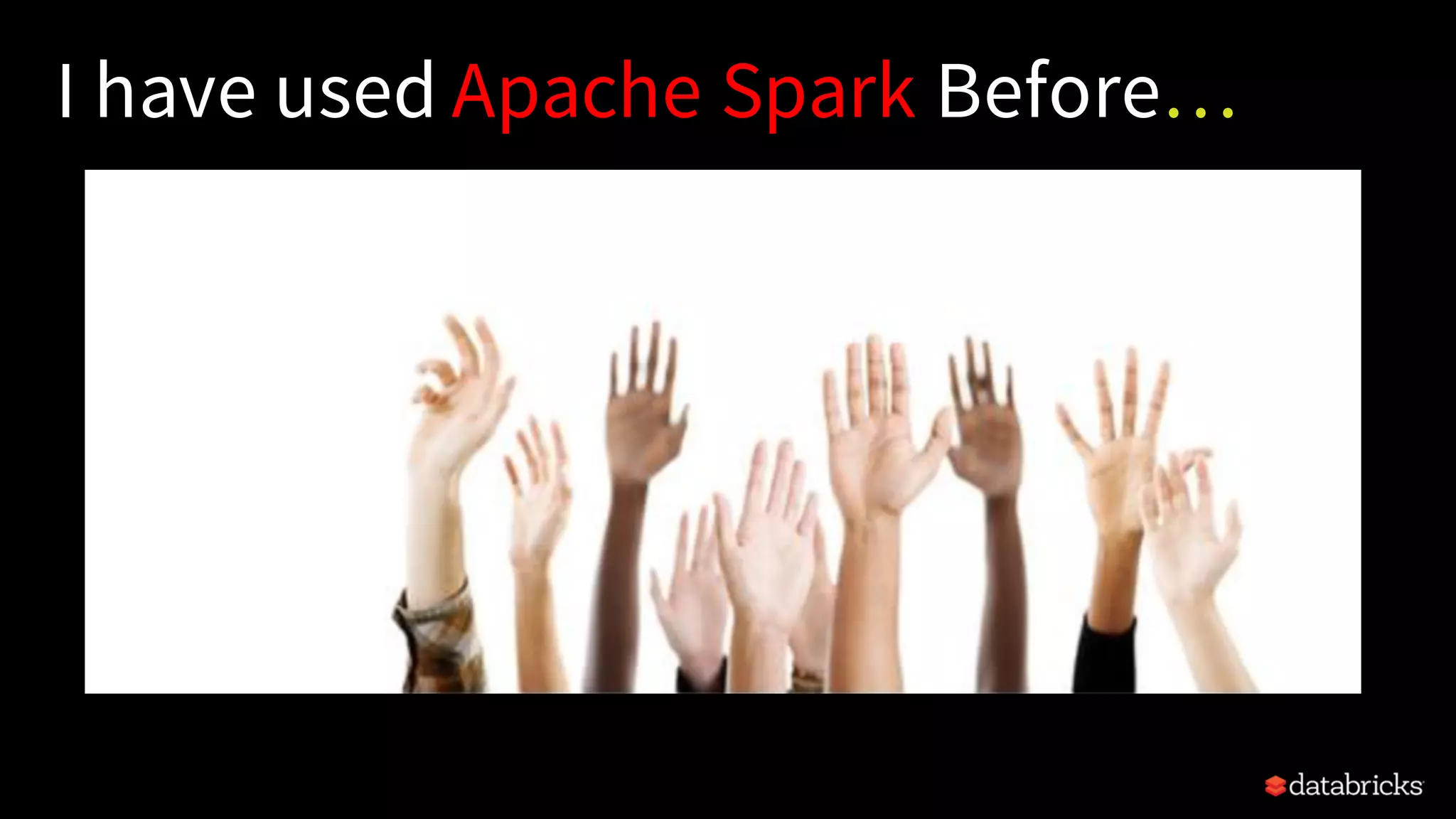
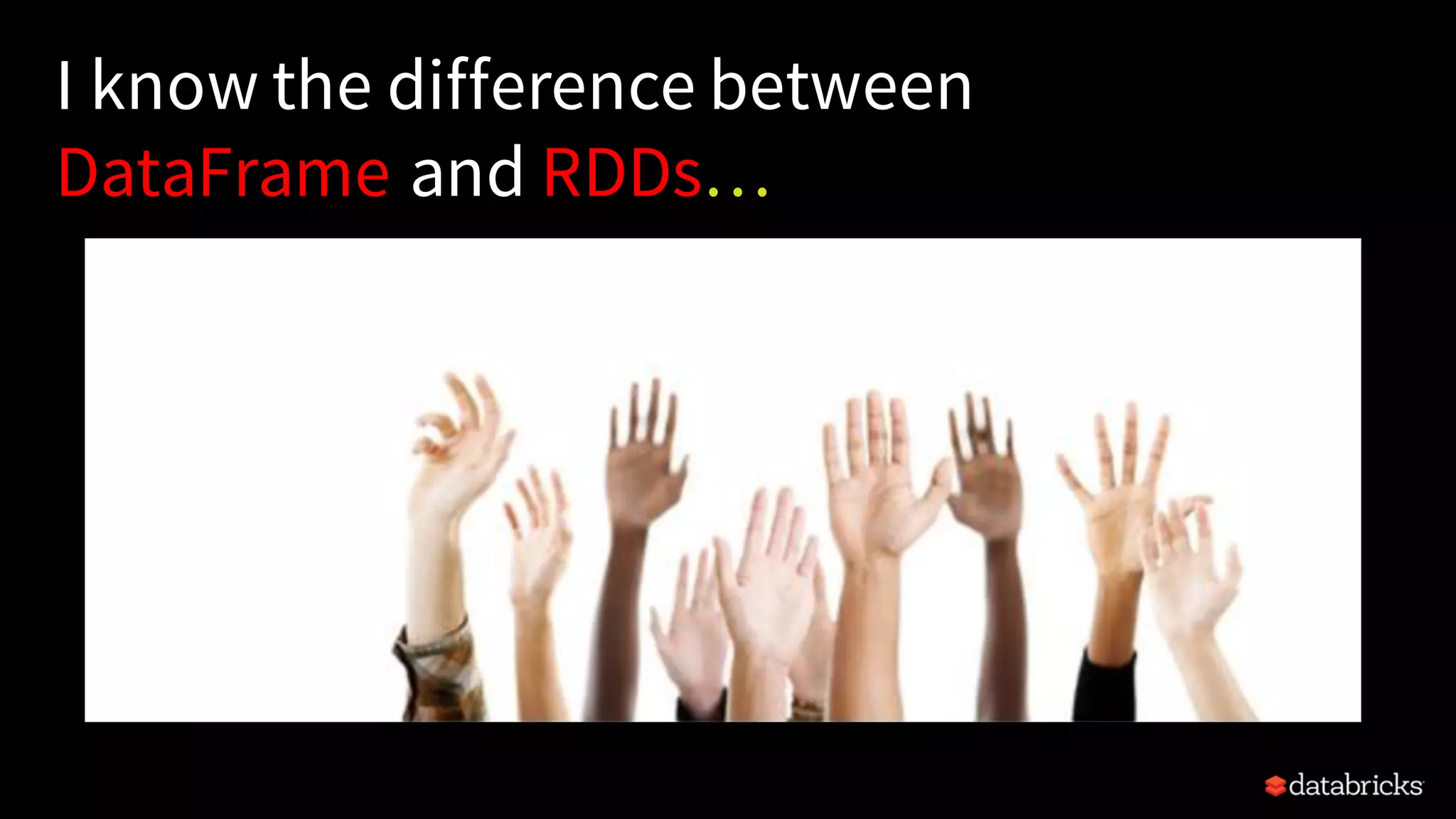

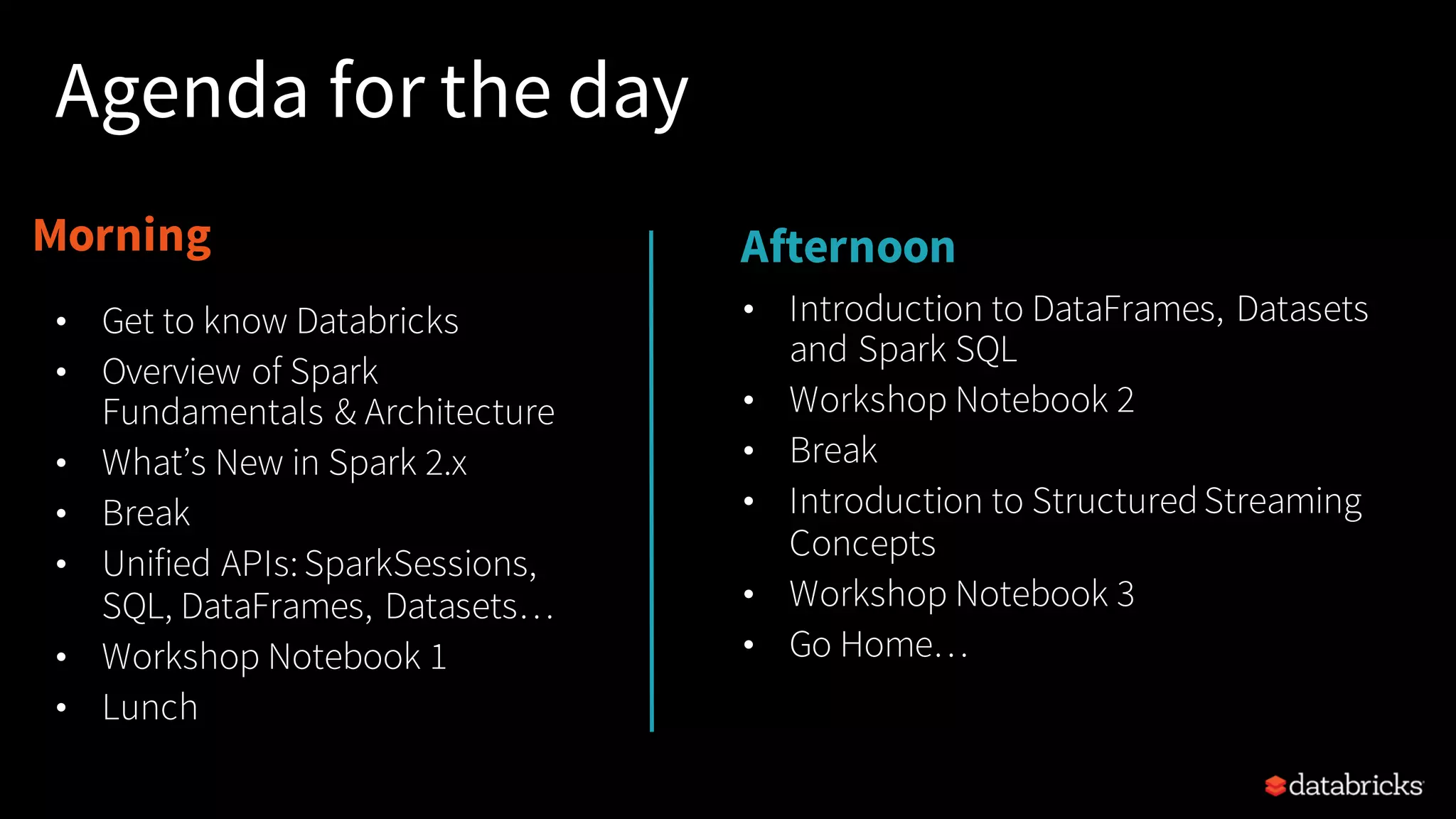
![Get to know Databricks 1. Get http://databricks.com/try-databricks 2. https://github.com/dmatrix/spark-saturday 3. [OR] ImportNotebook: http://dbricks.co/ss_wkshp0](https://image.slidesharecdn.com/sparkstaturdayworkshop-170730005213/75/Jumpstart-on-Apache-Spark-2-2-on-Databricks-6-2048.jpg)

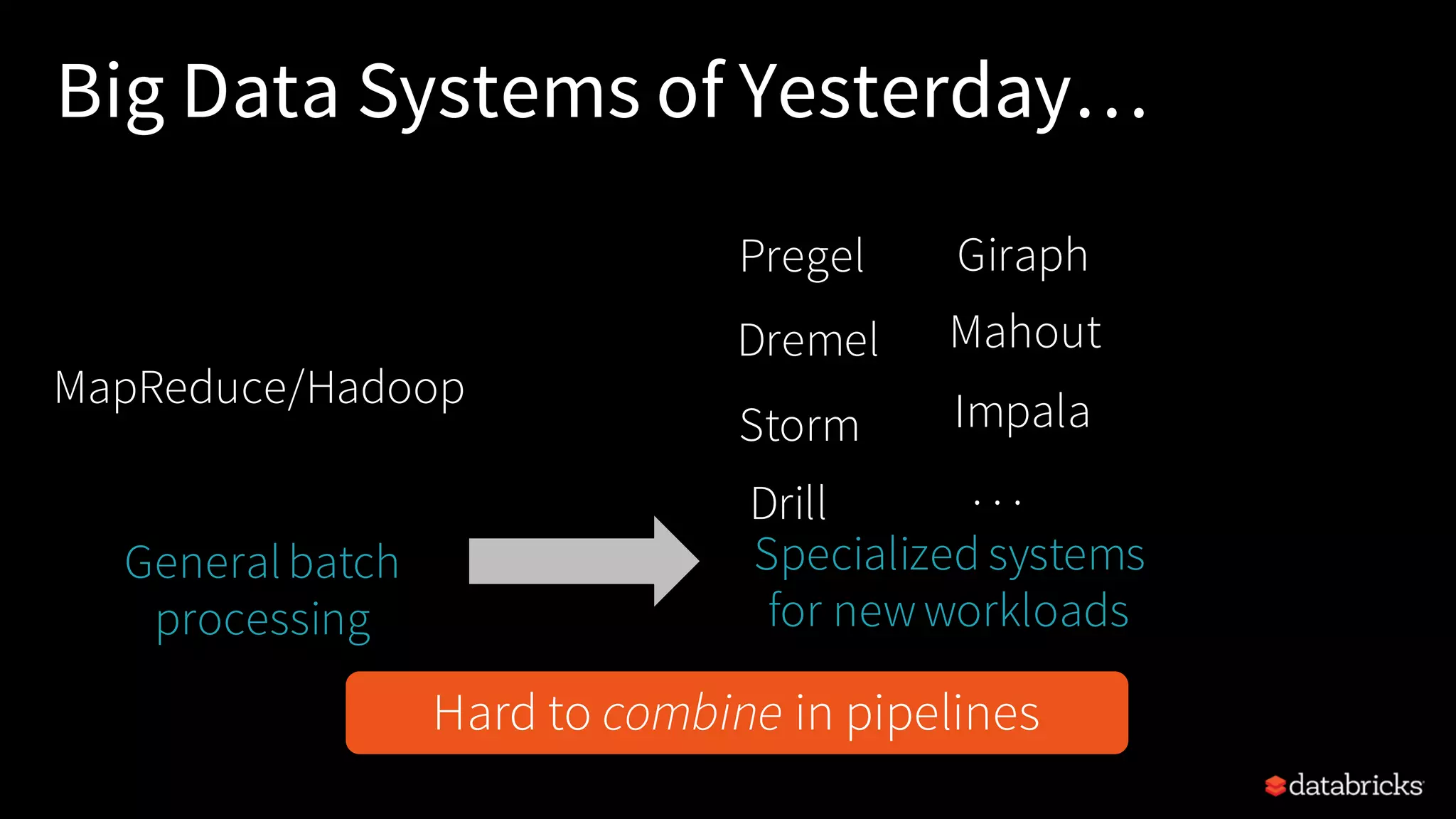
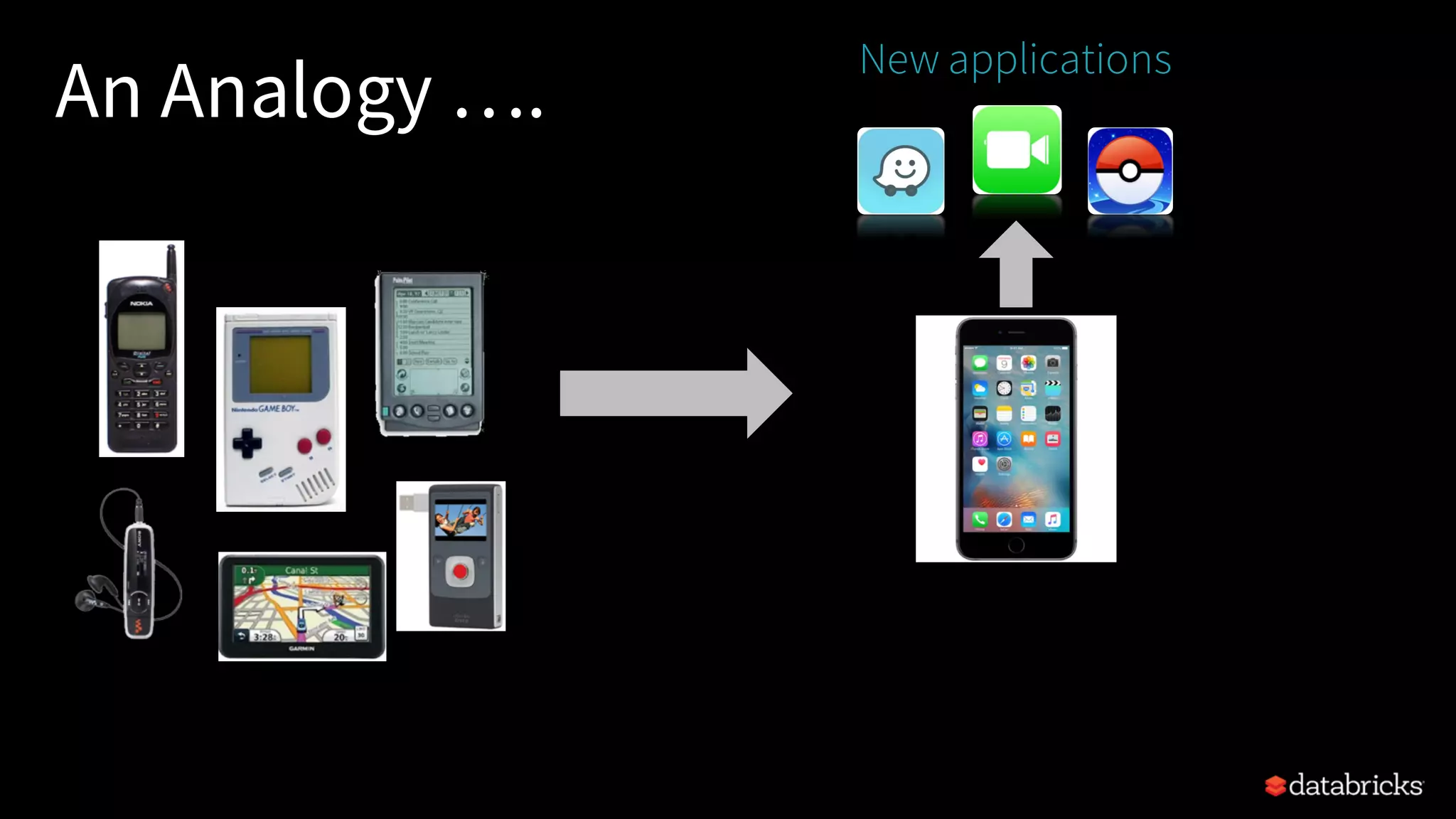

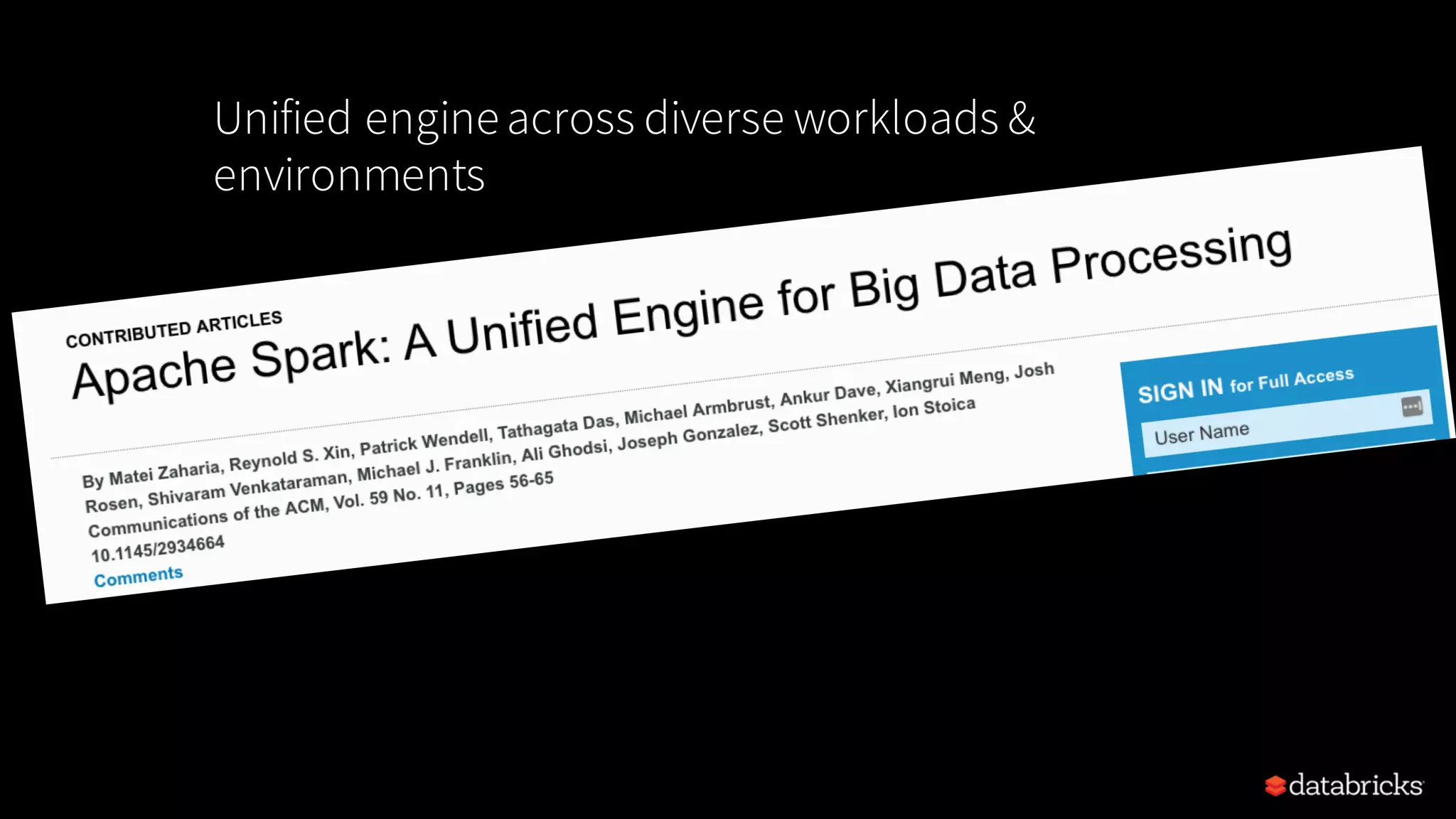

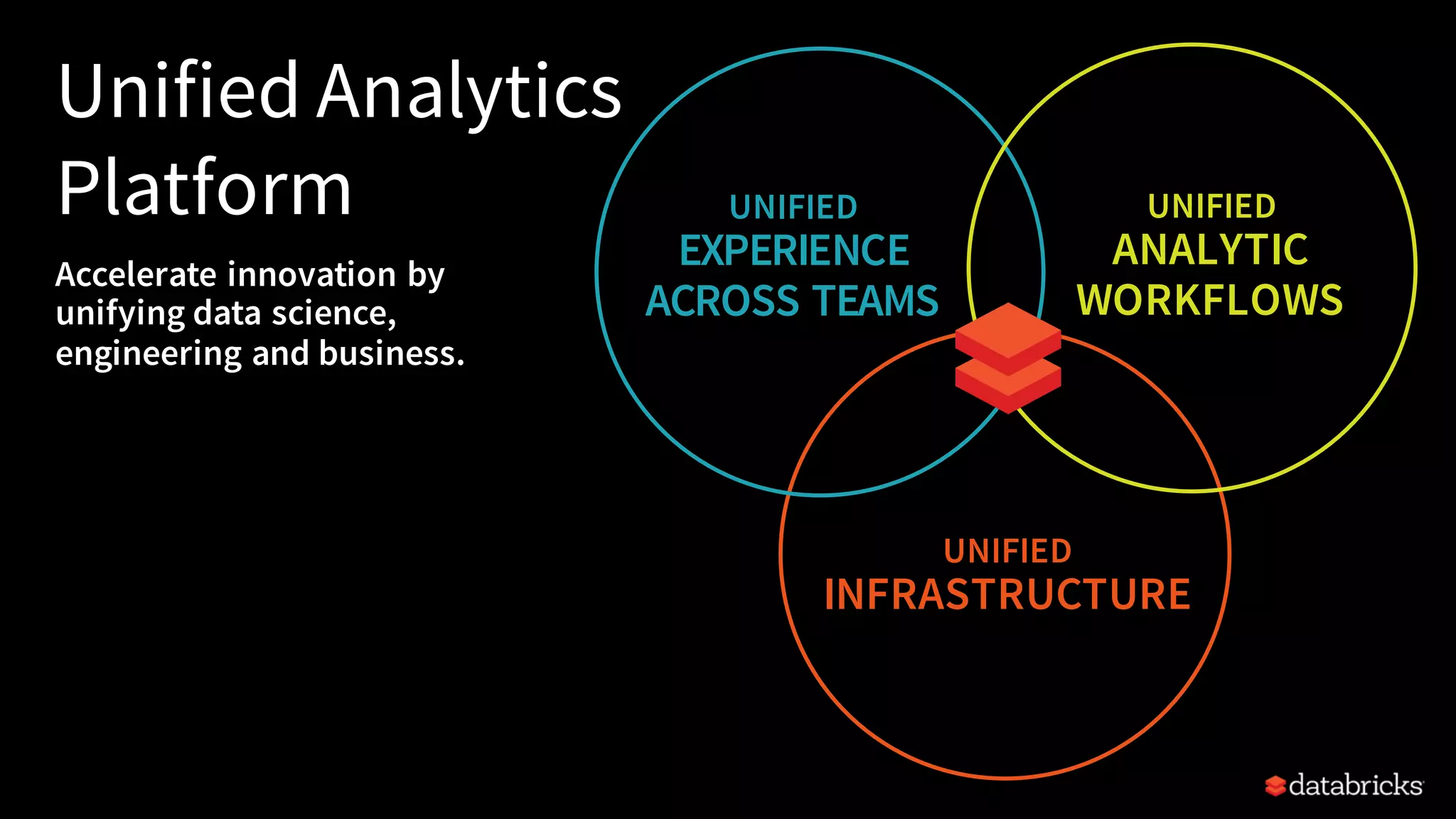
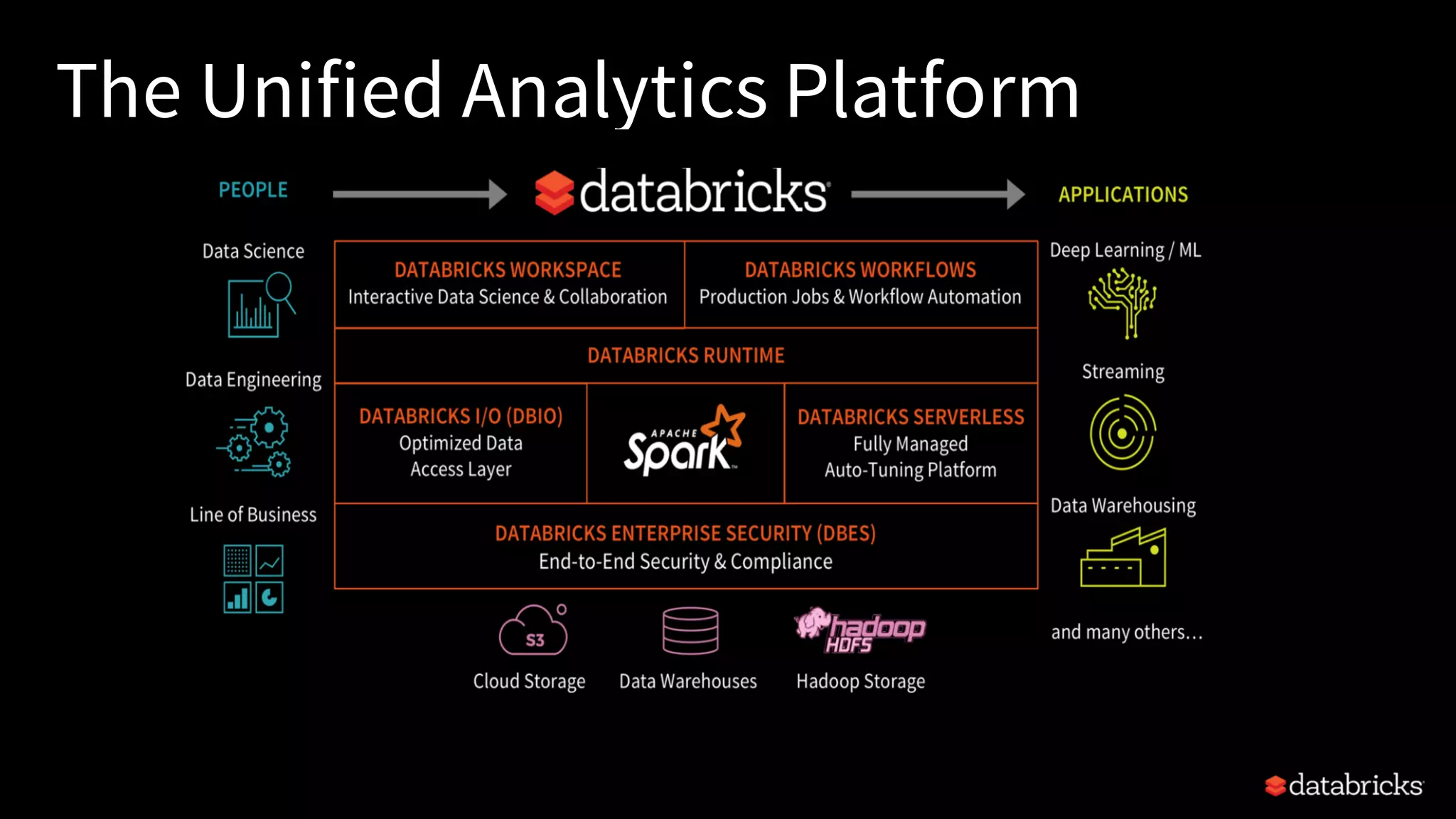
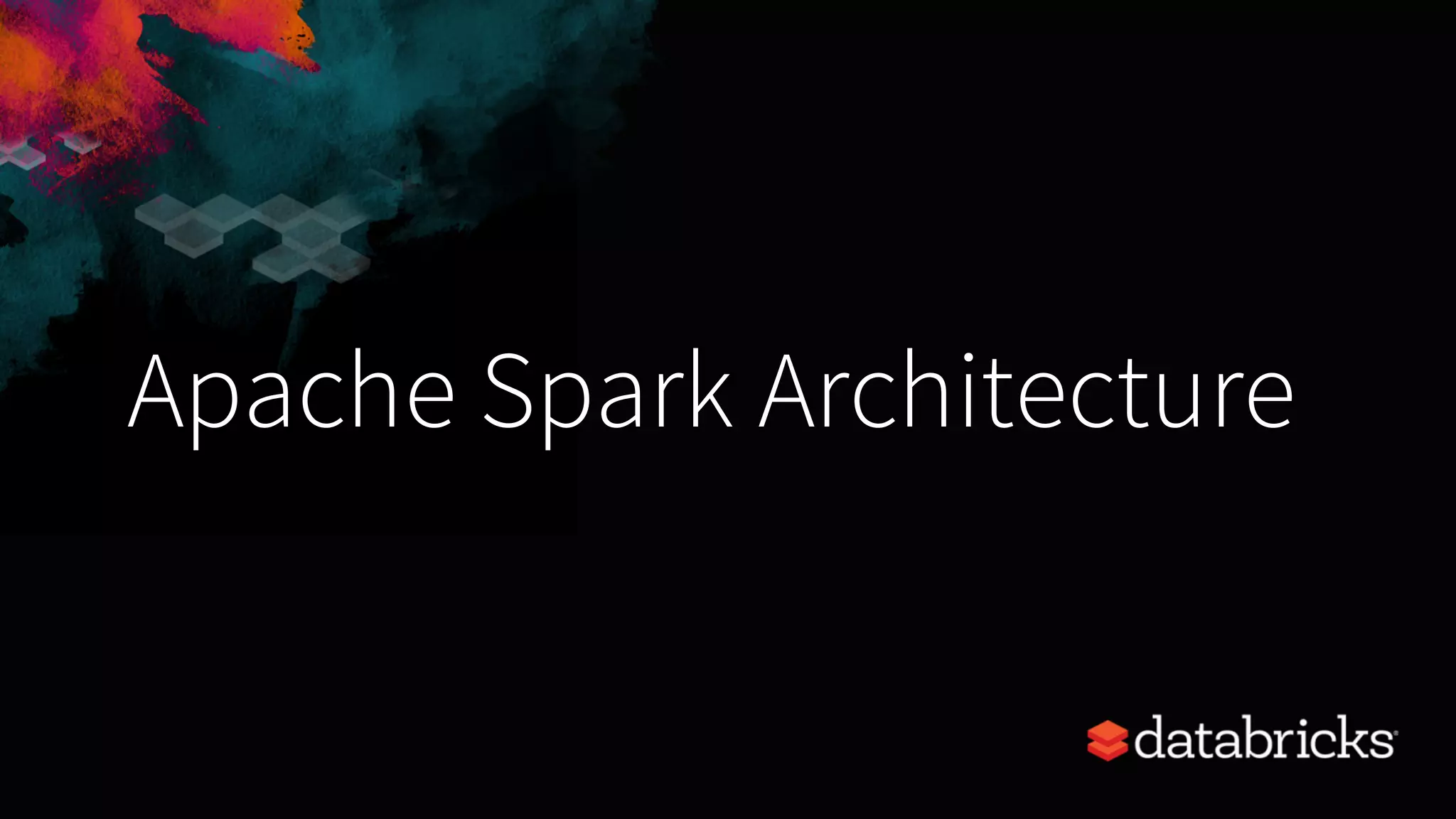

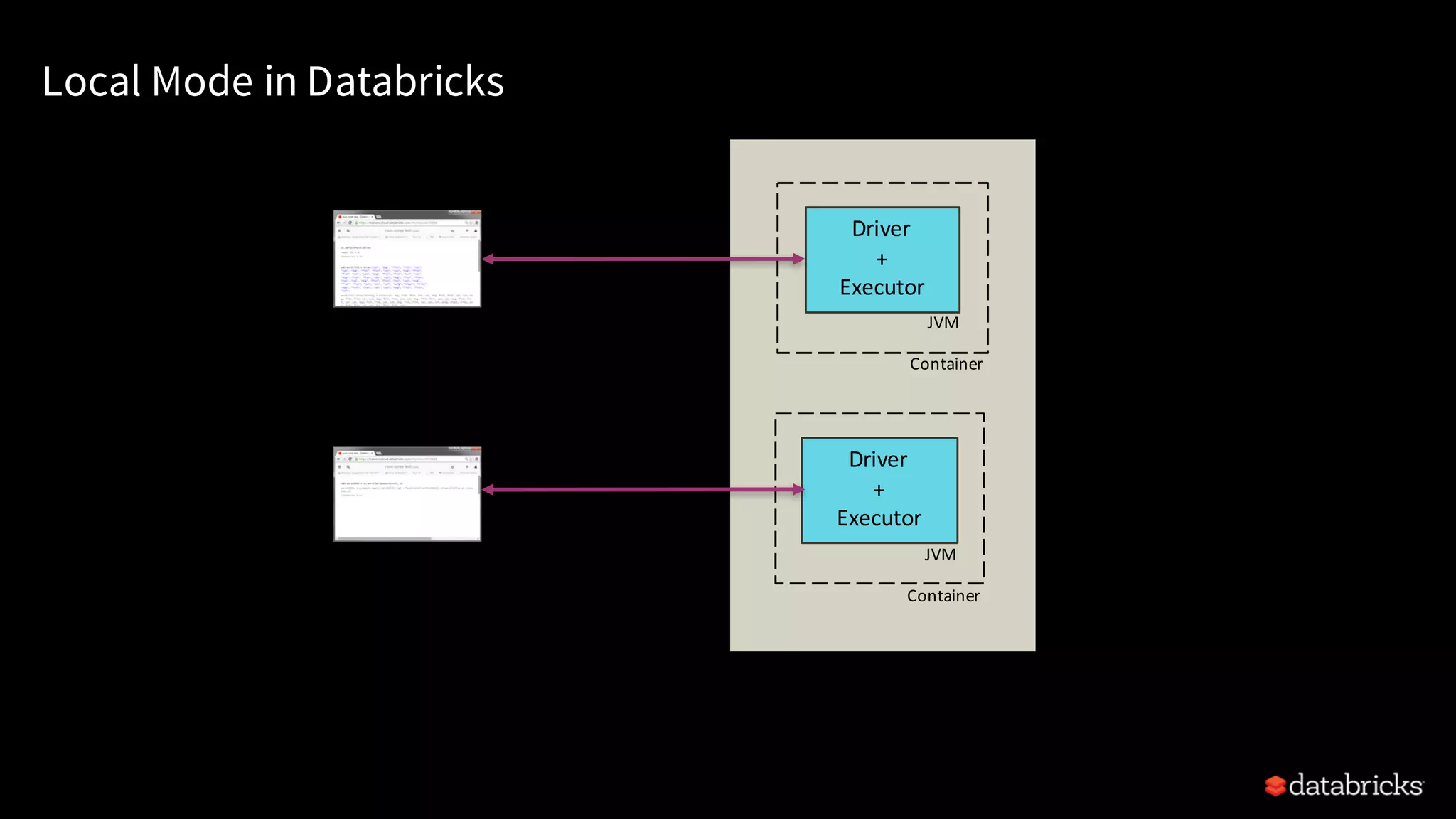
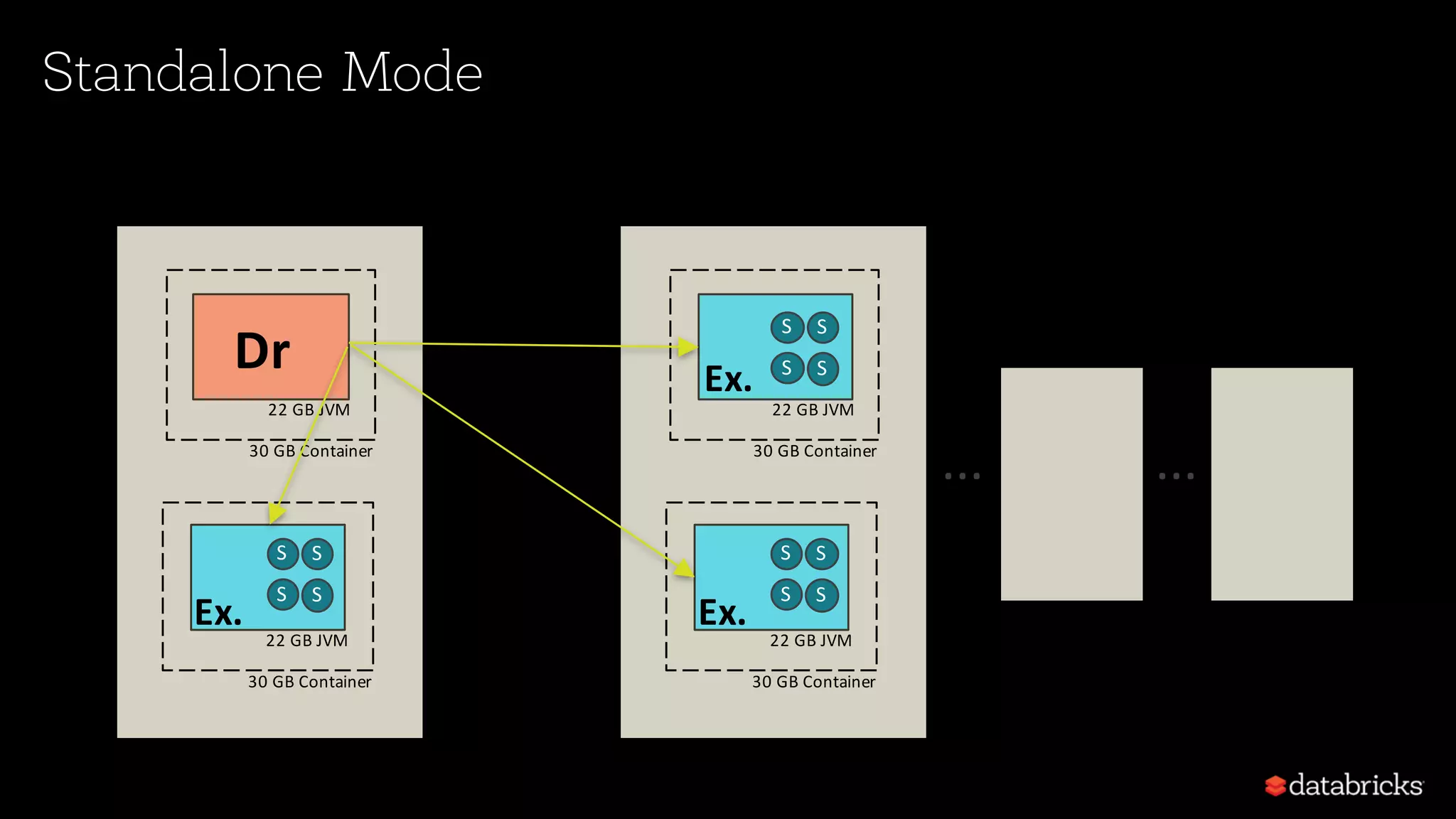
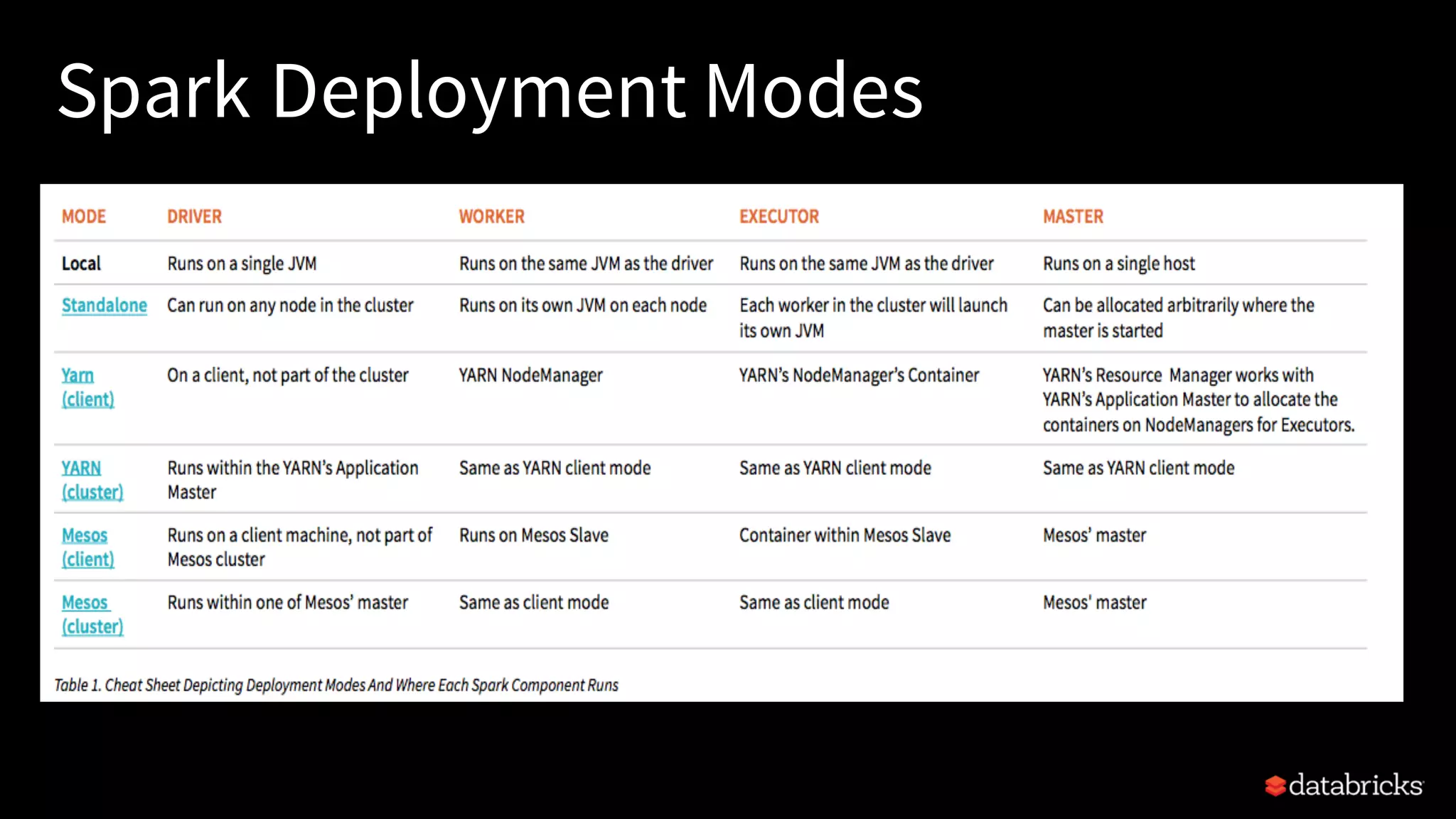

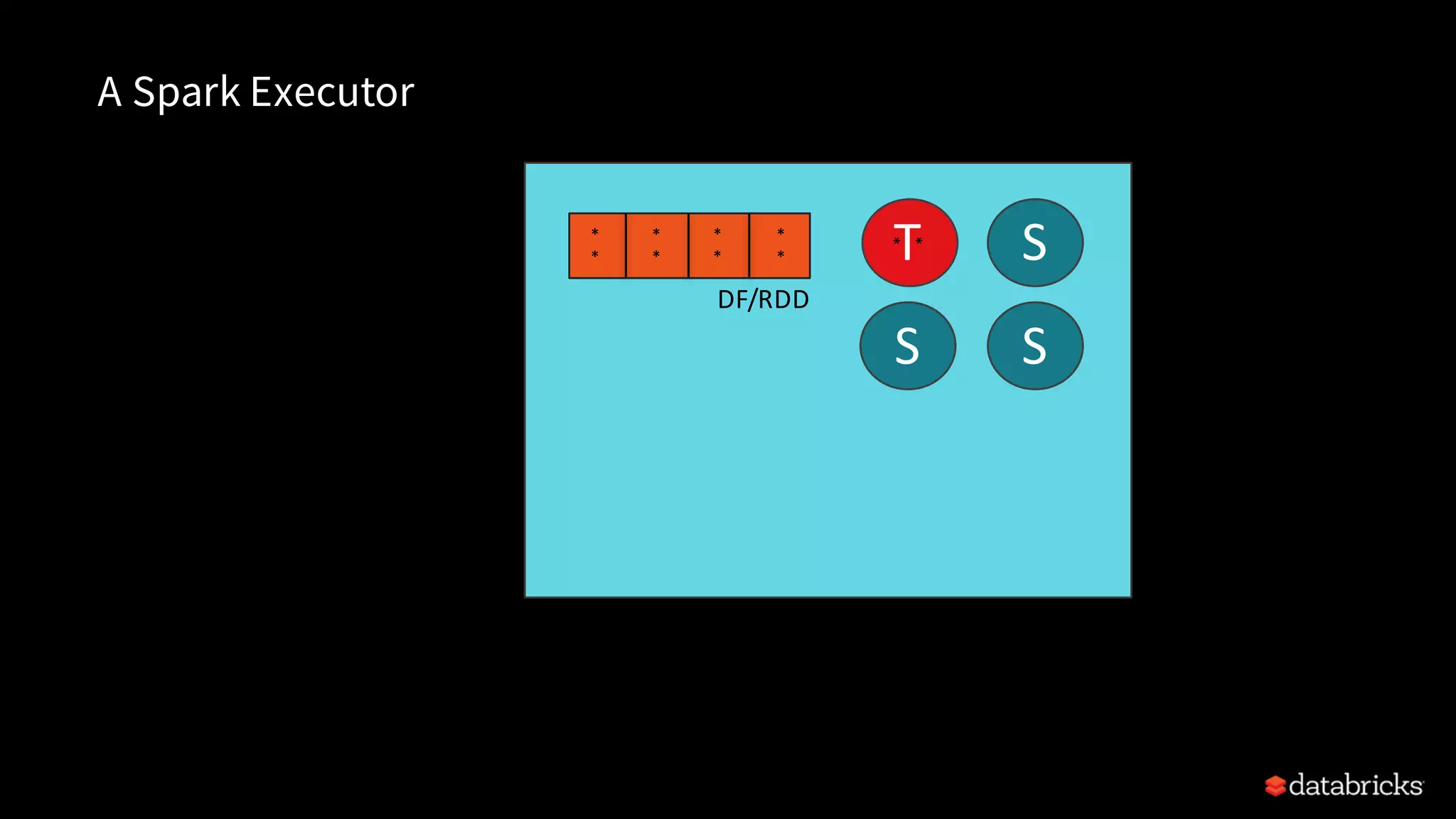
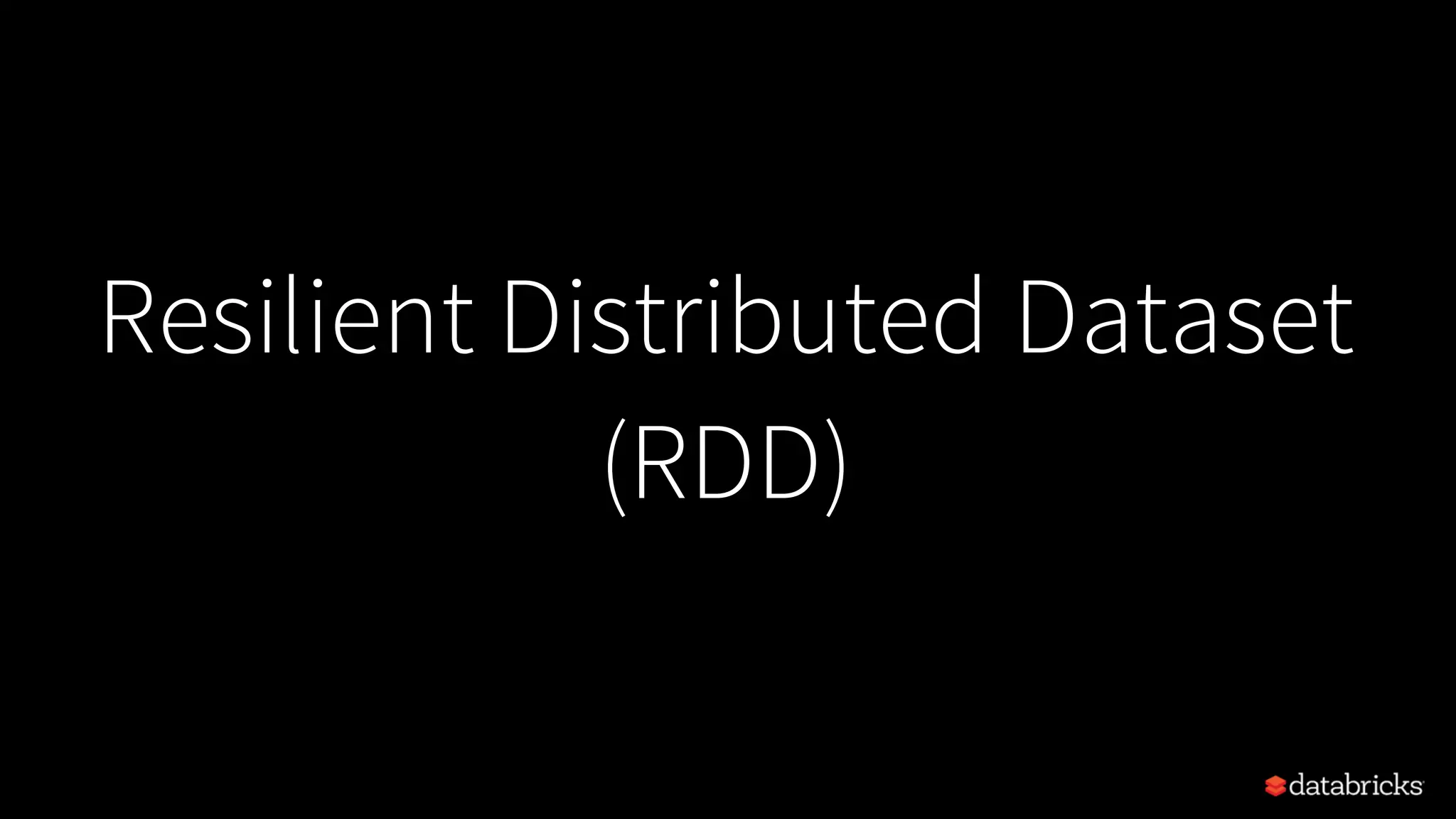

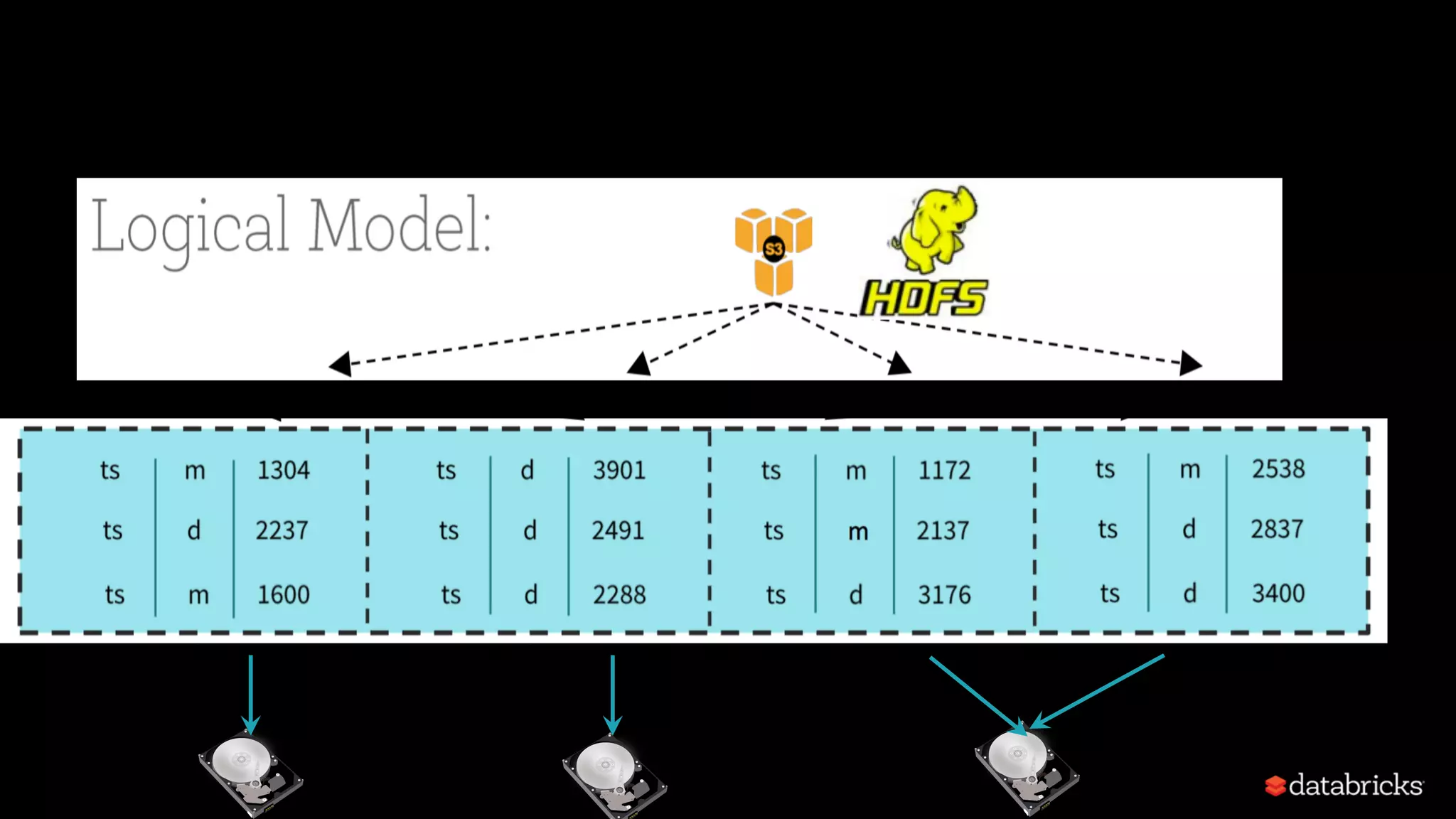
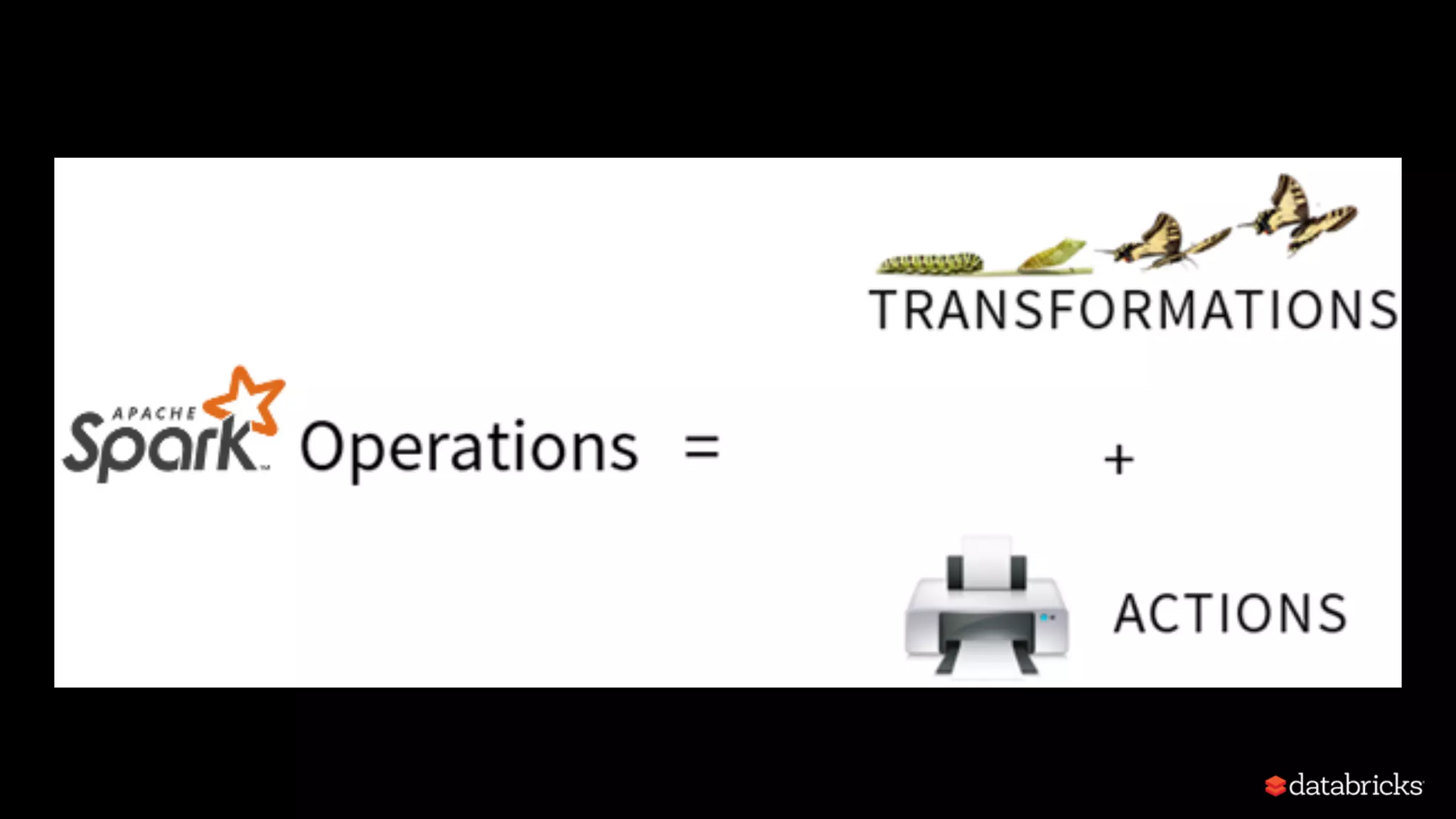





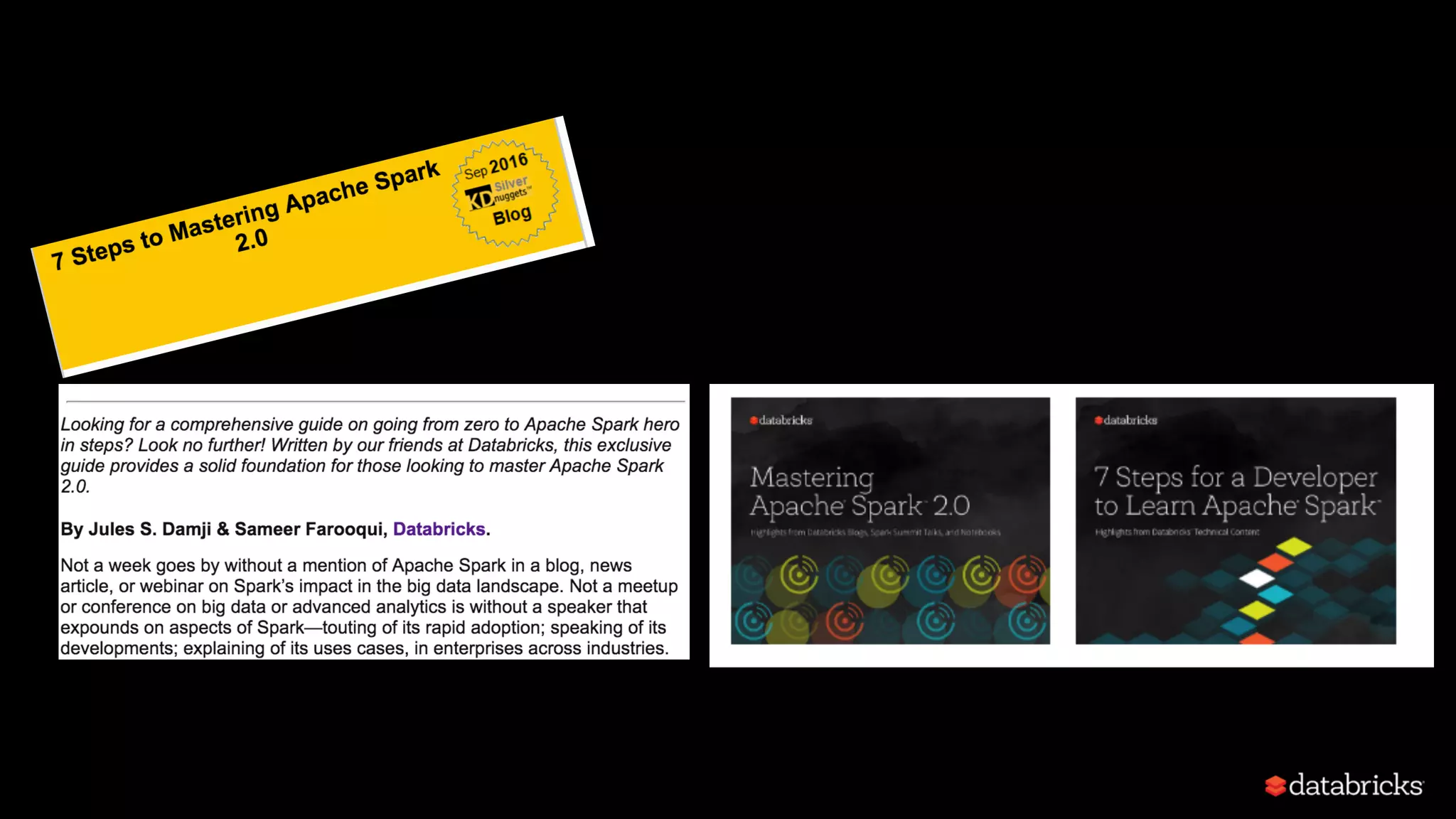
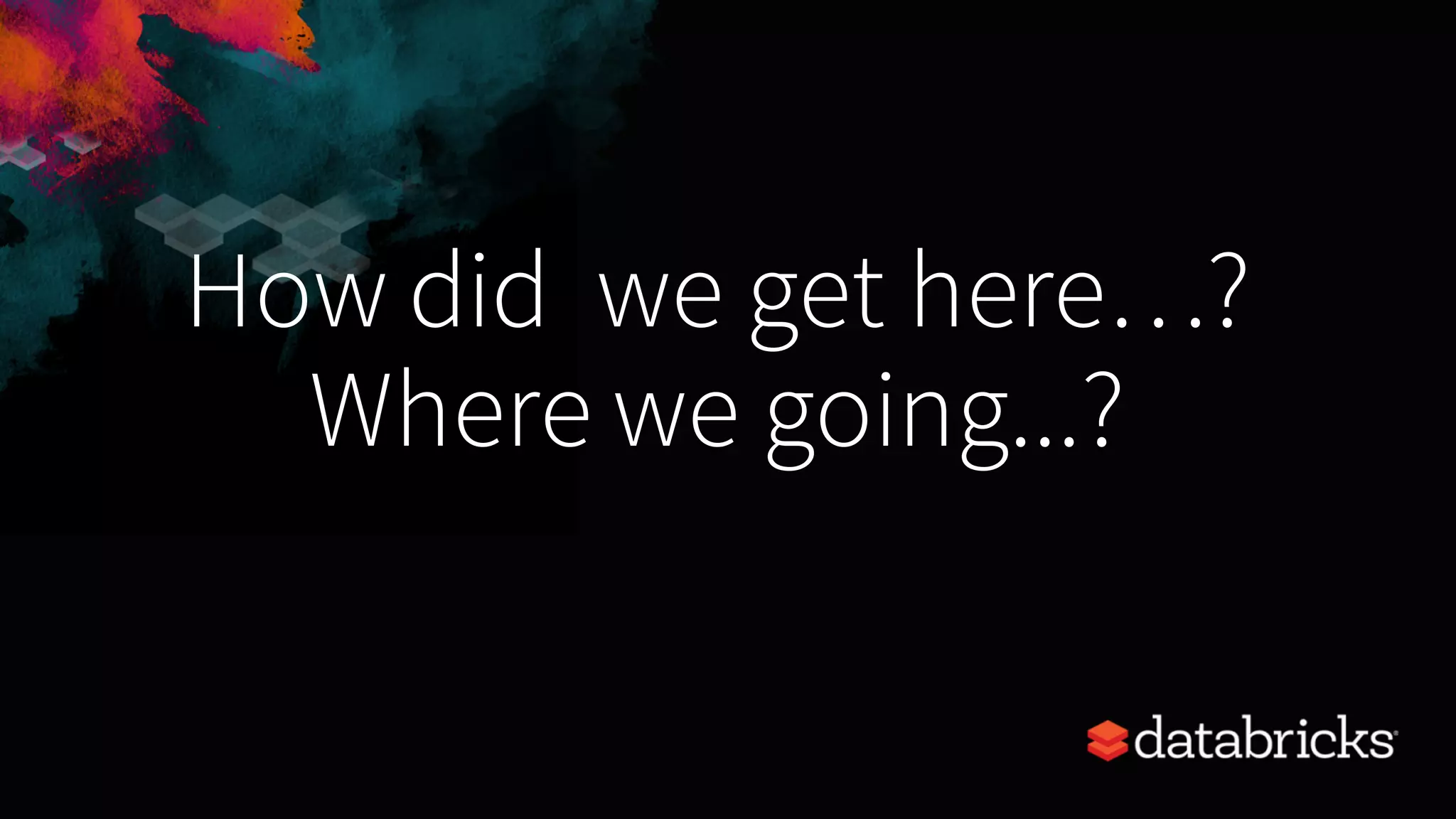
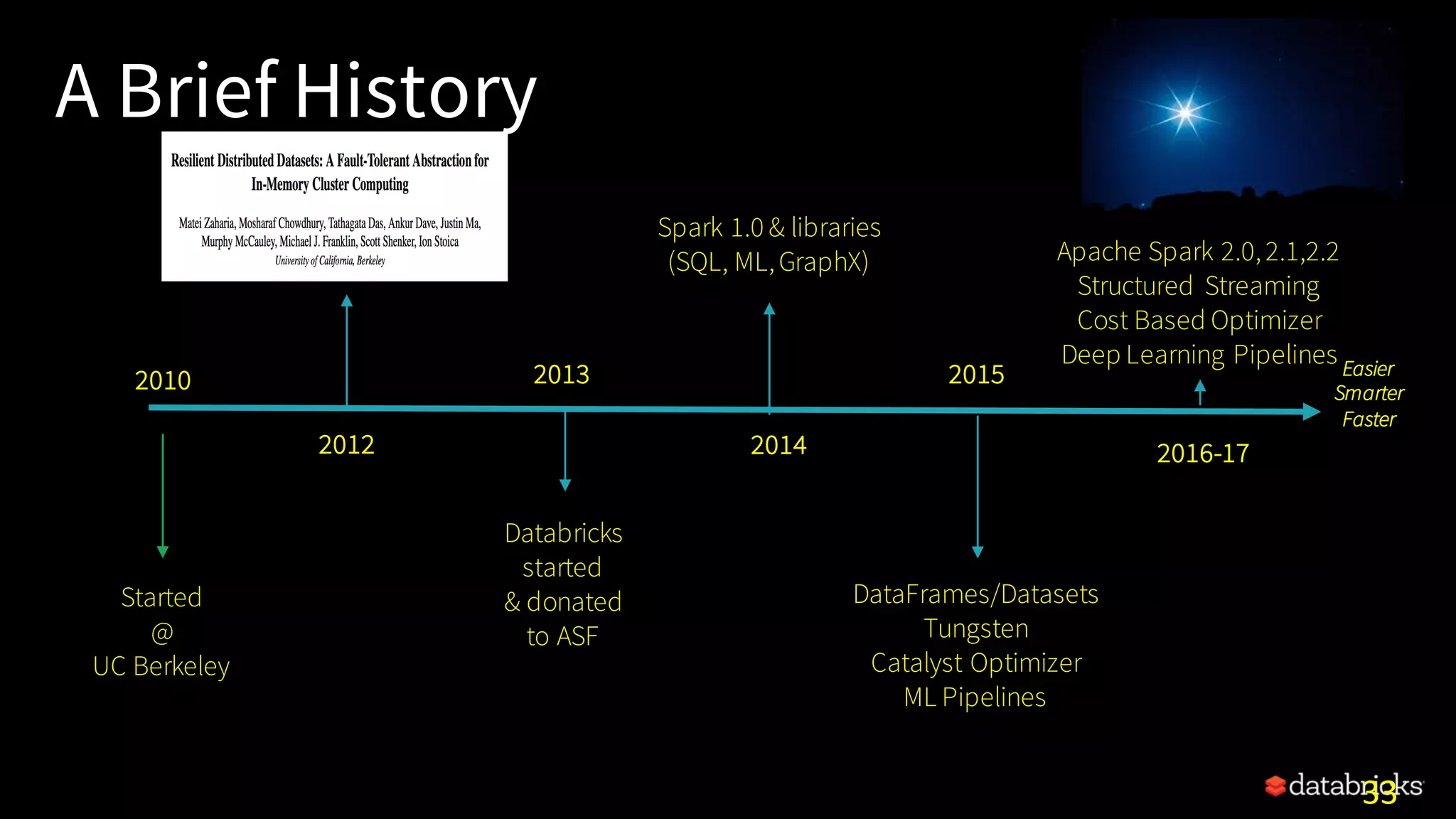
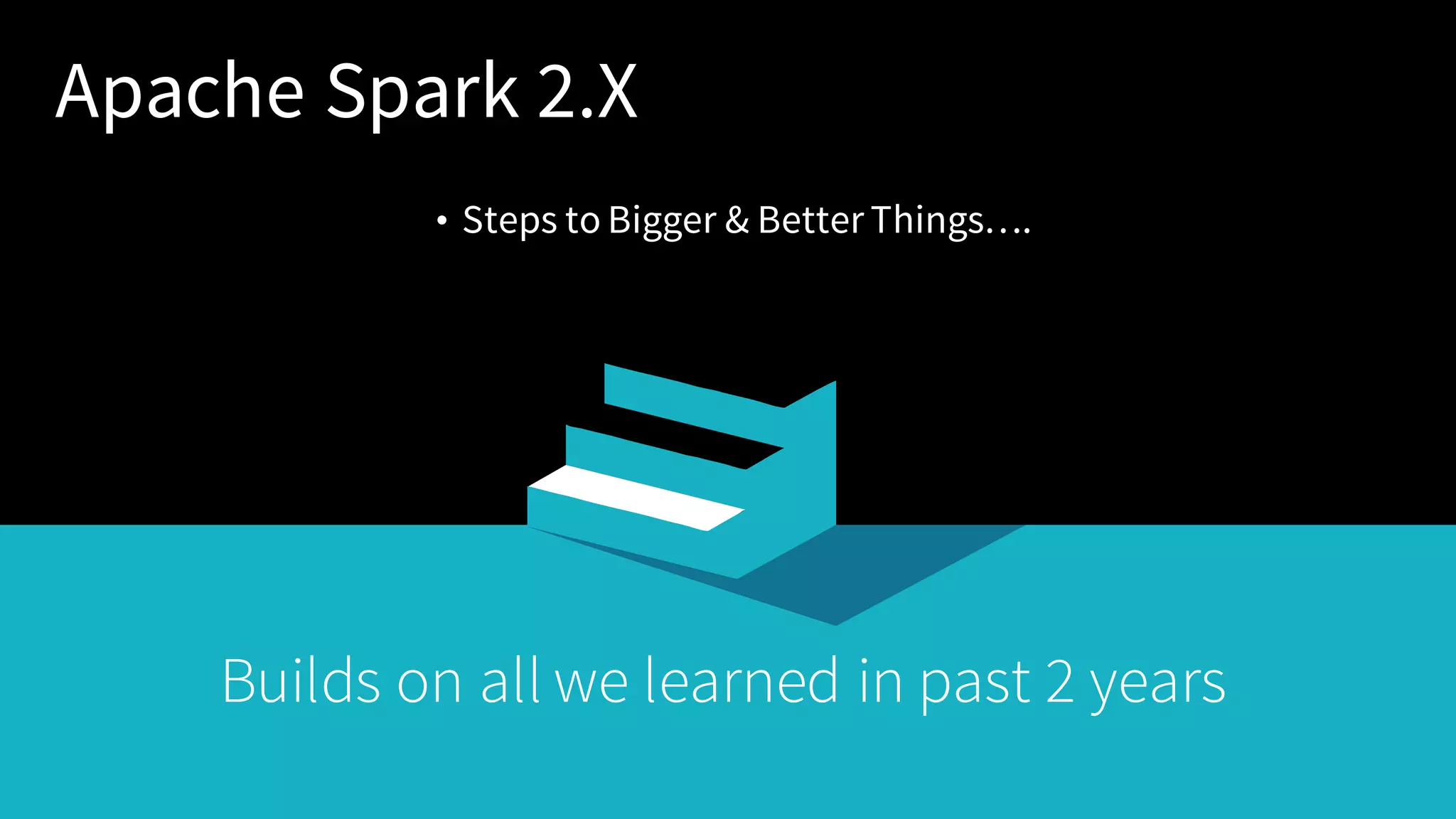
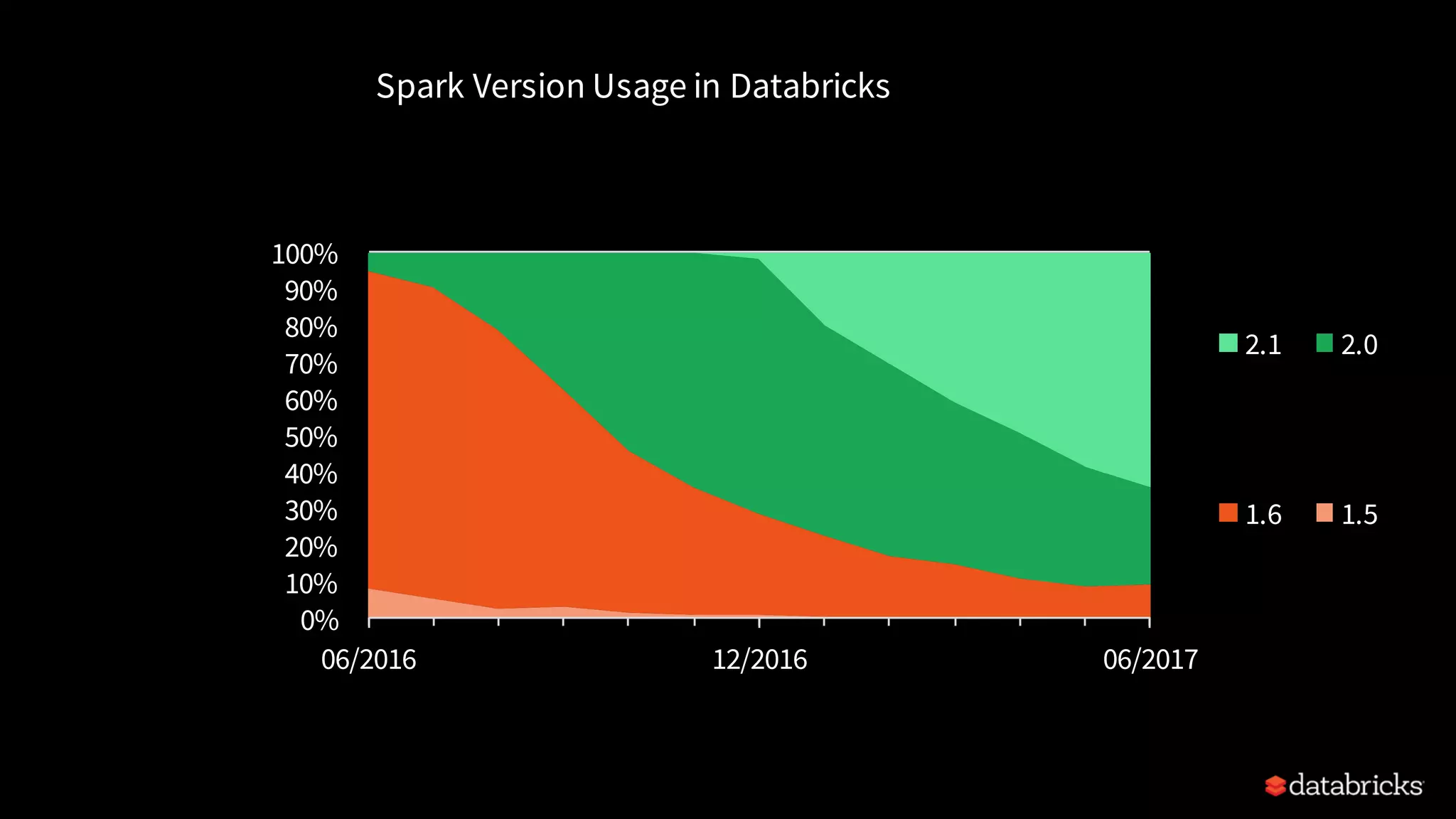


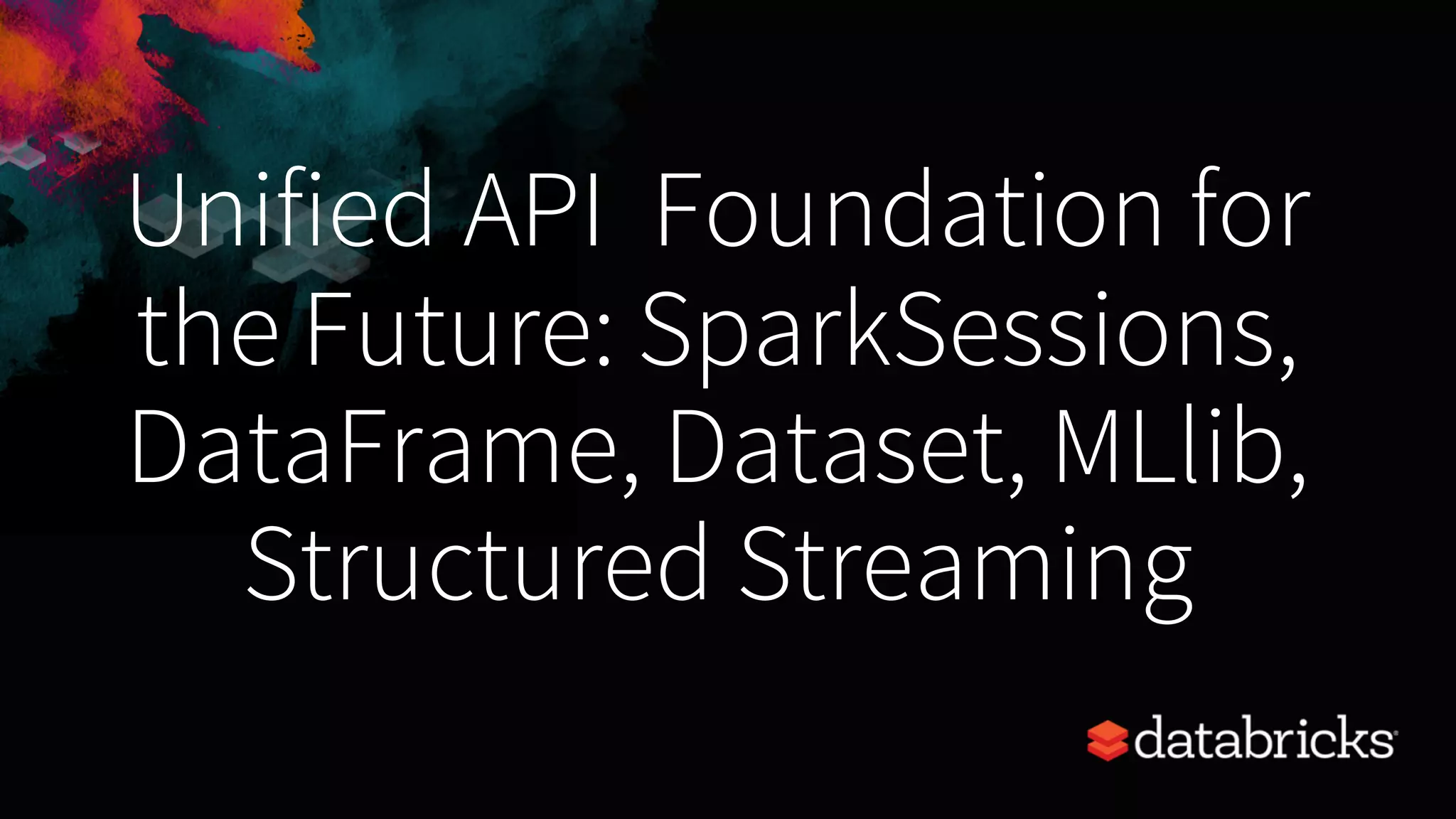
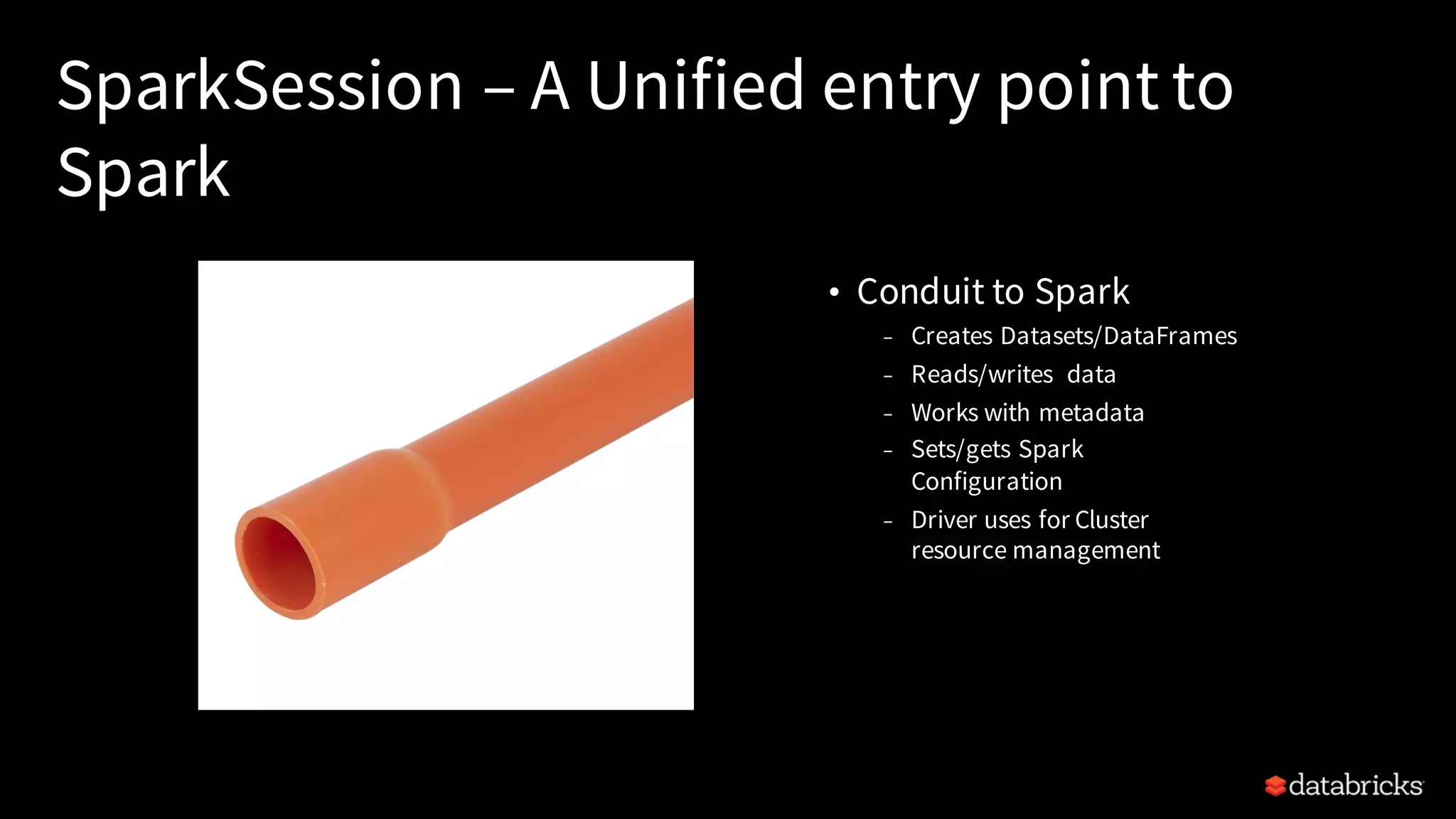
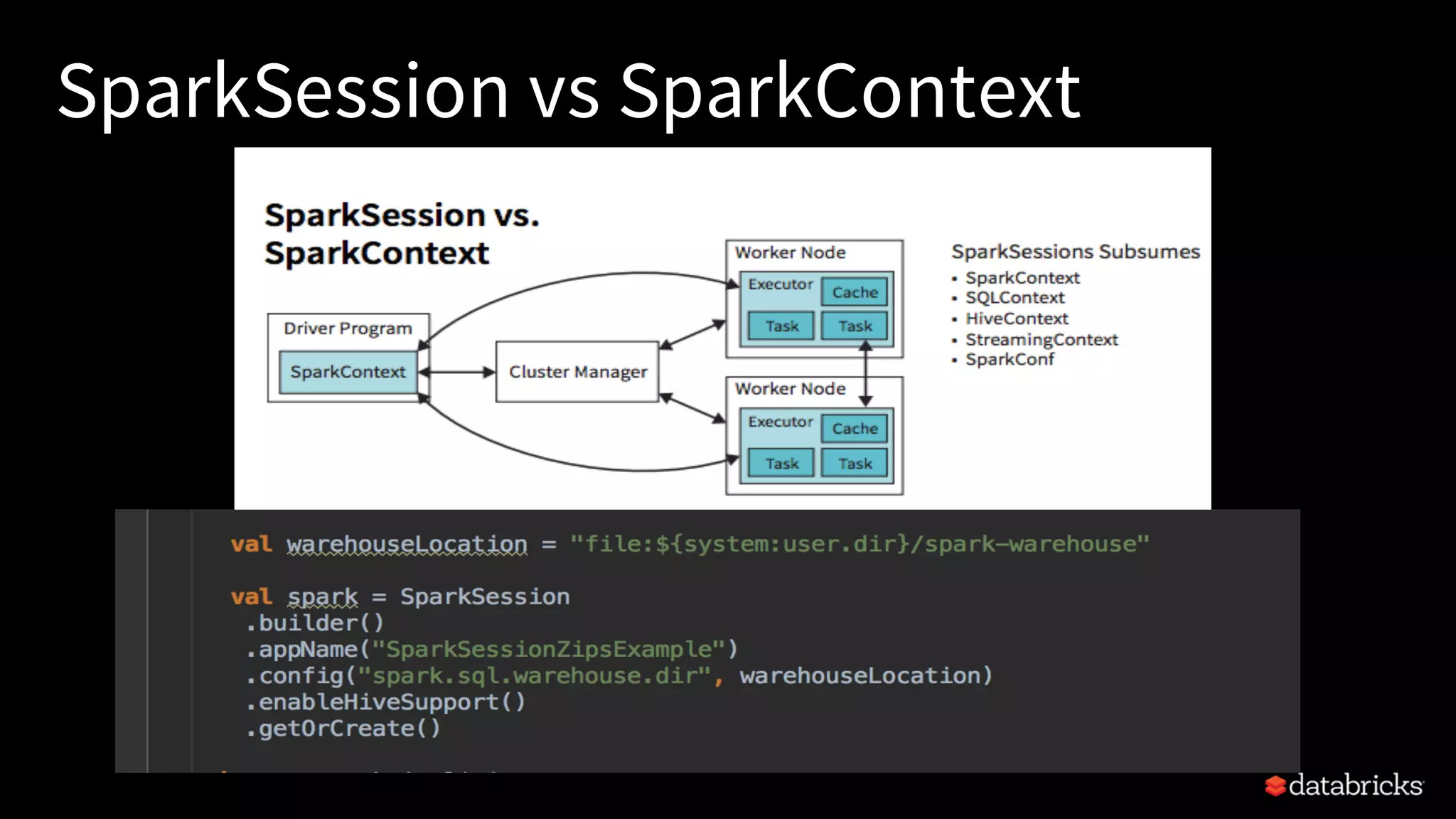
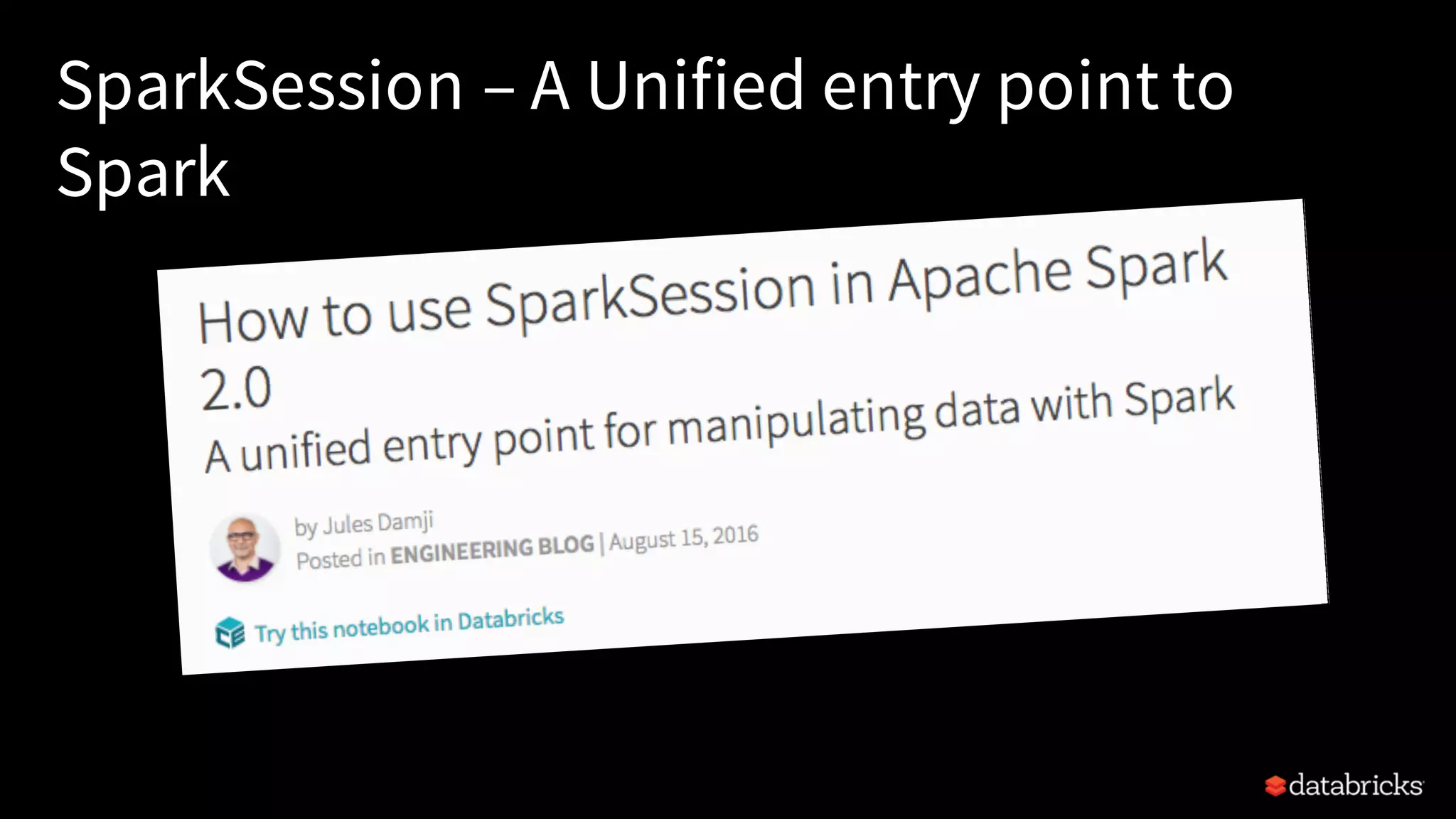
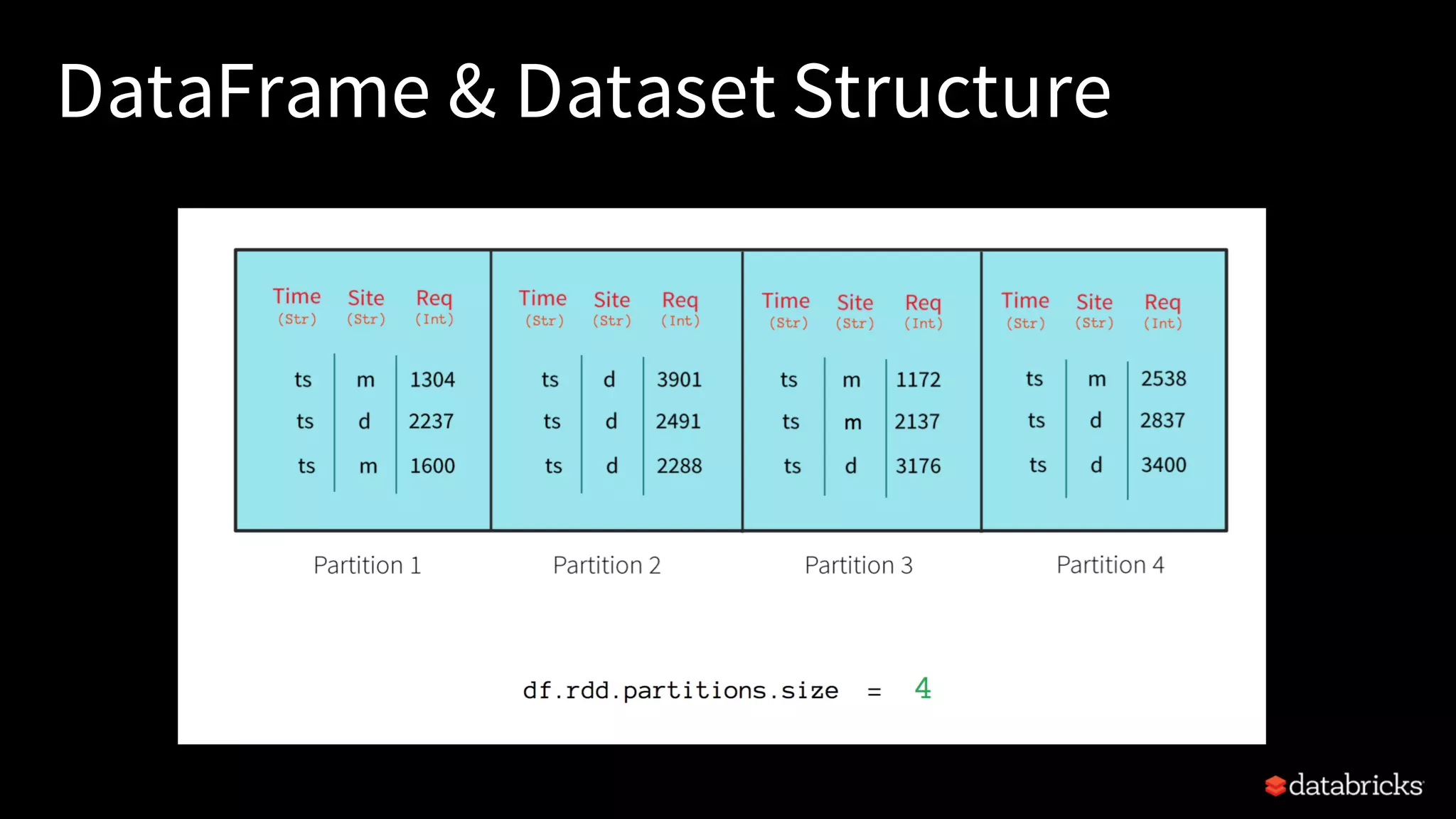

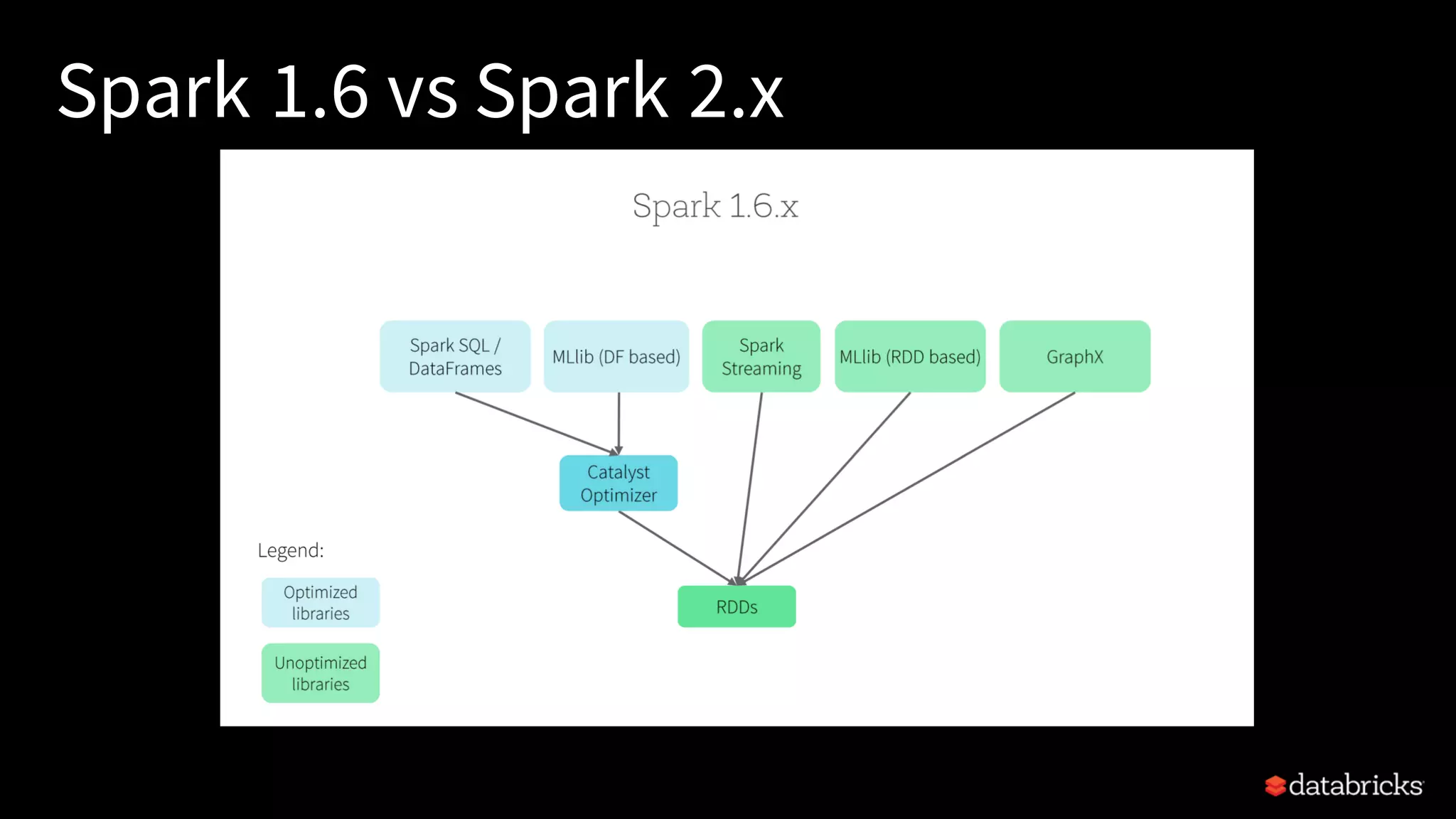
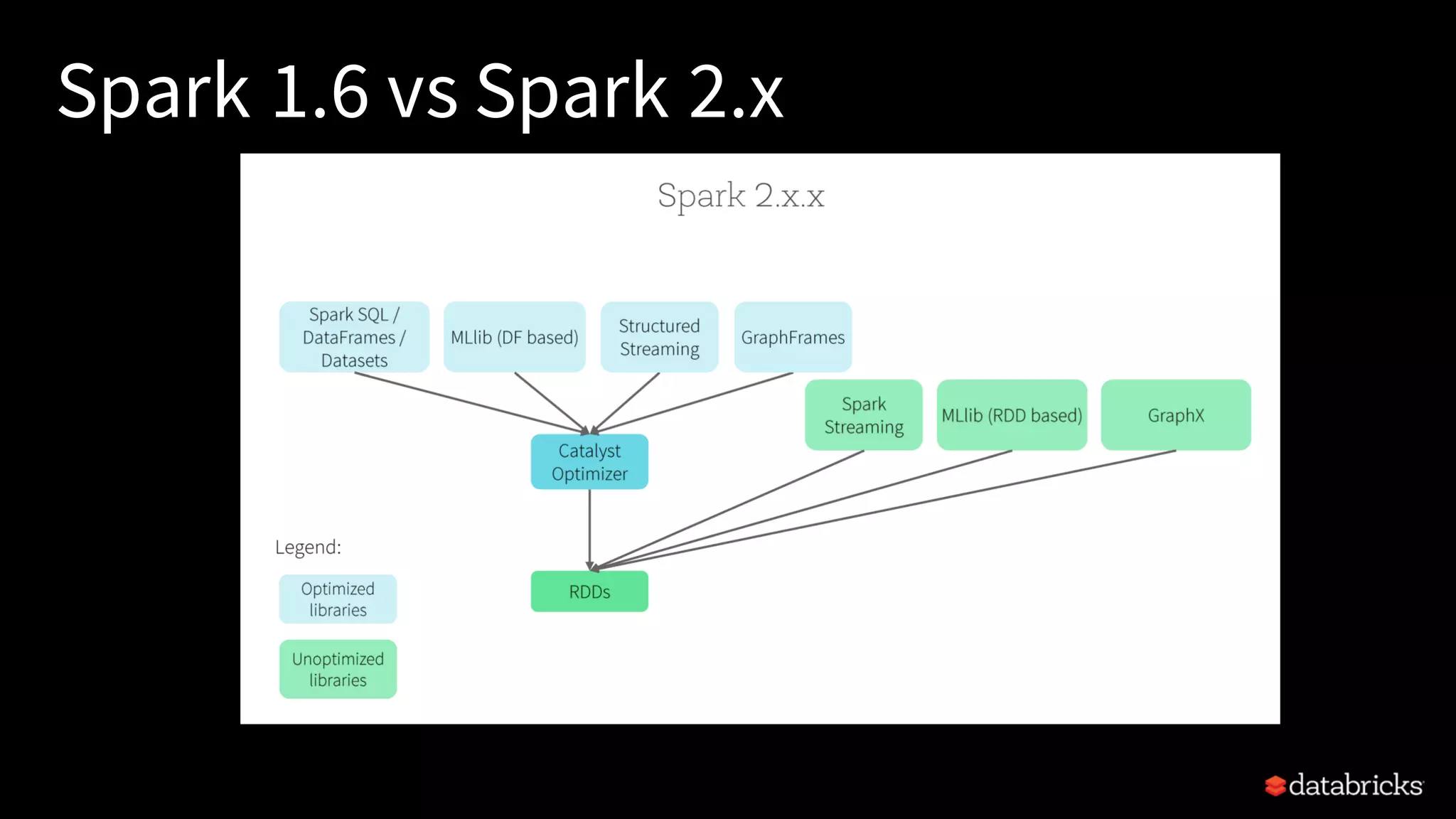
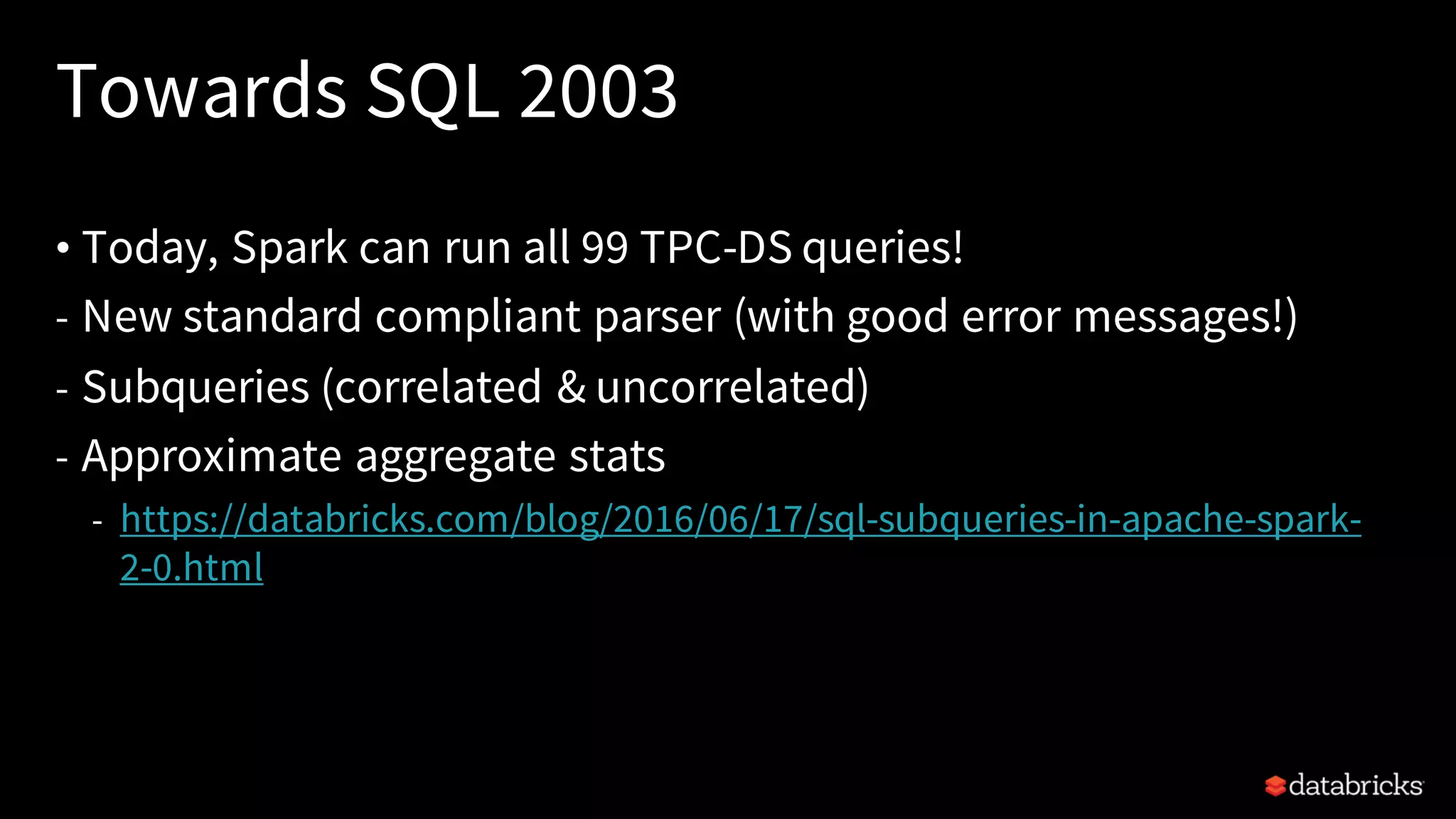
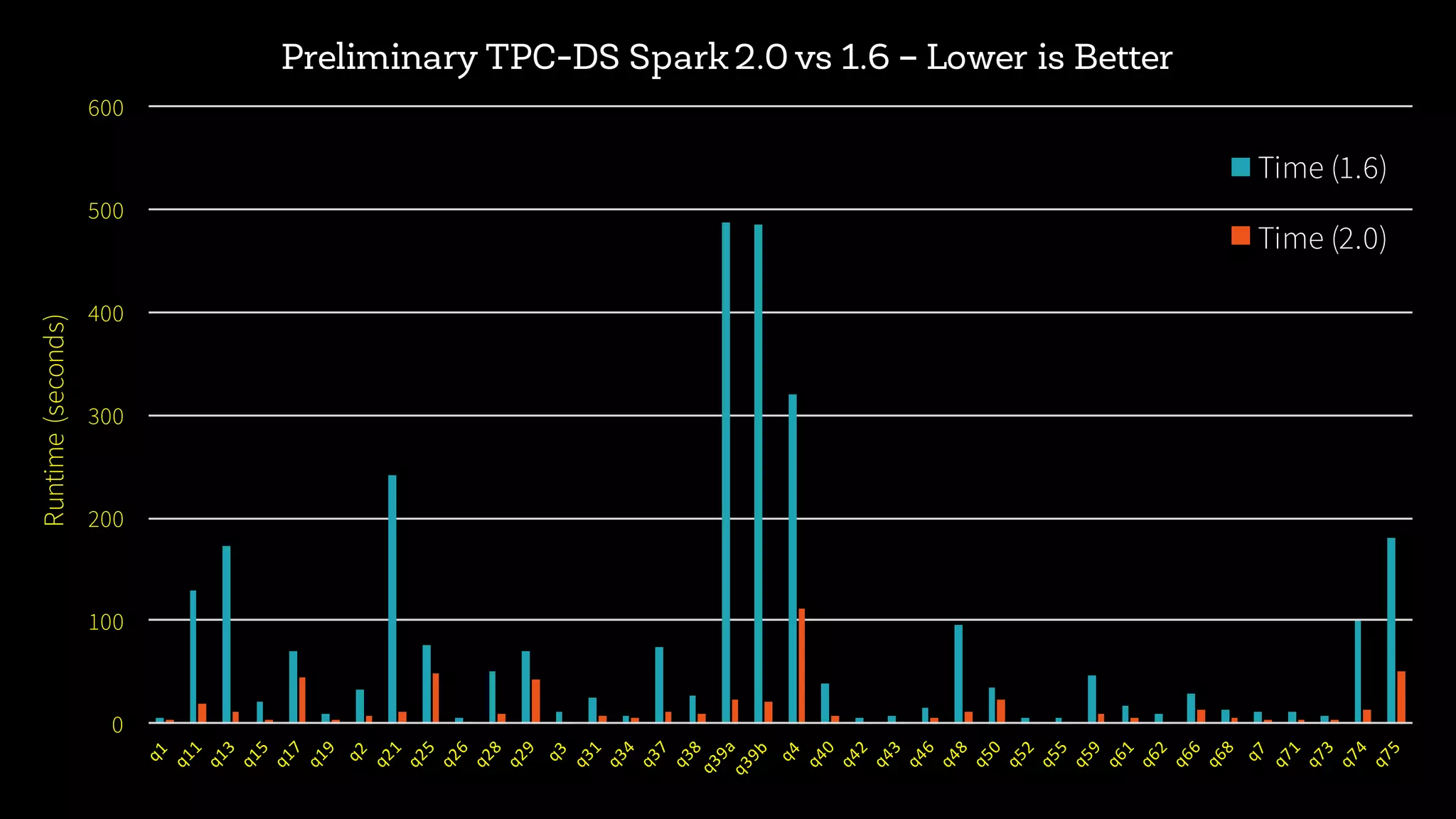
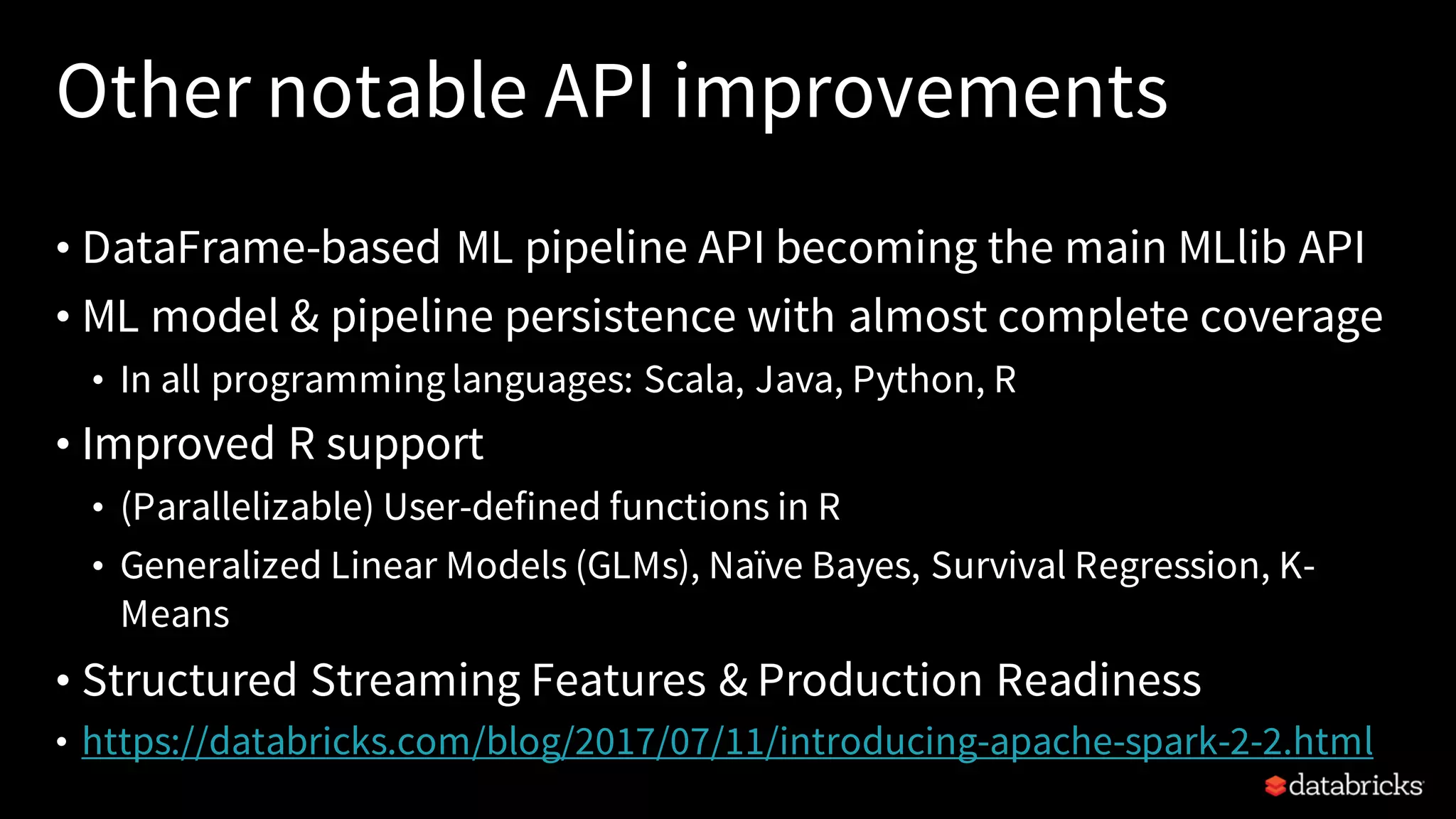
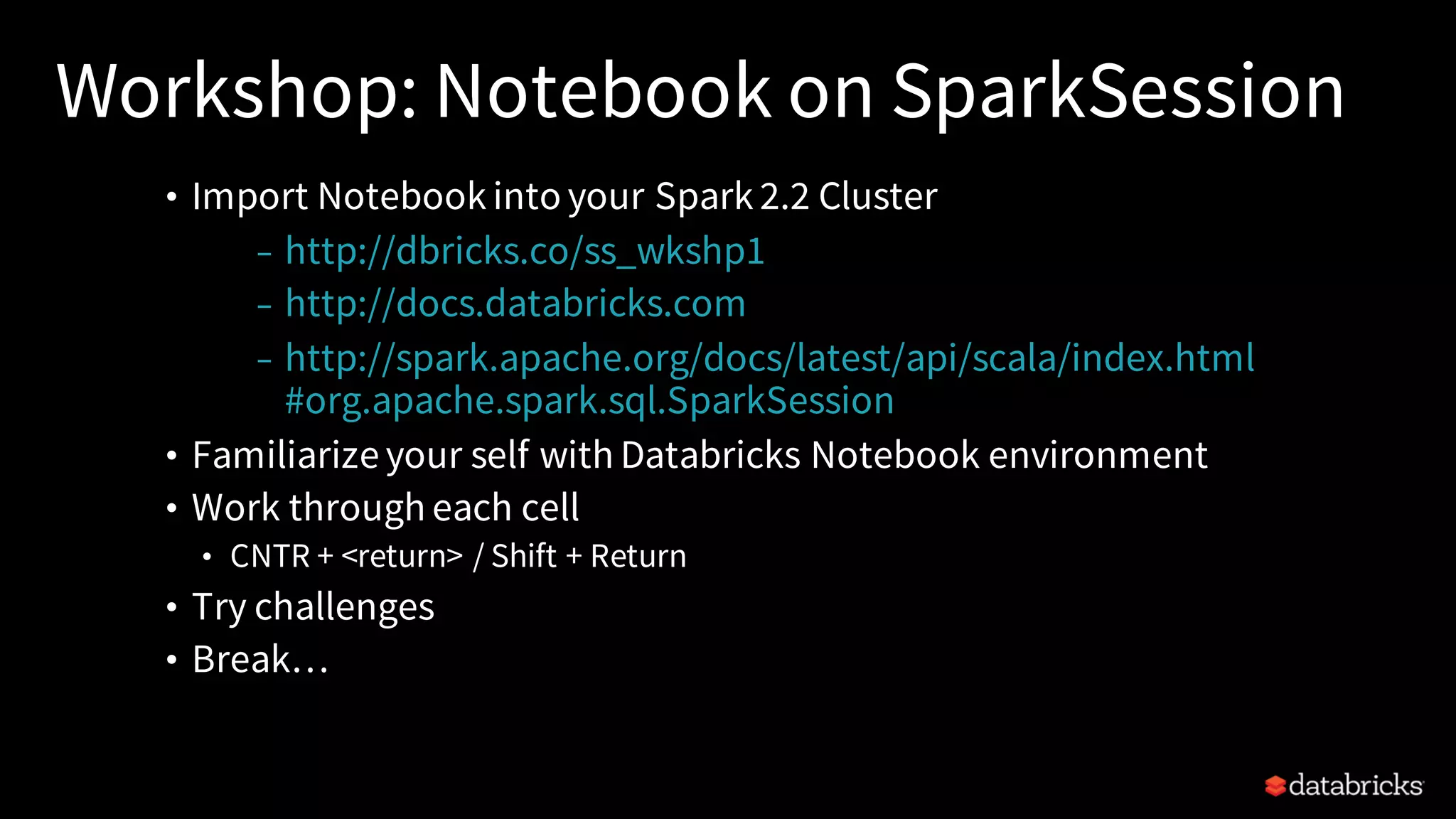

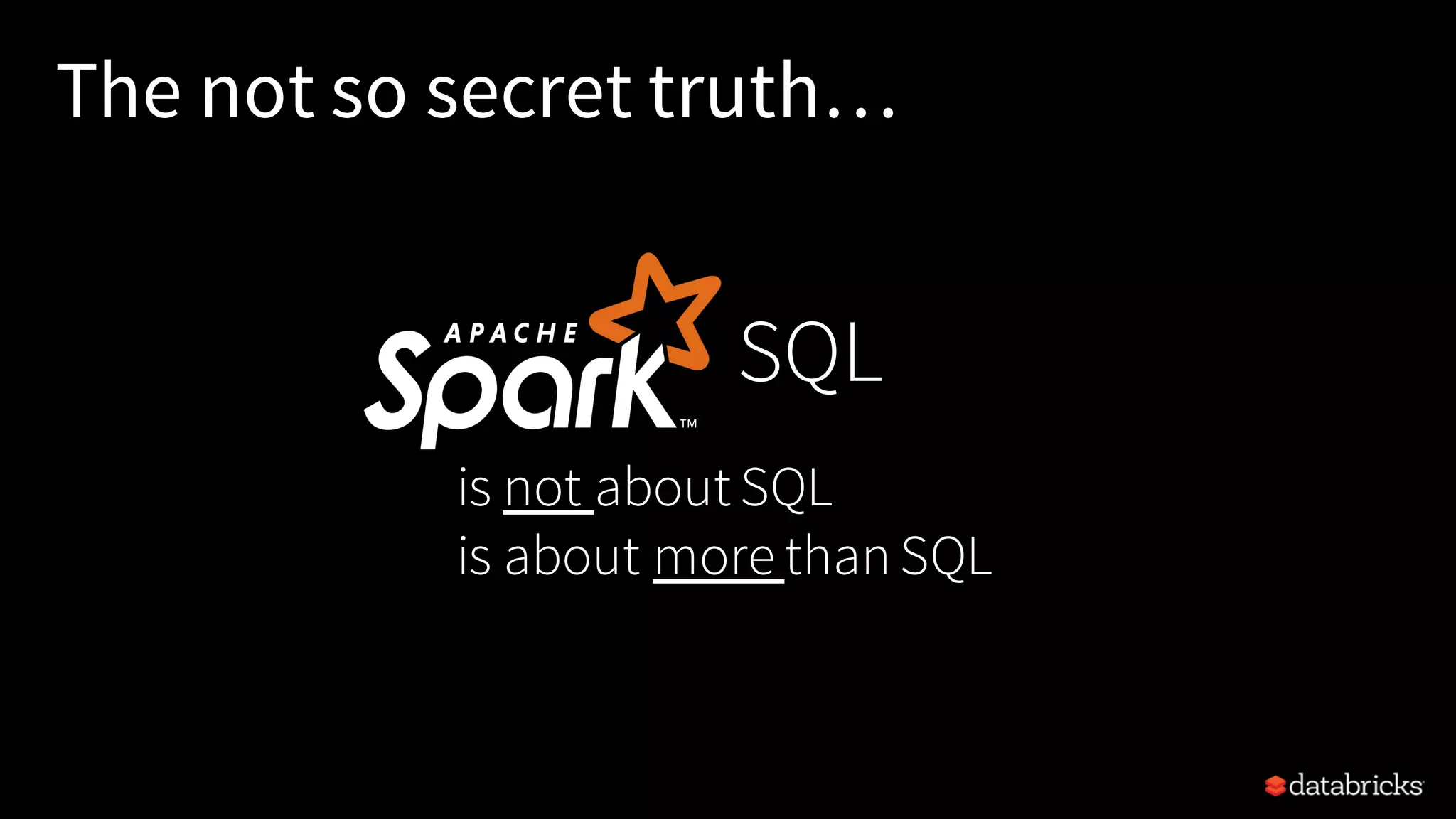

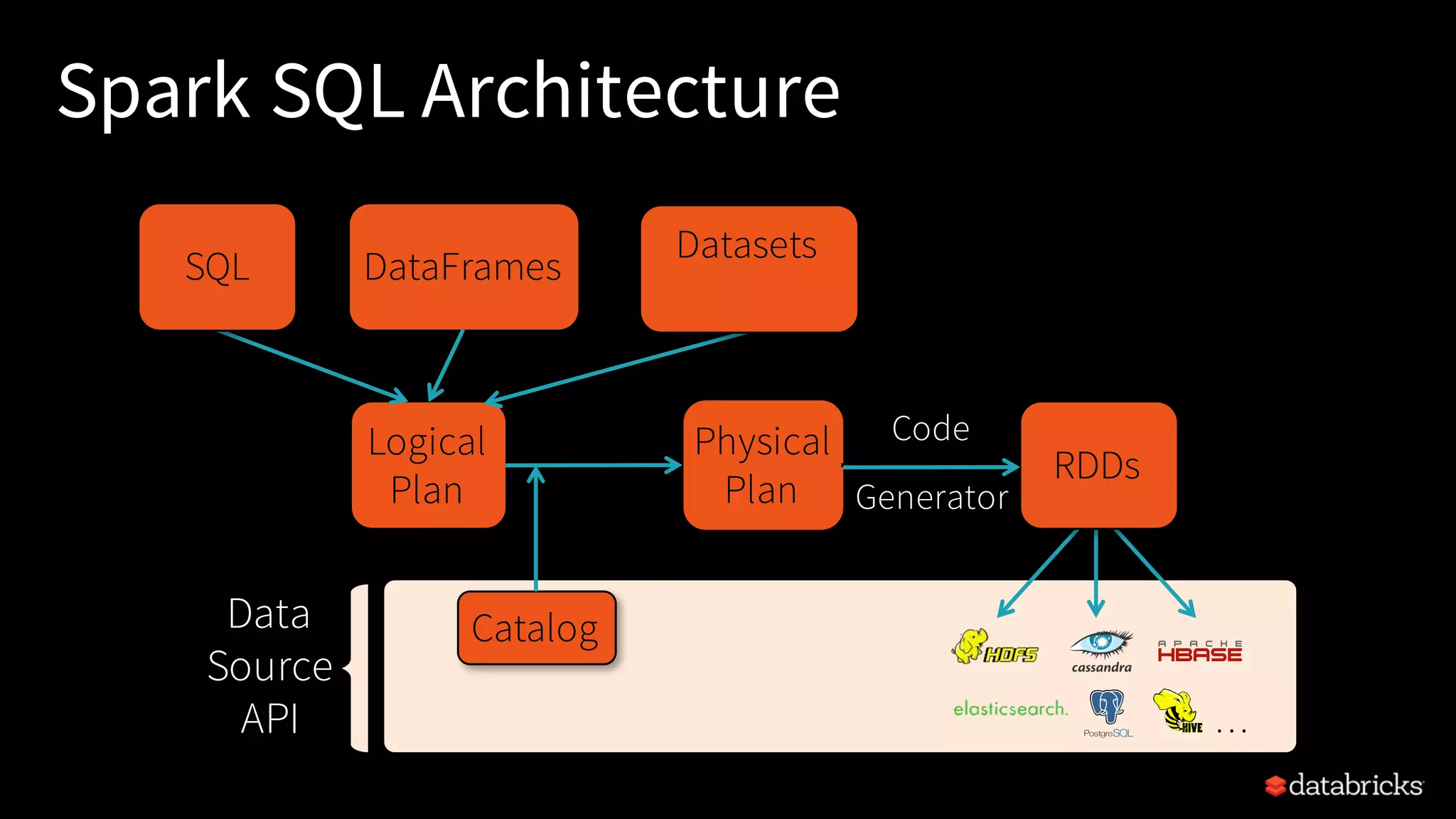


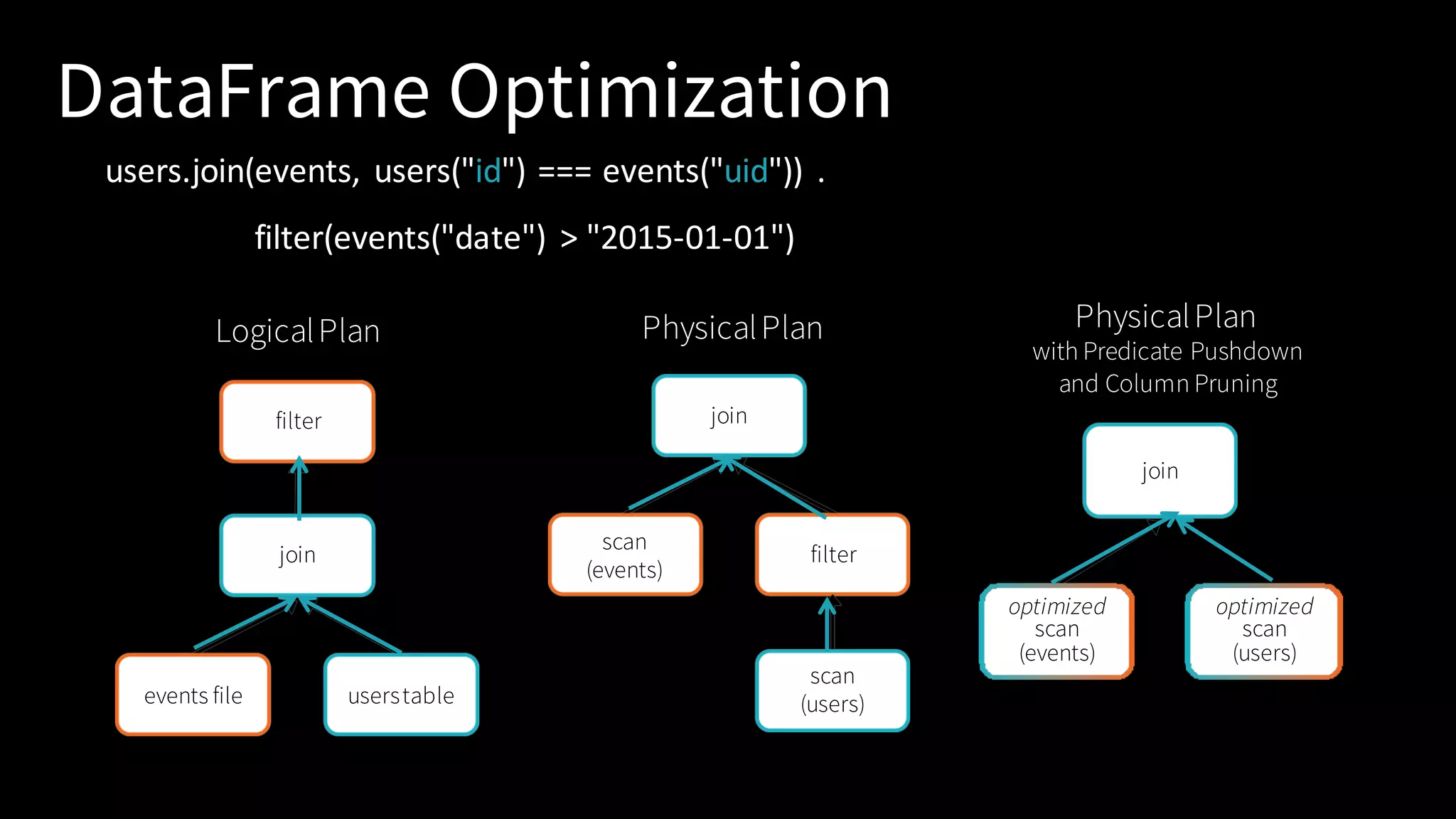
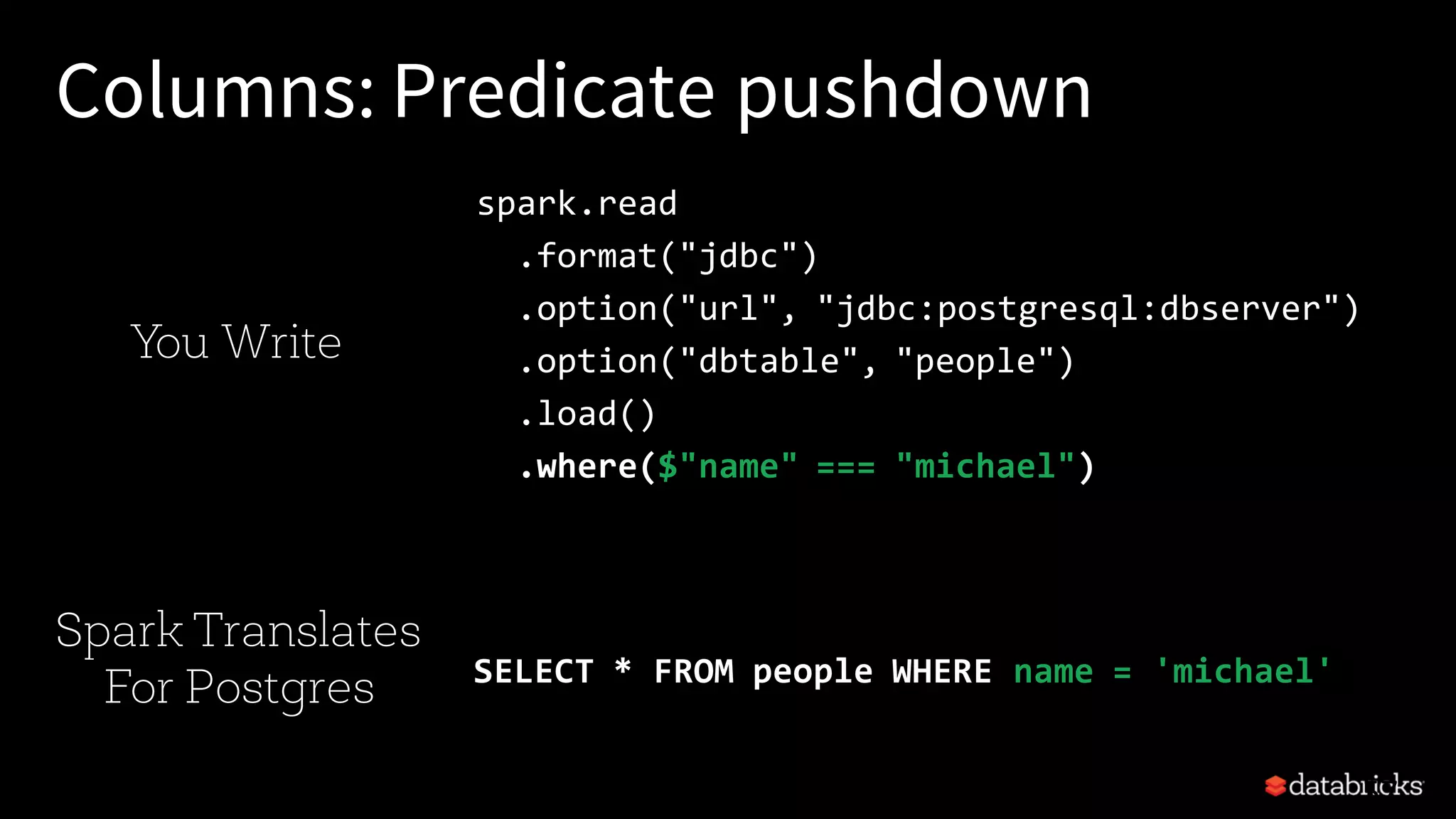
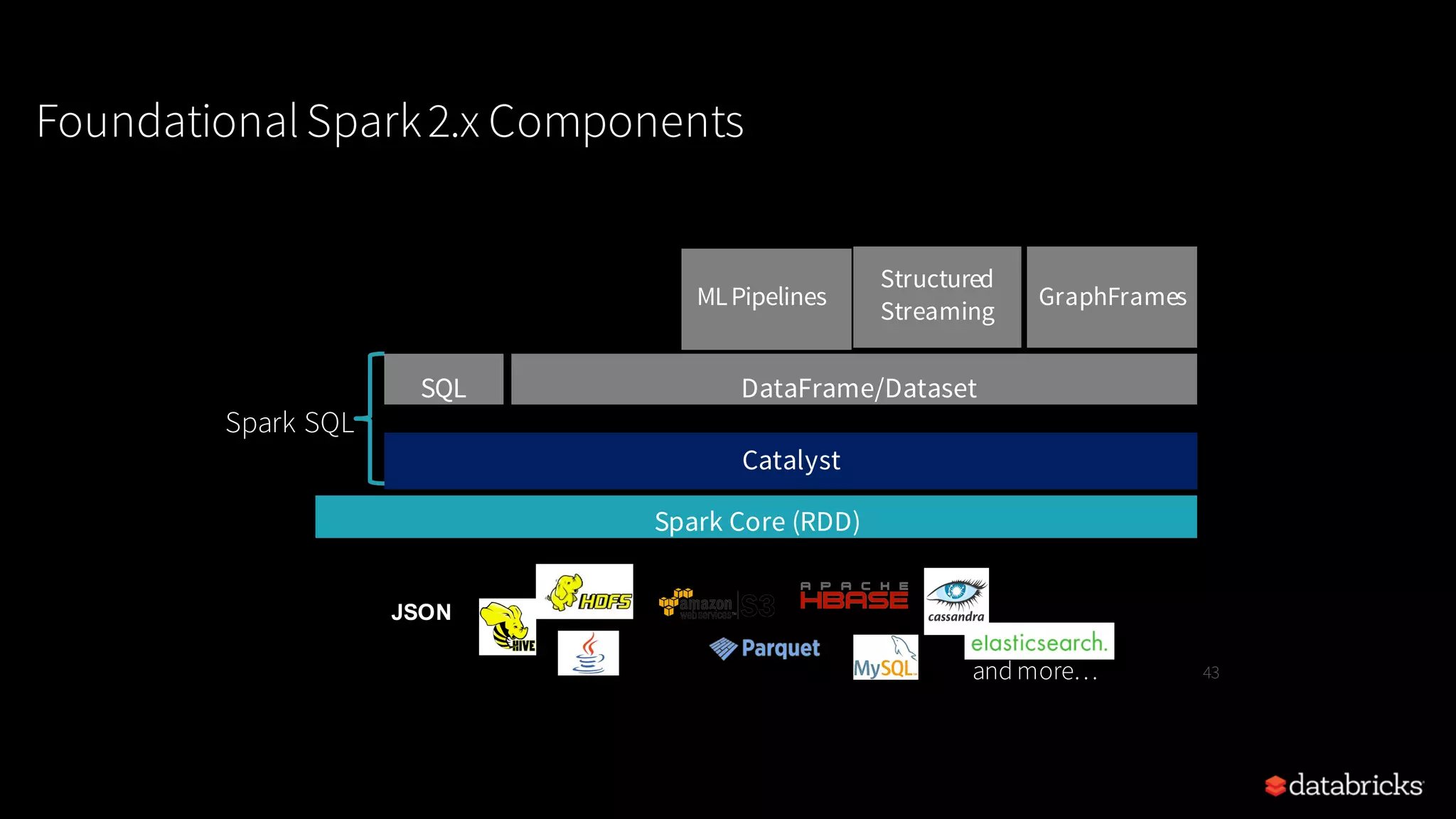
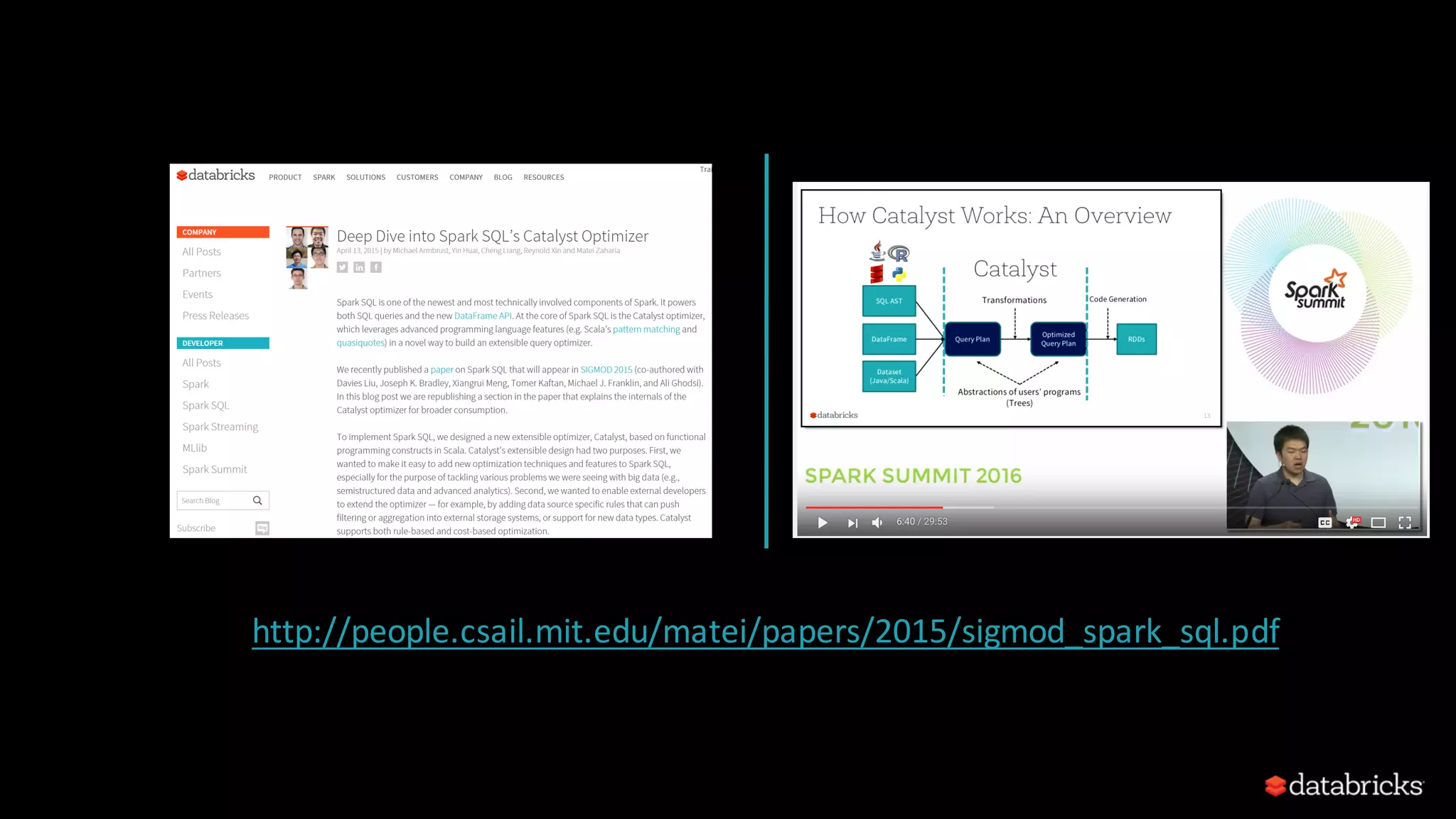
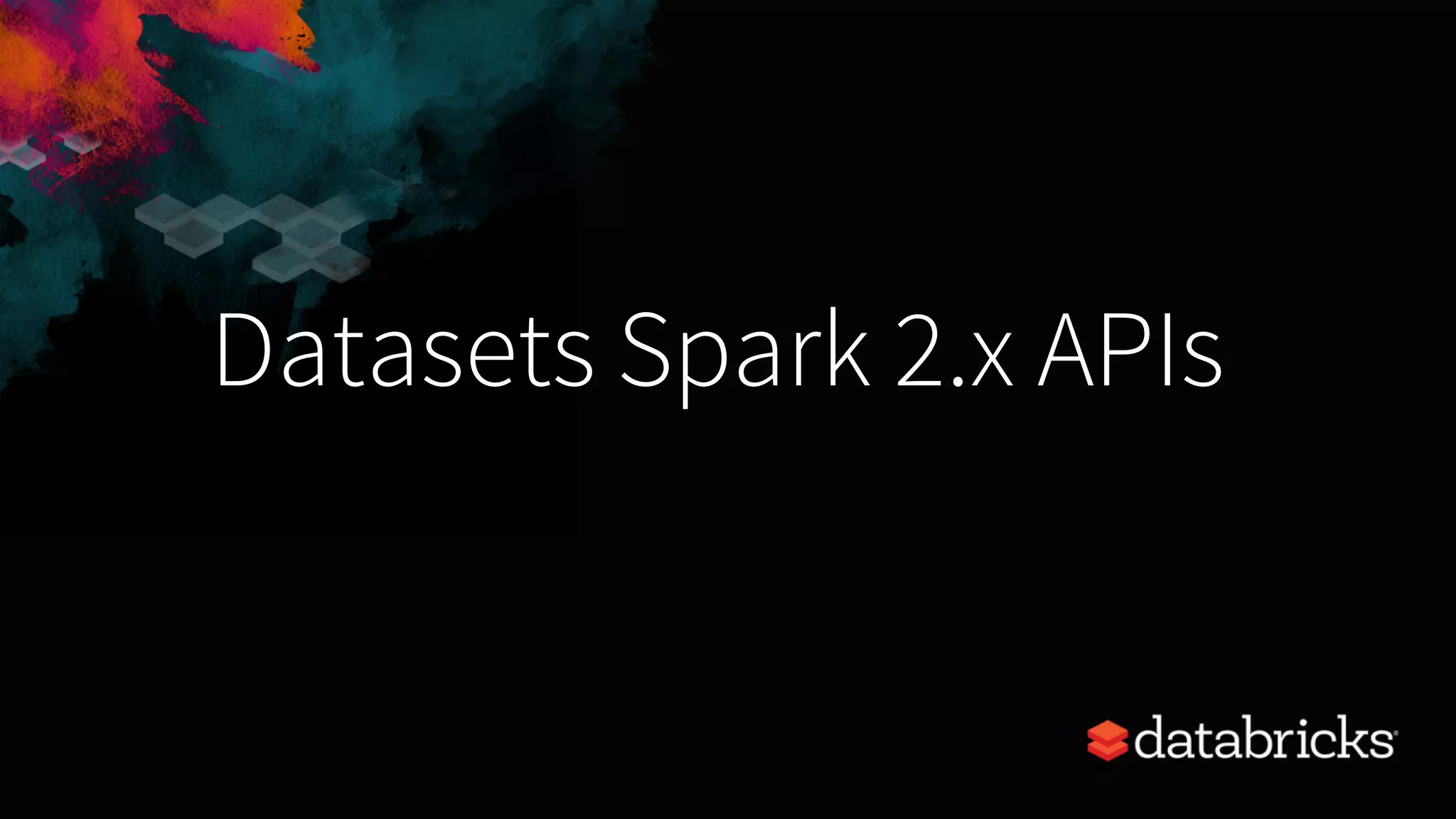
![Background: What is in an RDD? •Dependencies • Partitions (with optional localityinfo) • Compute function: Partition =>Iterator[T] Opaque Computation & Opaque Data](https://image.slidesharecdn.com/sparkstaturdayworkshop-170730005213/75/Jumpstart-on-Apache-Spark-2-2-on-Databricks-61-2048.jpg)
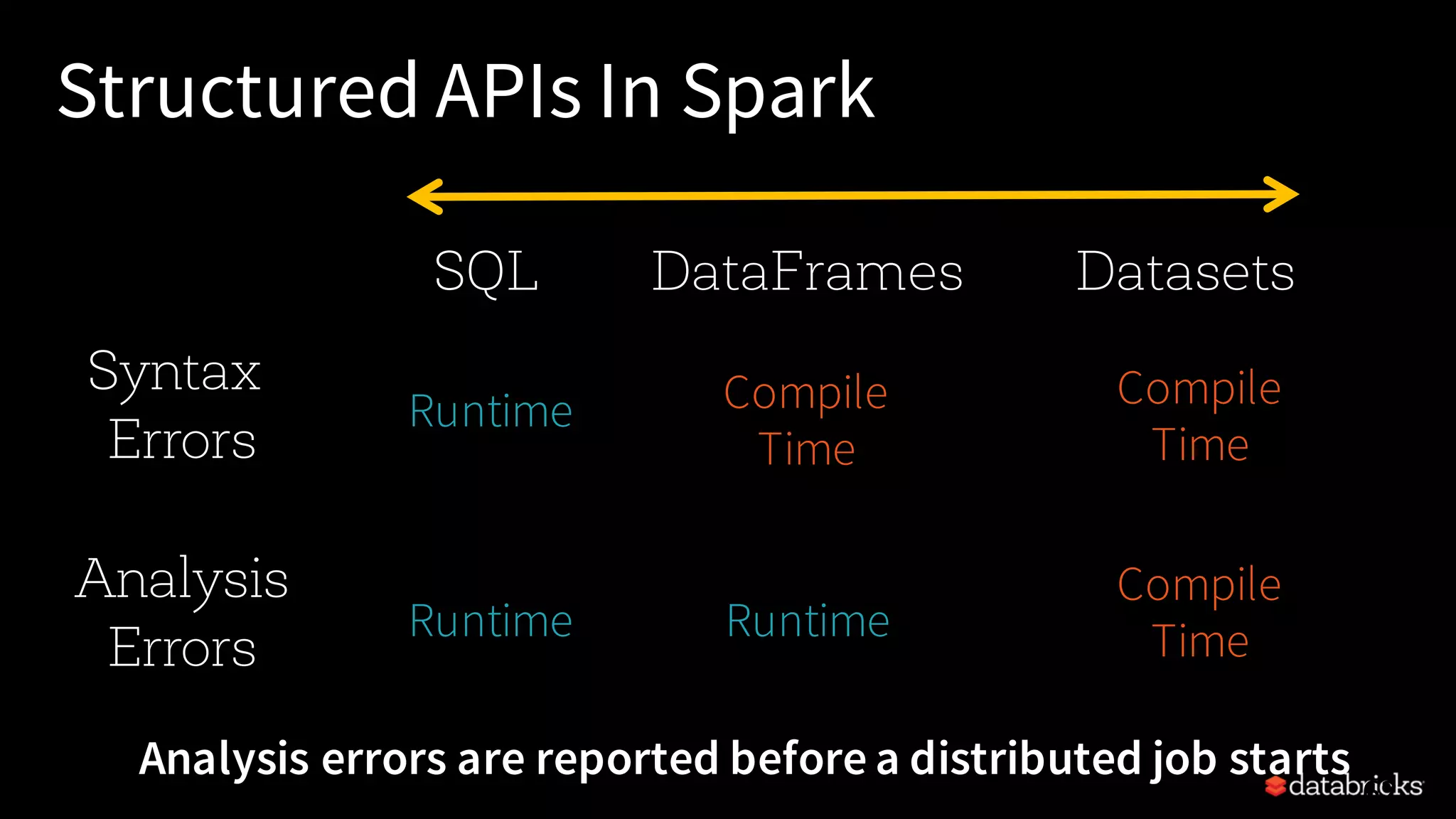
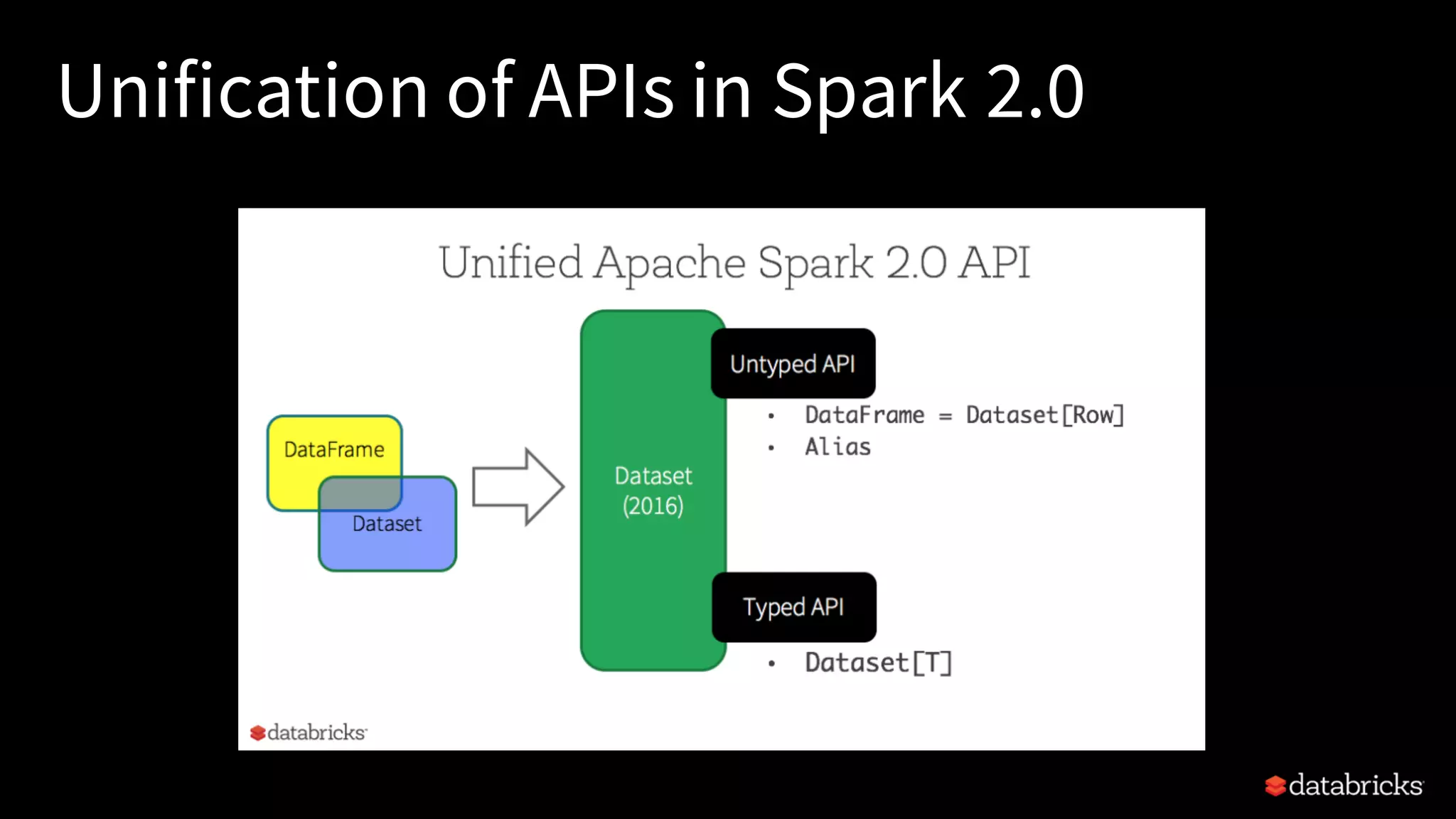
![Type-safe:operate on domain objects with compiled lambda functions 8 Dataset API in Spark 2.x v a l d f = s p a r k .r e ad.j s on( "pe opl e.js on ") / / Convert data to domain o b j e c ts . case c l a s s Person(name: S tr i n g , age: I n t ) v a l d s : Dataset[Person] = d f.a s [P e r s on ] v a l fi l te r D S = d s . f i l t e r ( p = > p . a g e > 30)](https://image.slidesharecdn.com/sparkstaturdayworkshop-170730005213/75/Jumpstart-on-Apache-Spark-2-2-on-Databricks-64-2048.jpg)
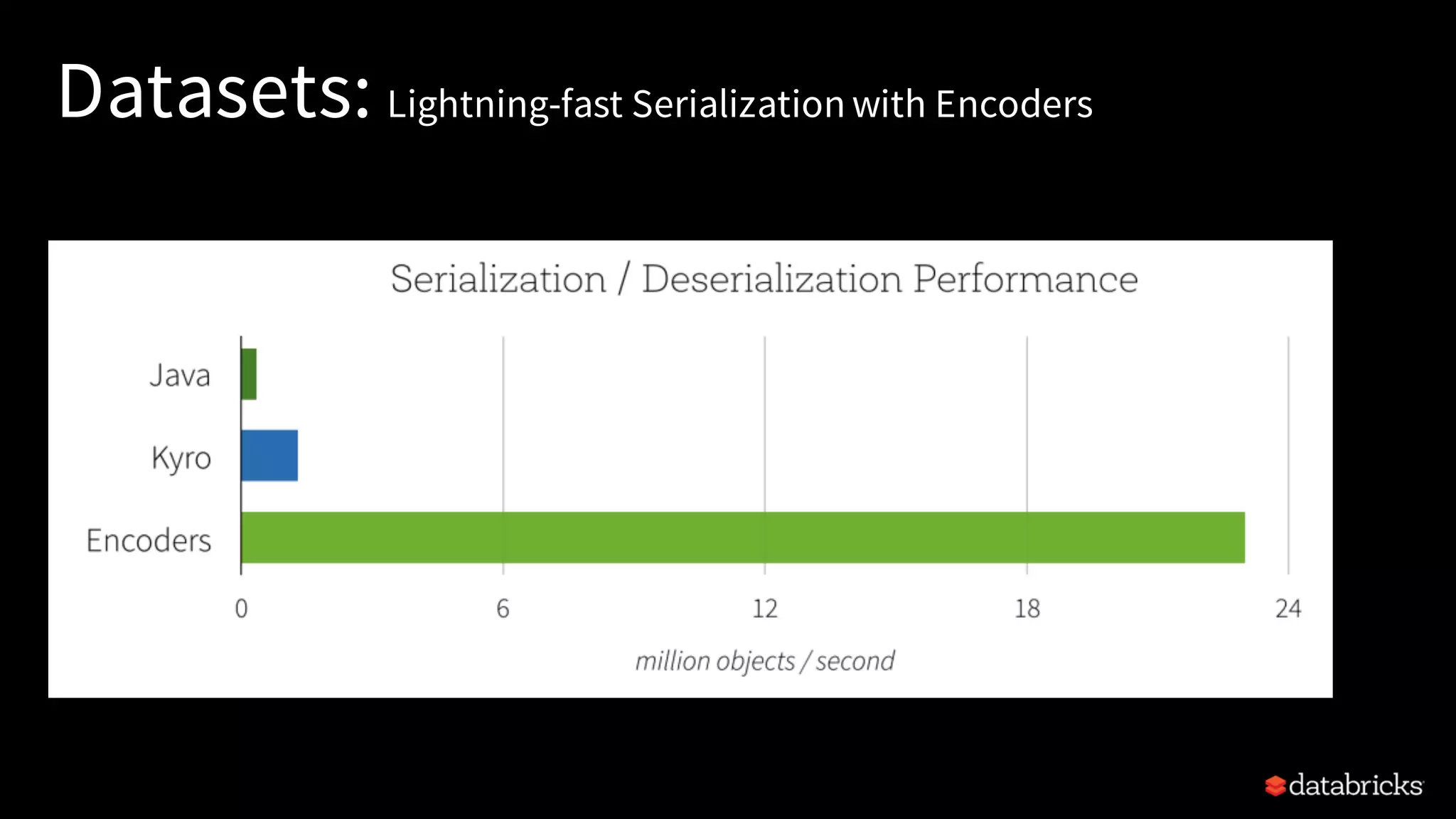
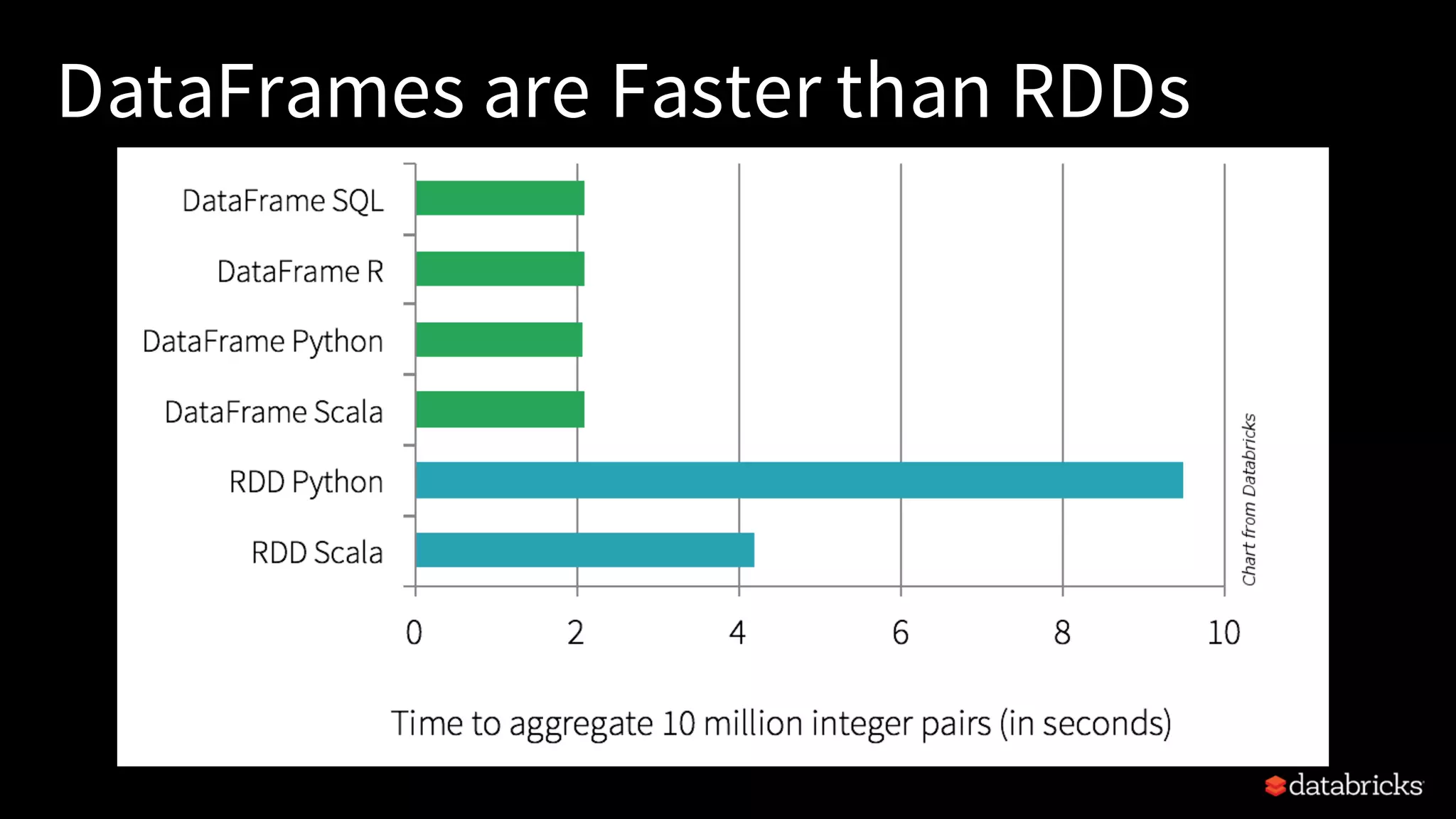

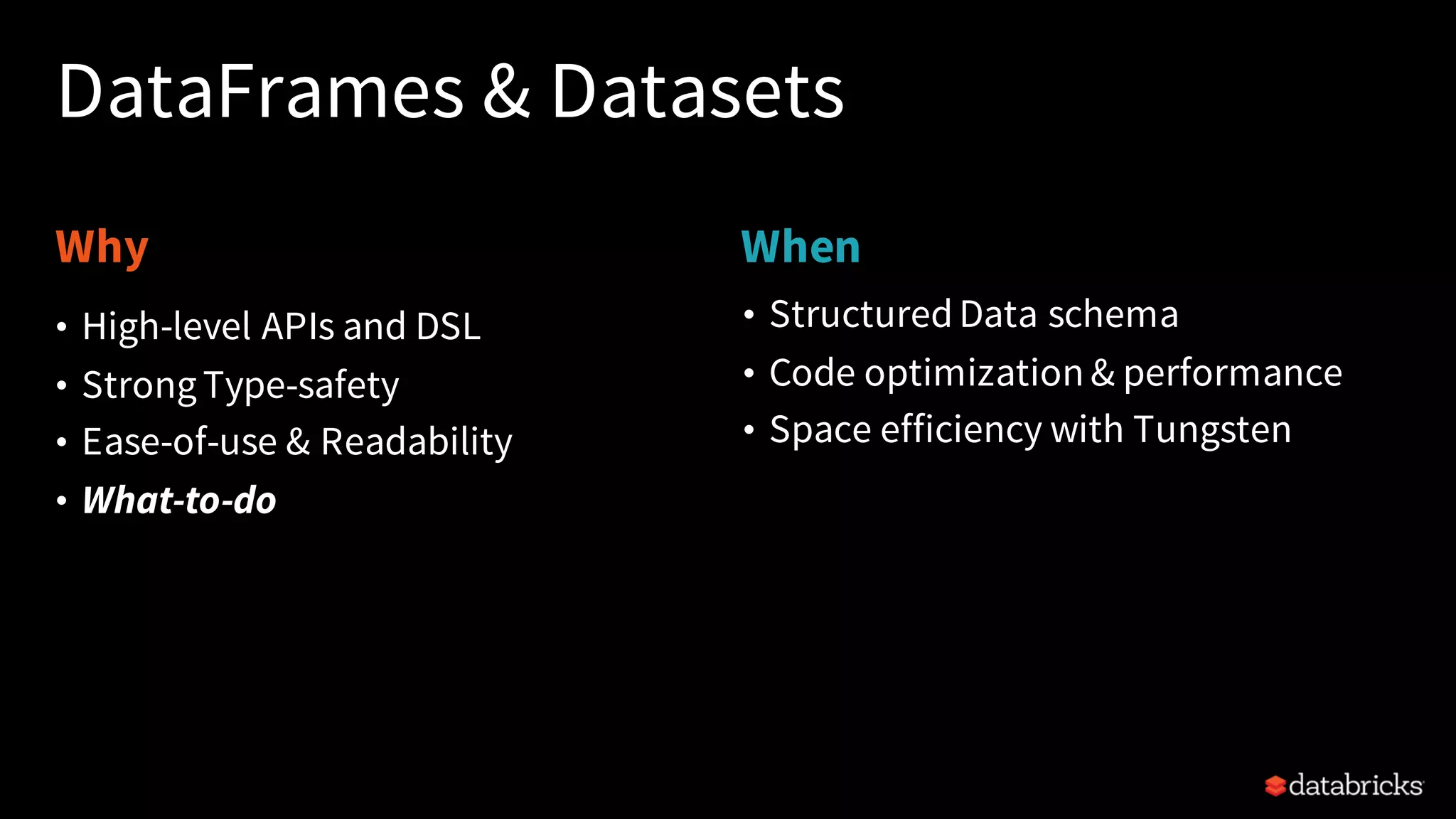

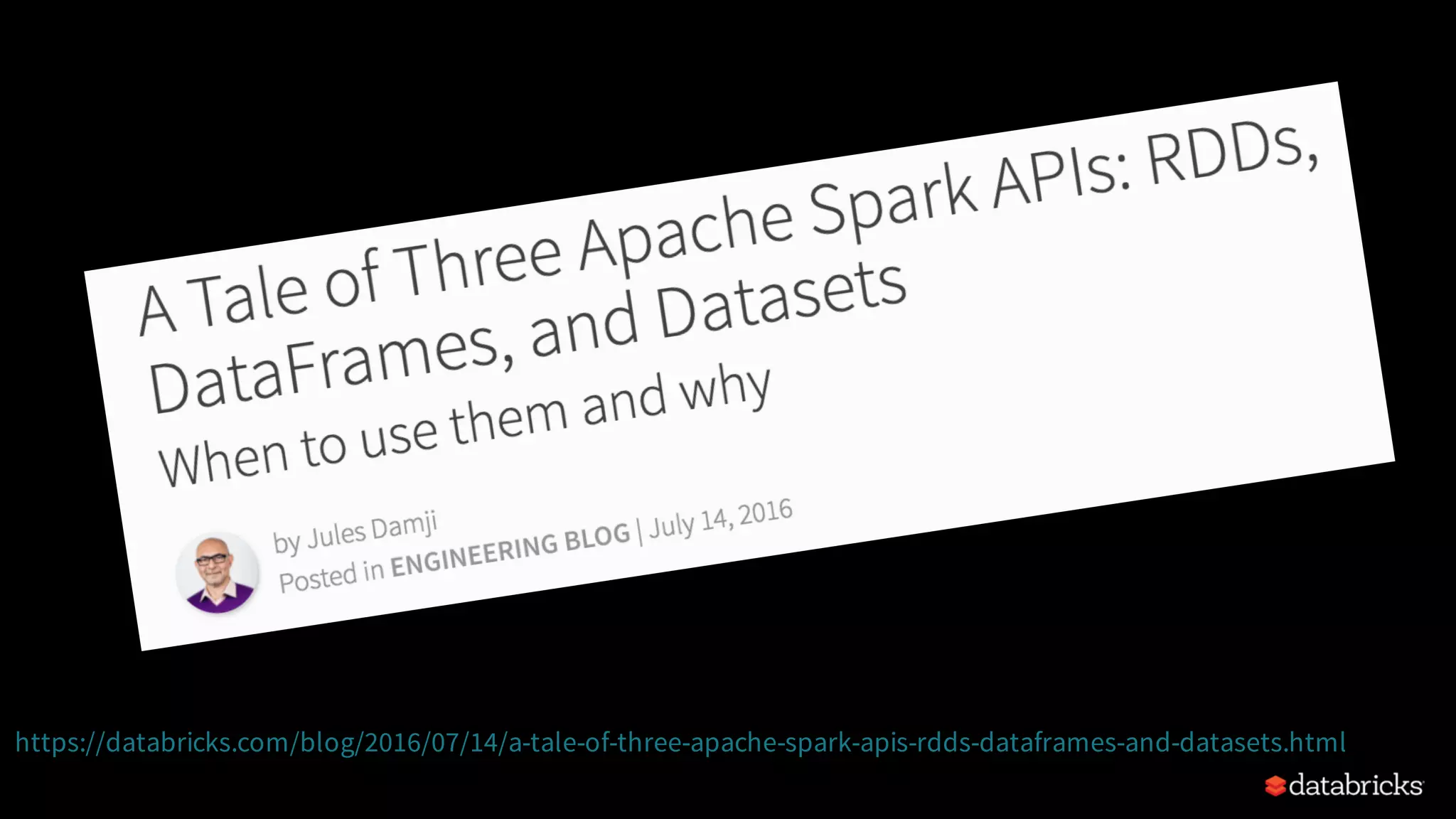

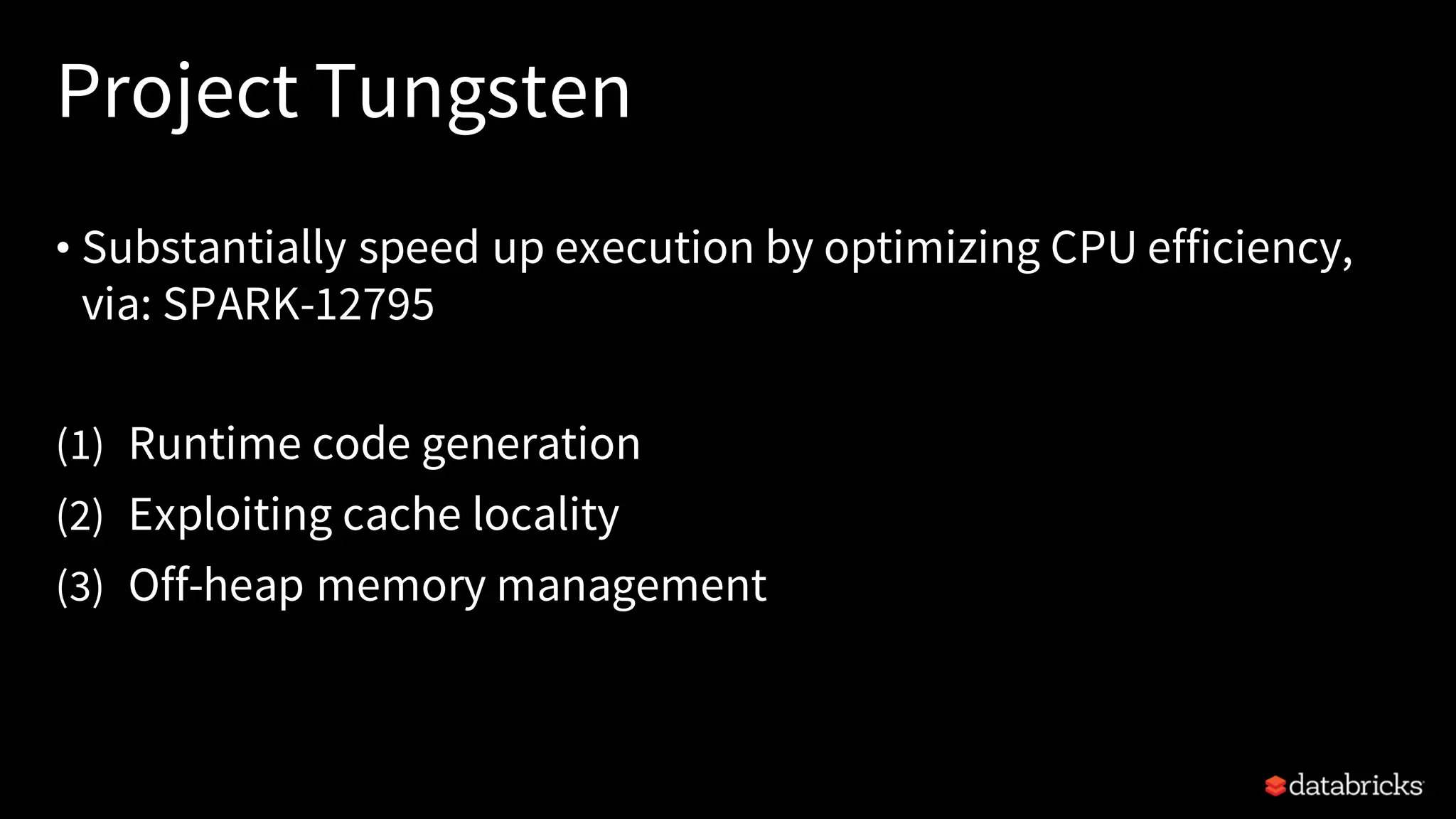
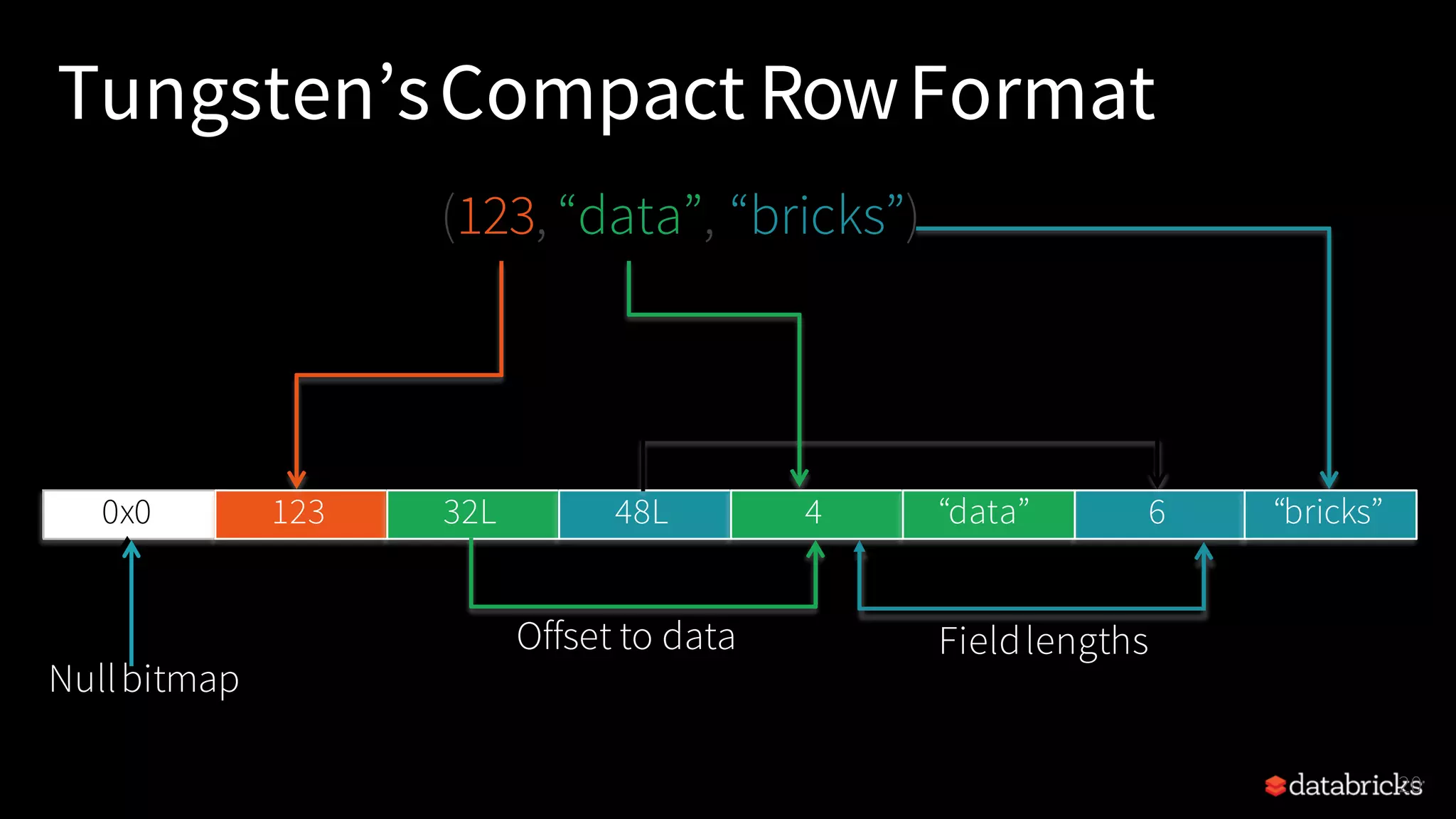
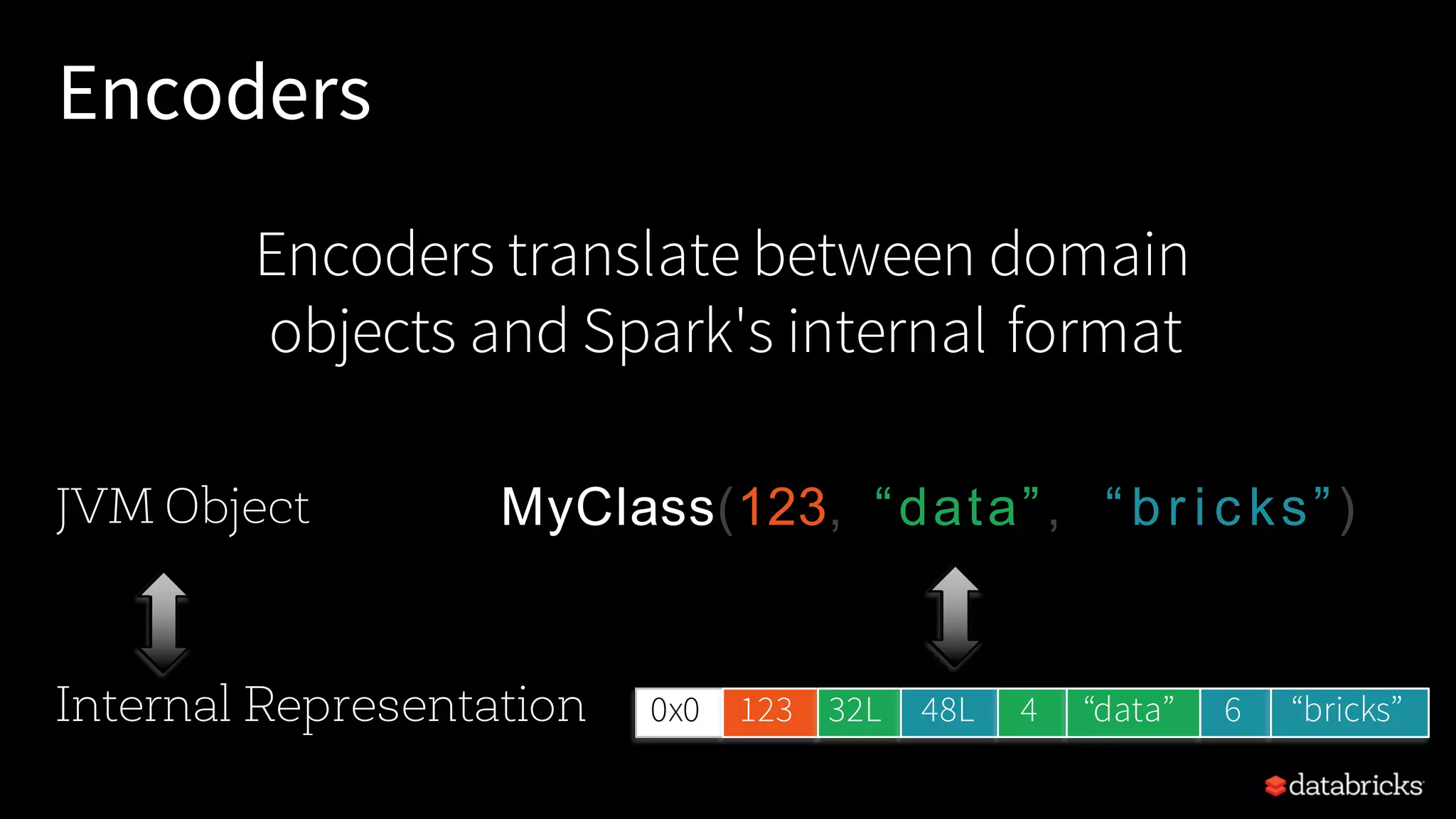
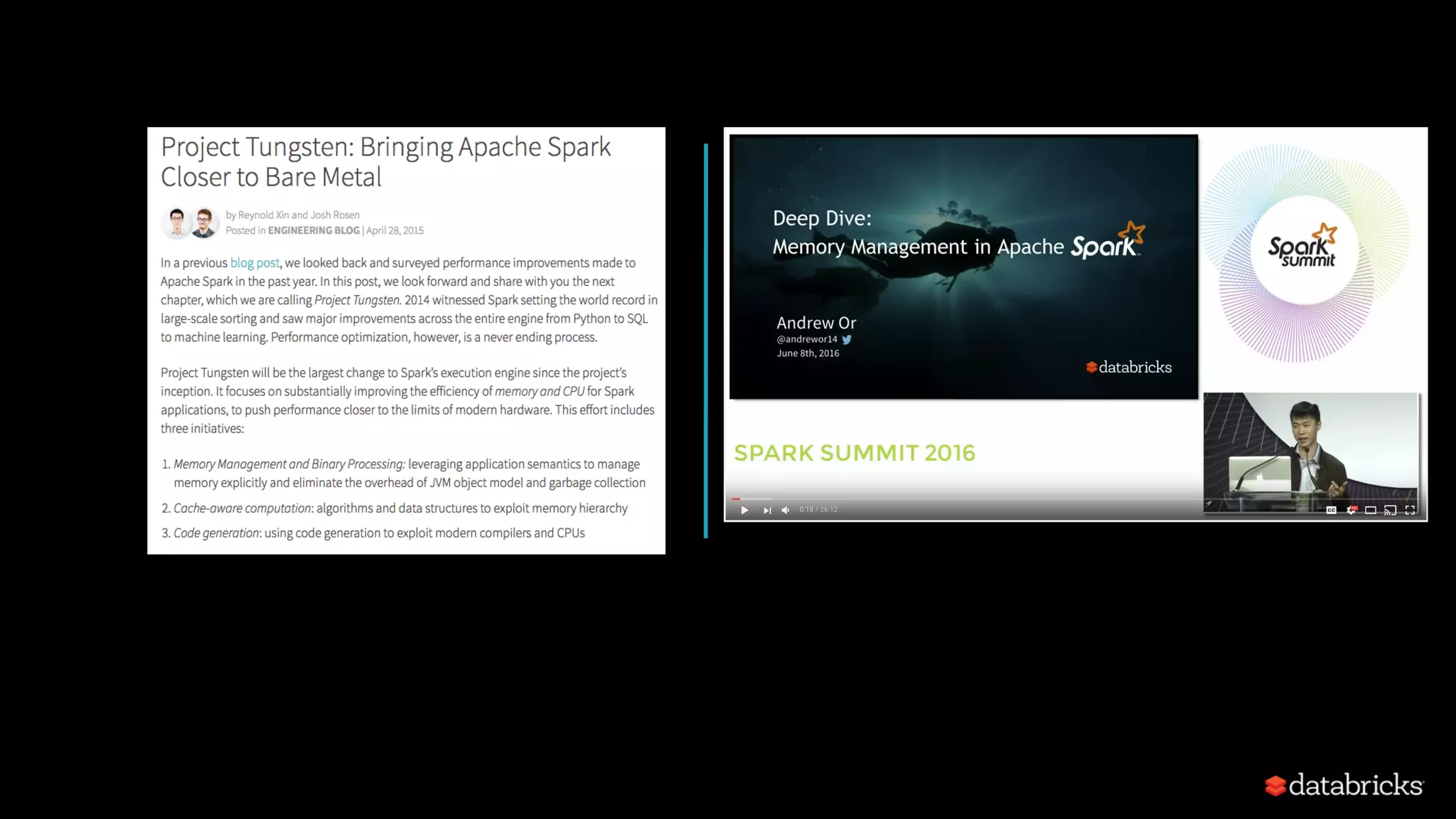

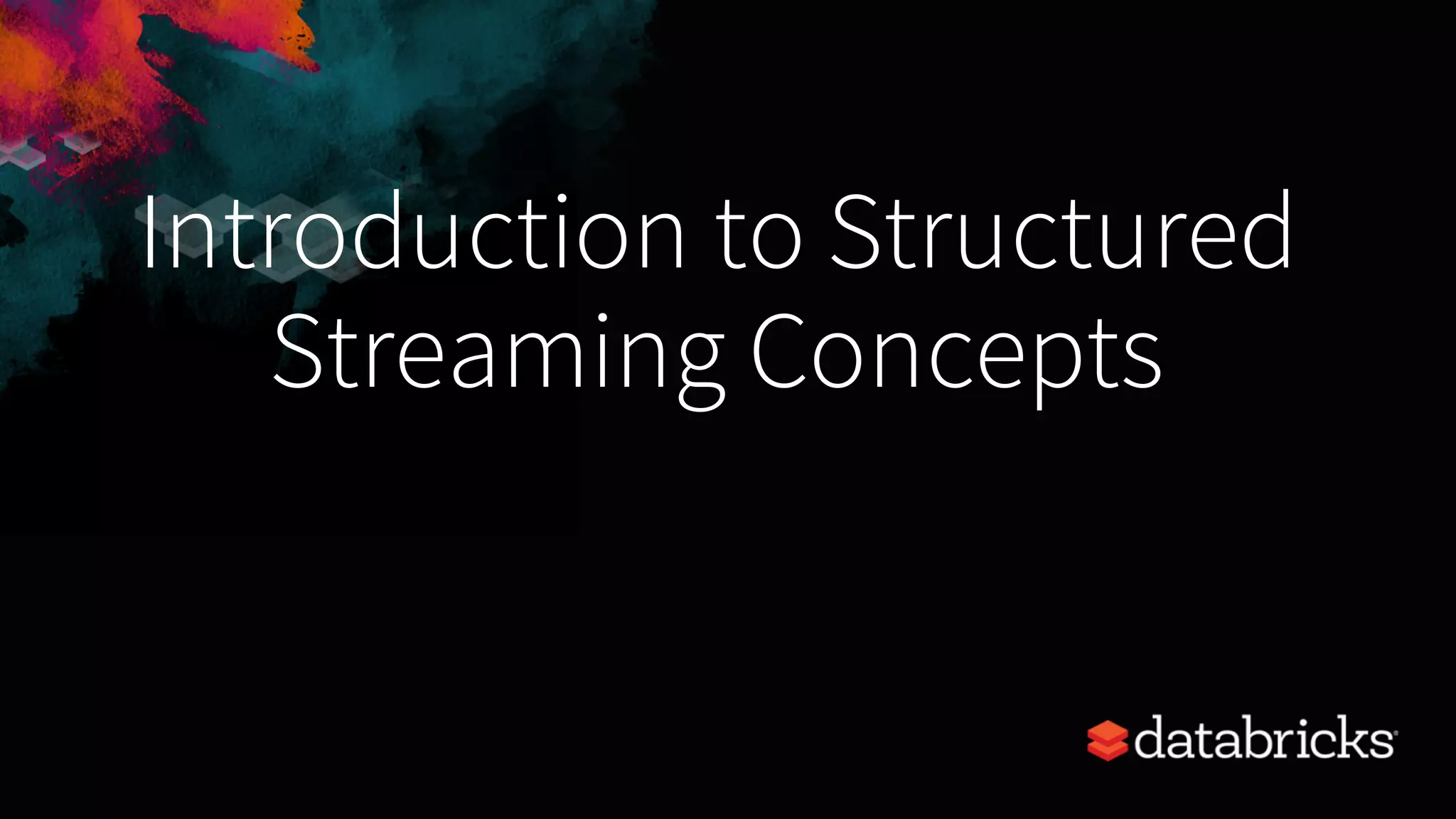
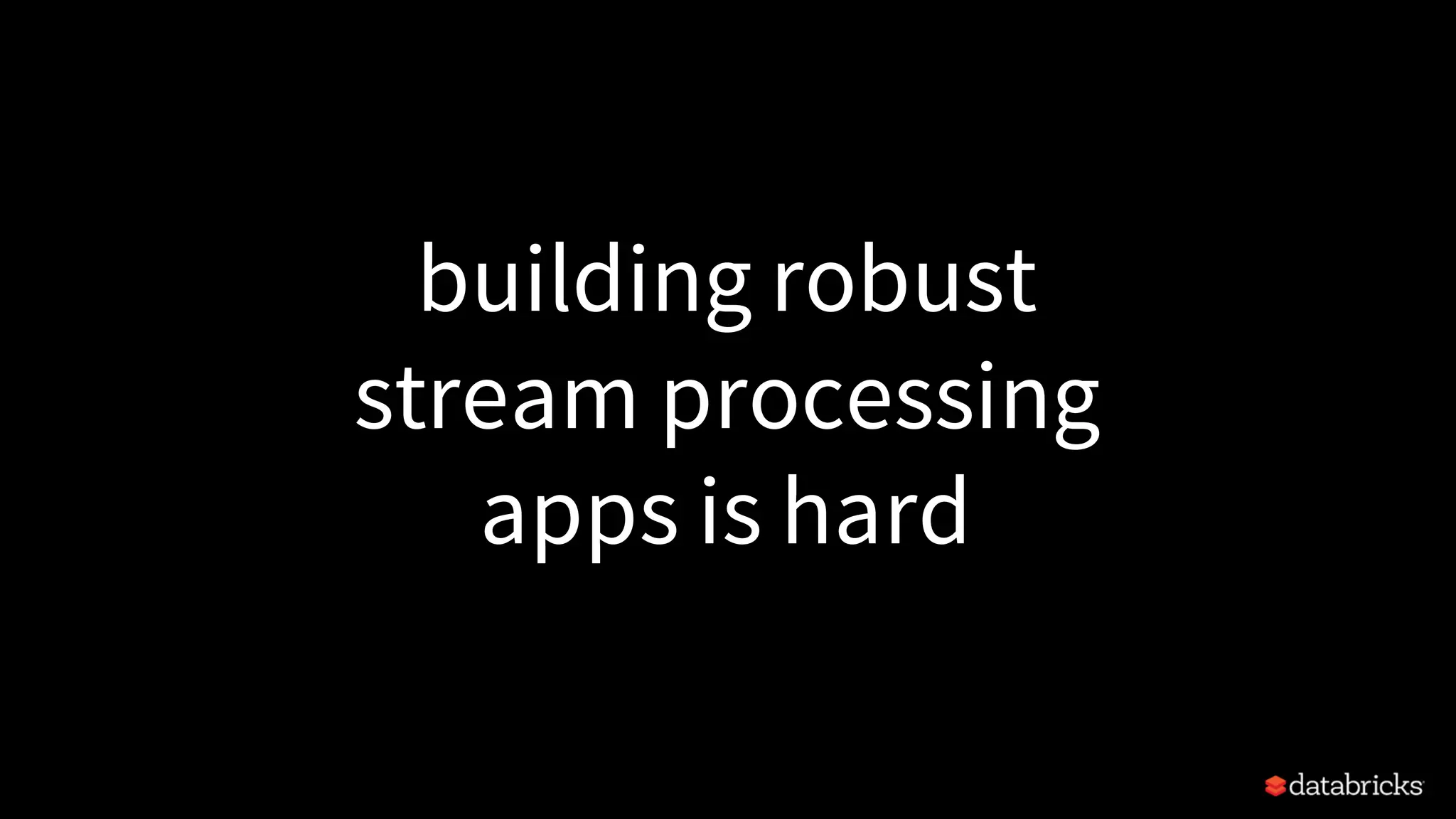
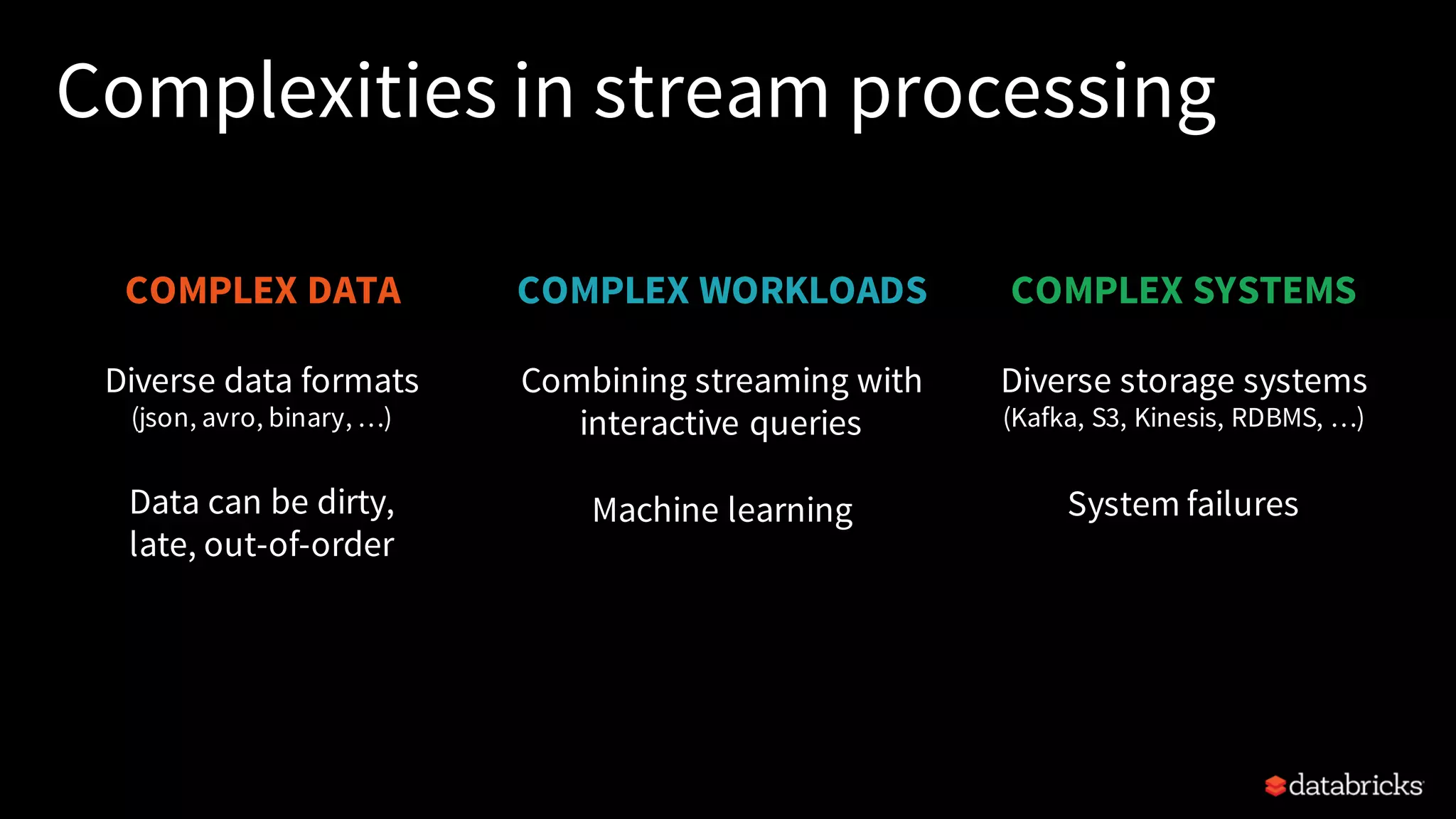
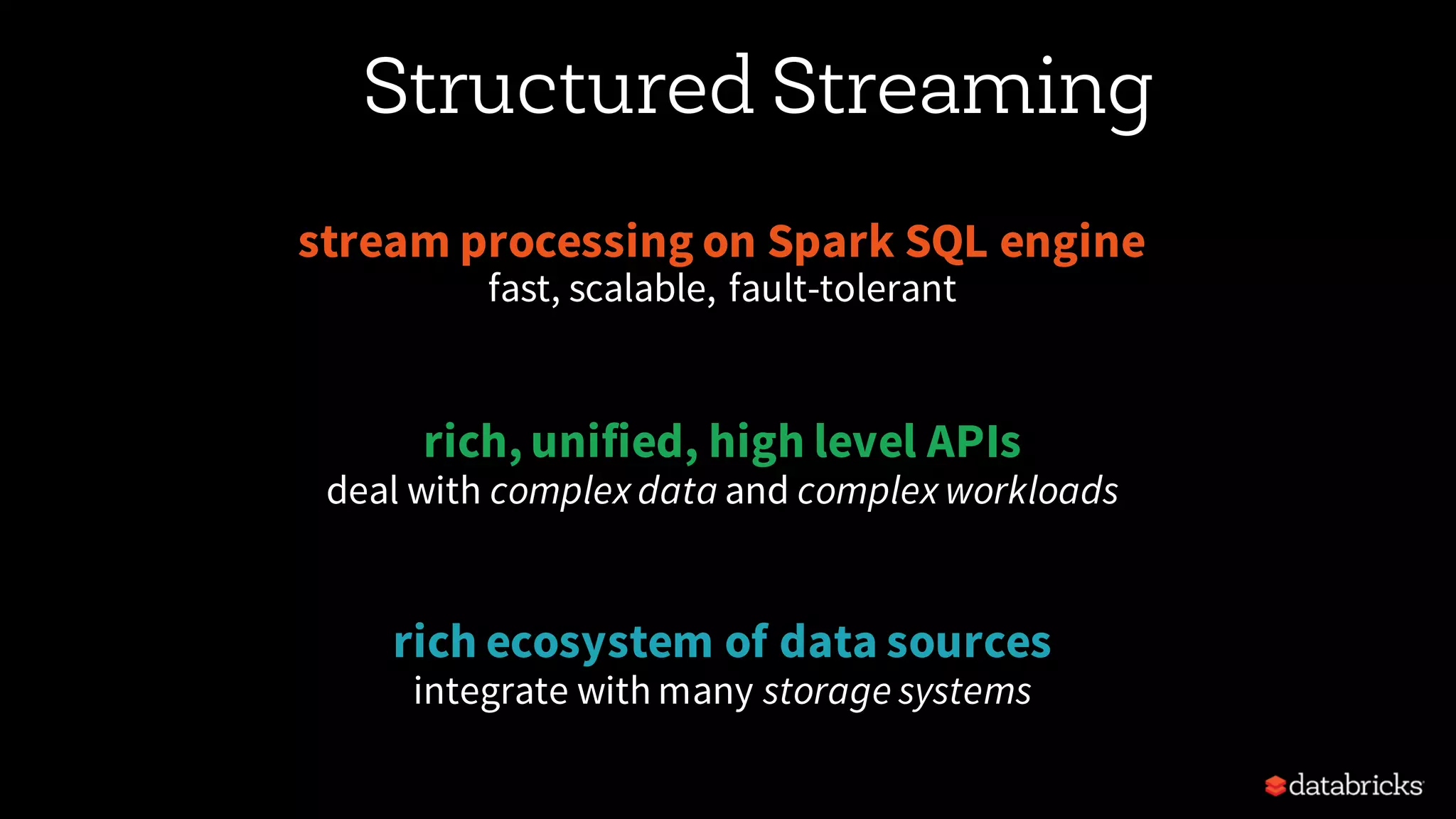
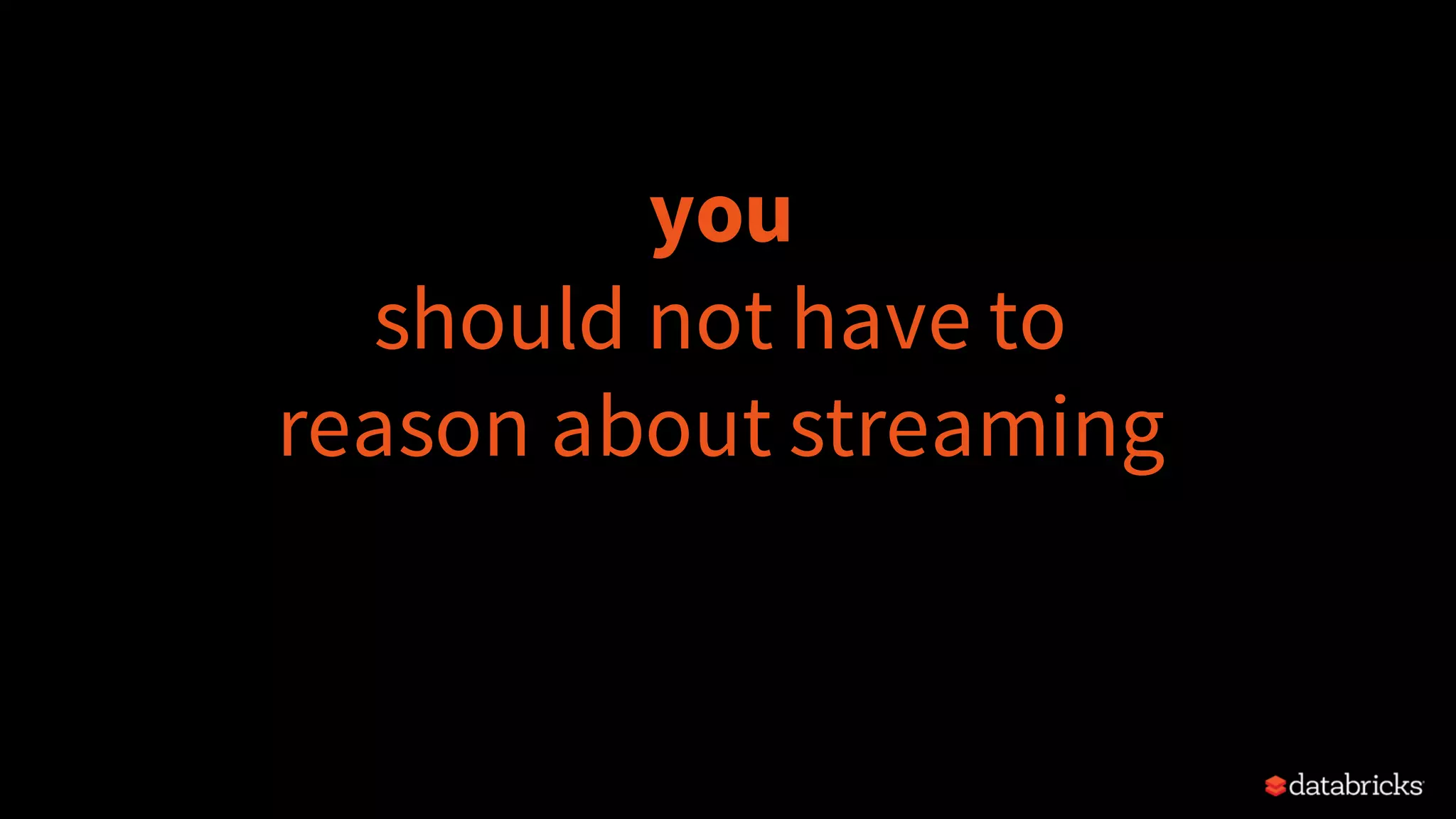
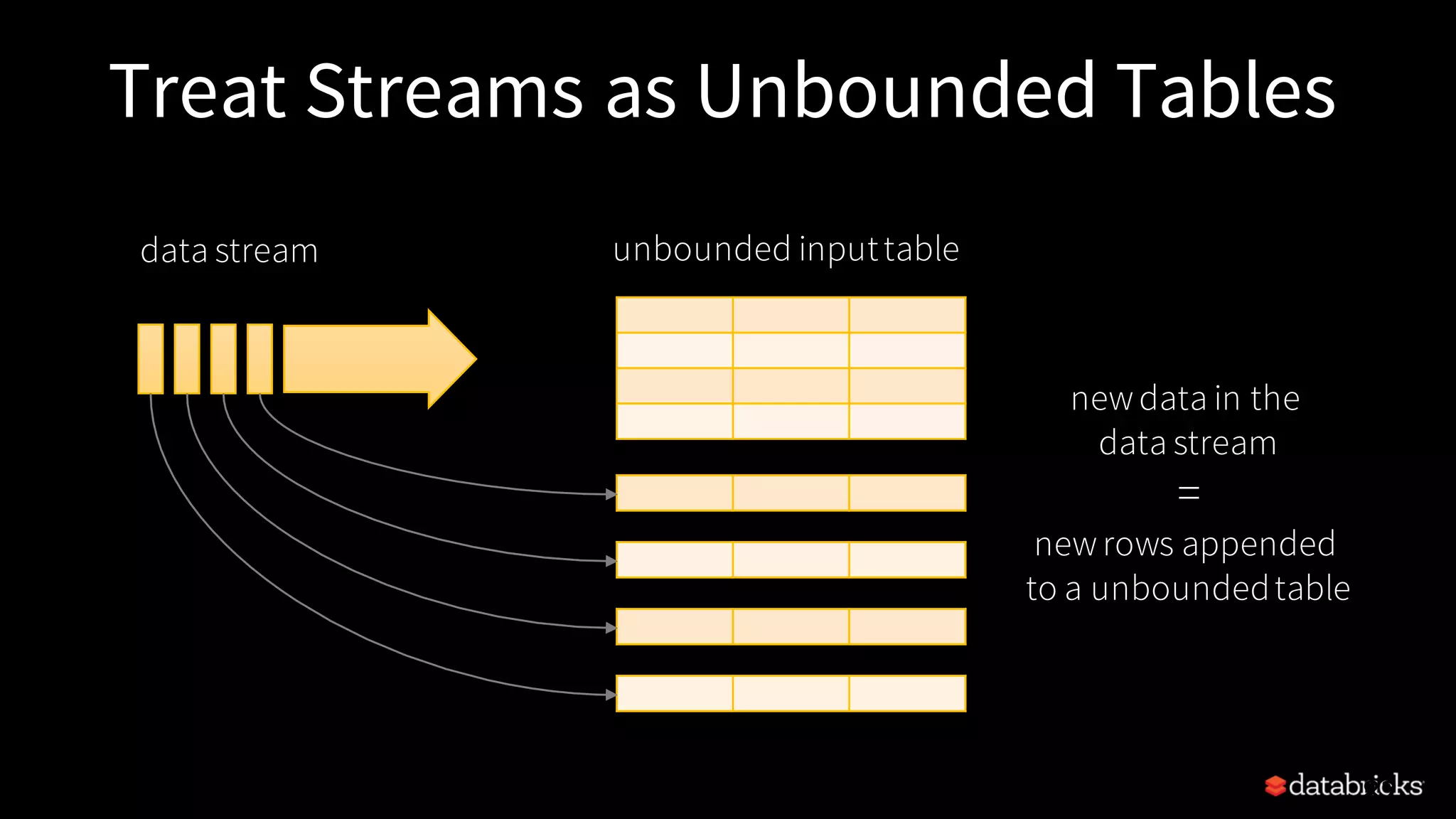

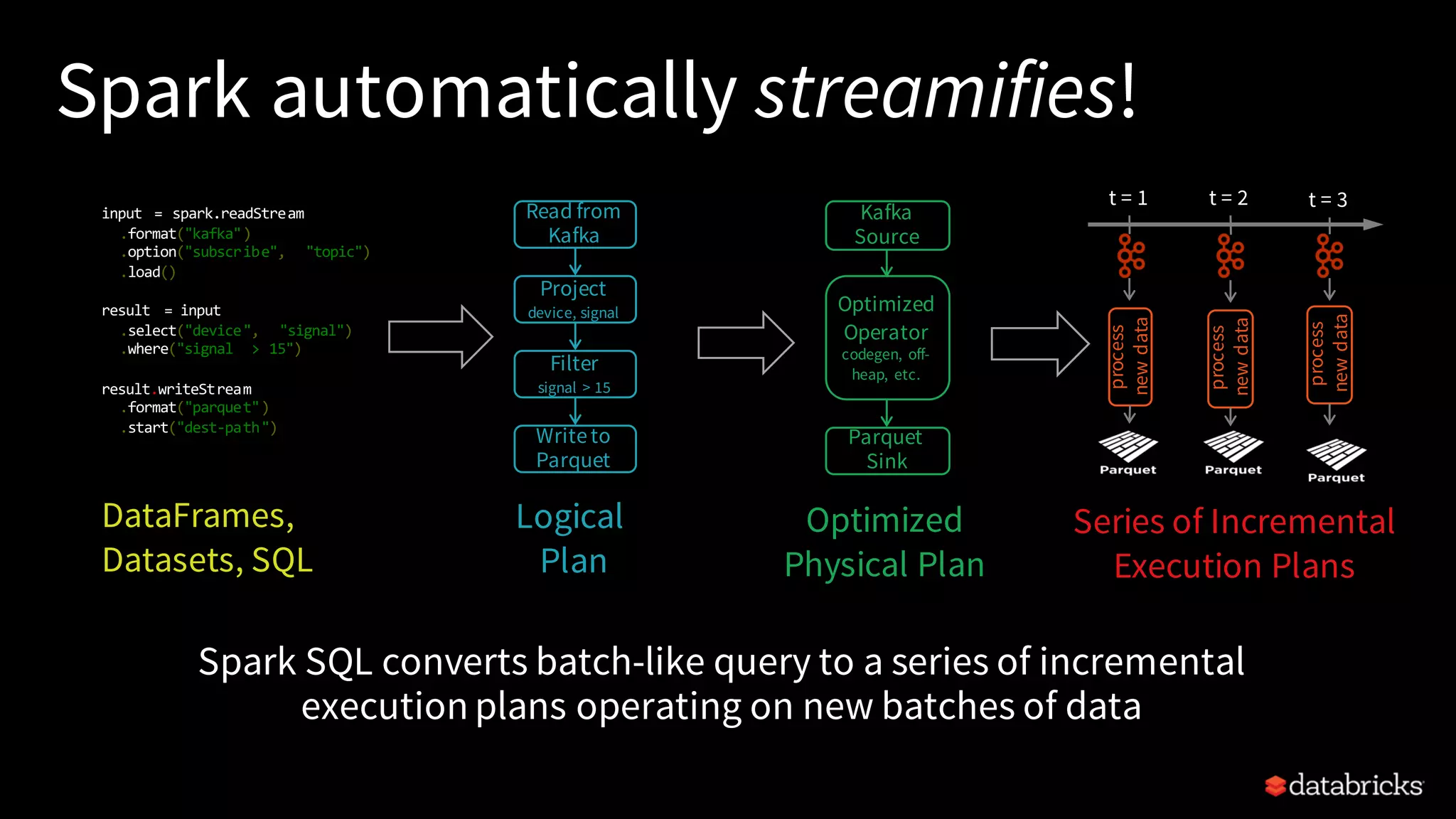

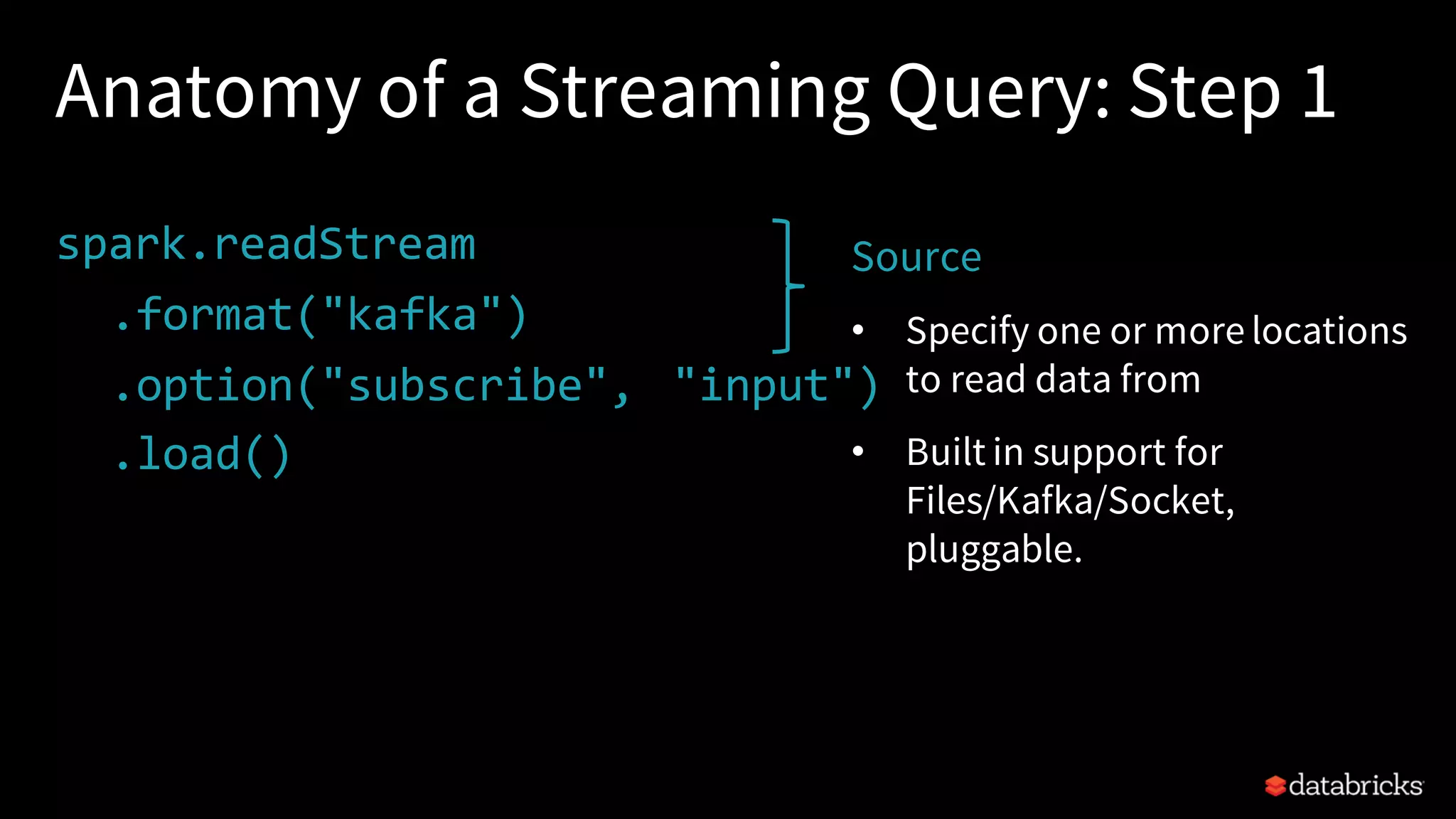
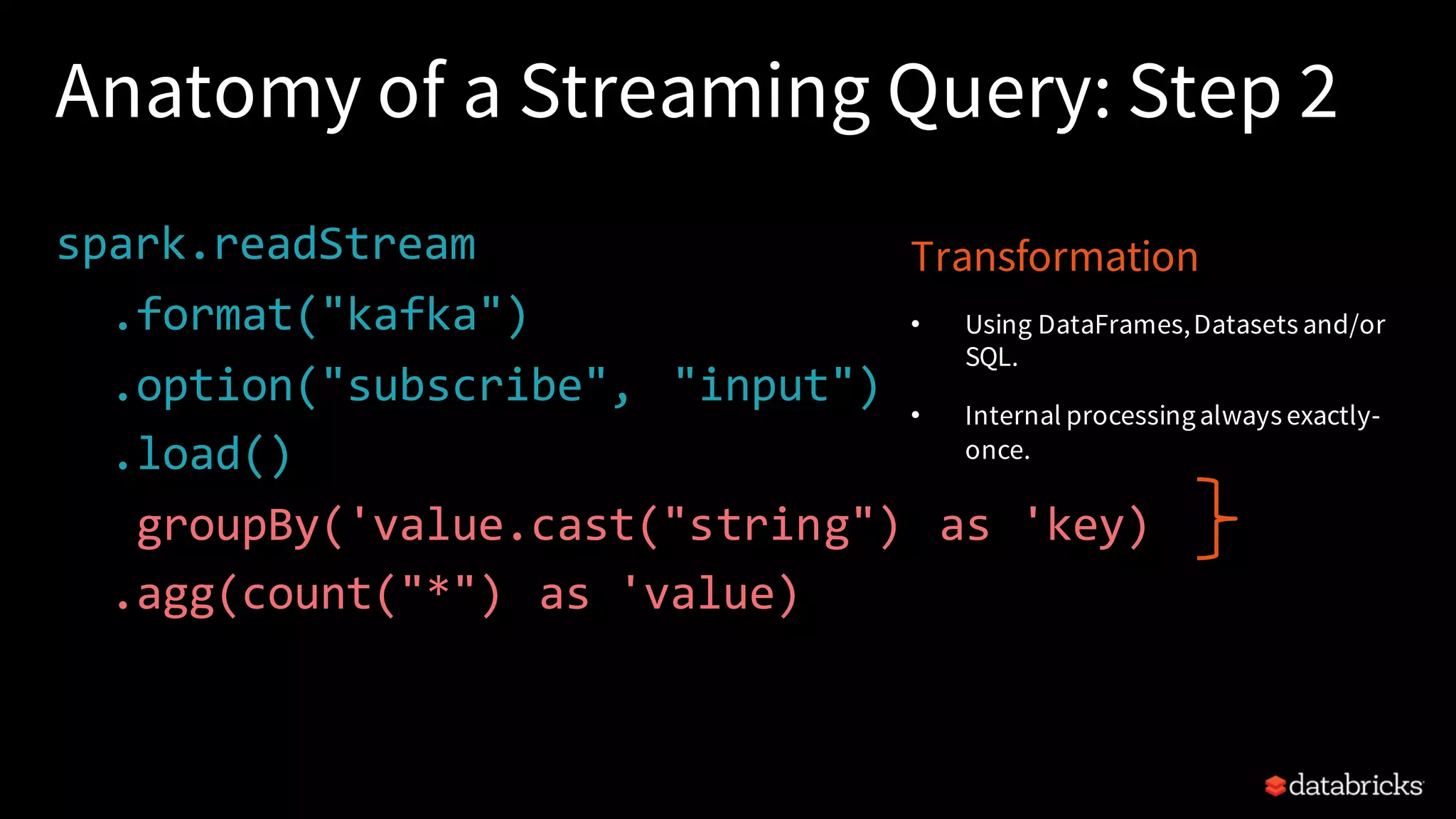
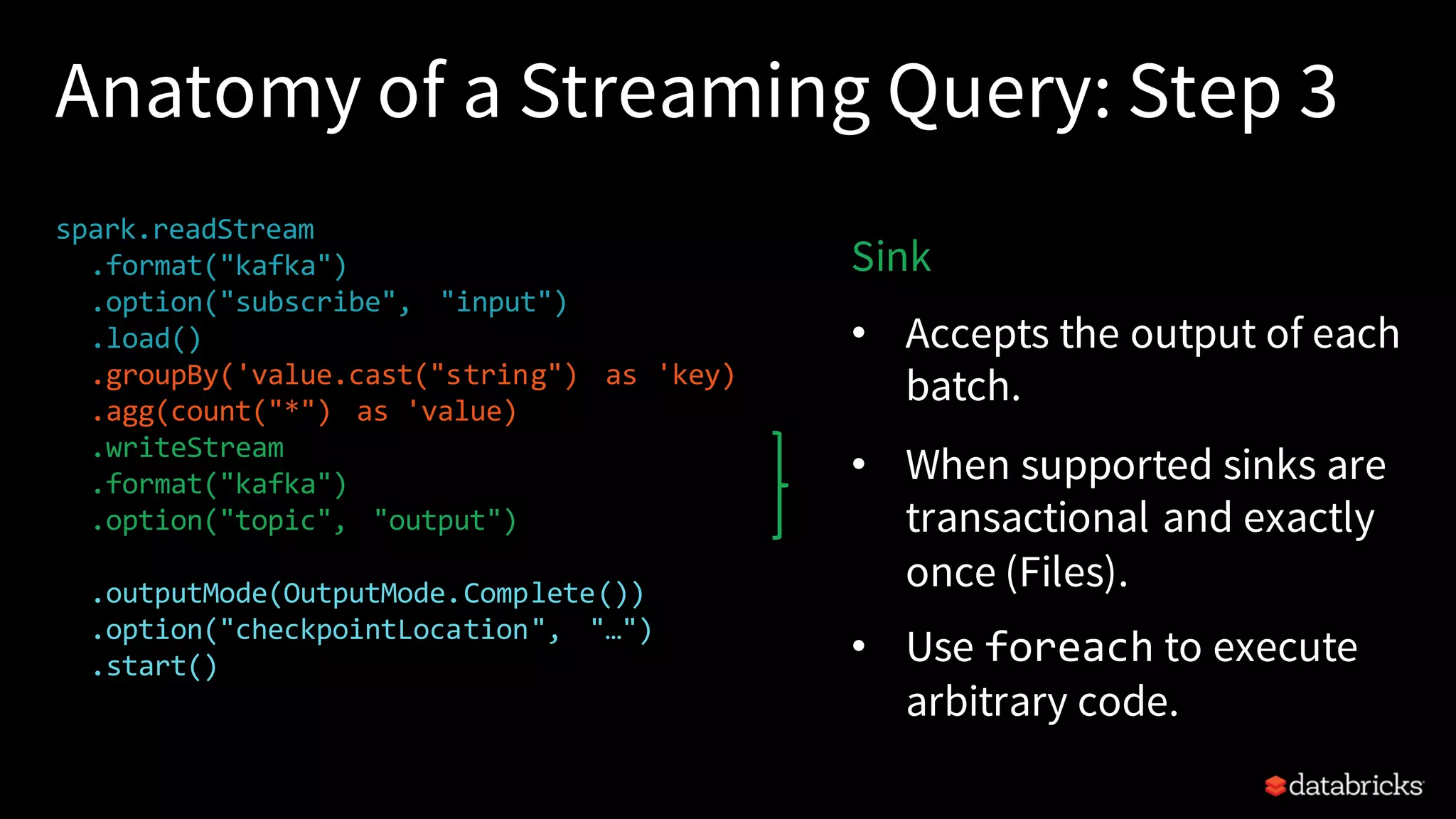
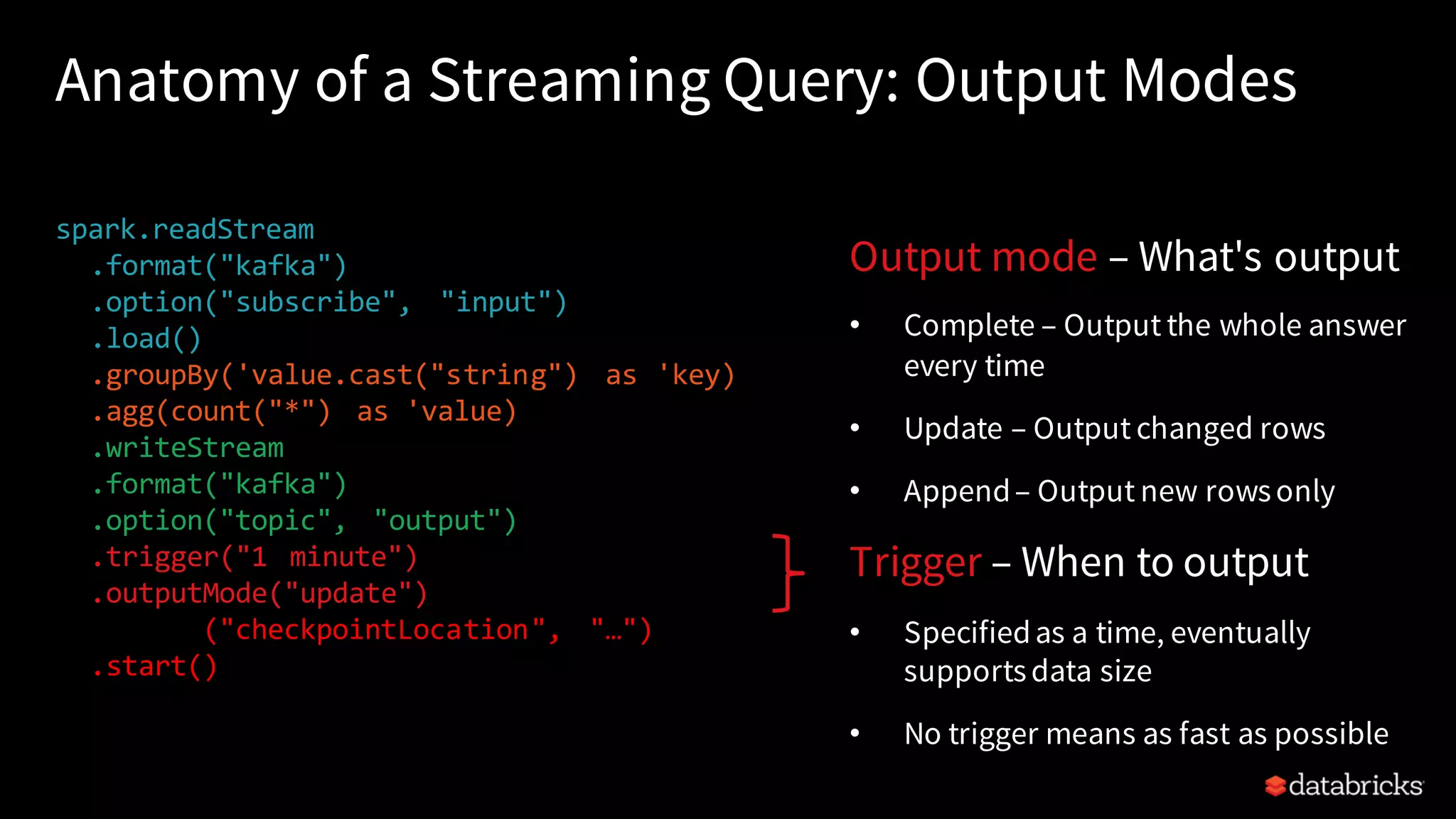
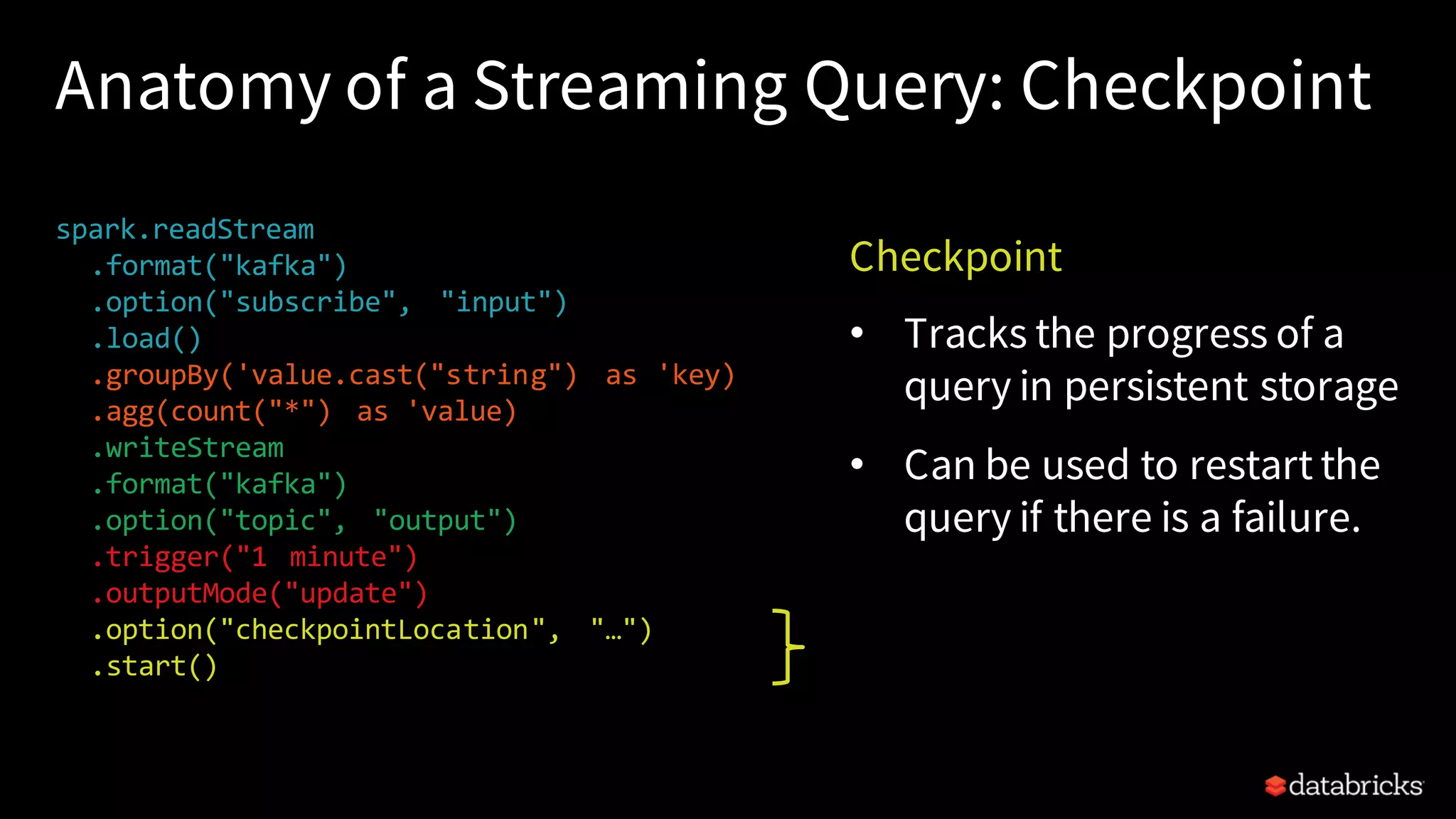



![Traditional ETL Hours of delay before taking decisions on latest data Unacceptable when time is of essence [intrusion detection, anomaly detection, etc.] file dump seconds hours table 10101010](https://image.slidesharecdn.com/sparkstaturdayworkshop-170730005213/75/Jumpstart-on-Apache-Spark-2-2-on-Databricks-94-2048.jpg)
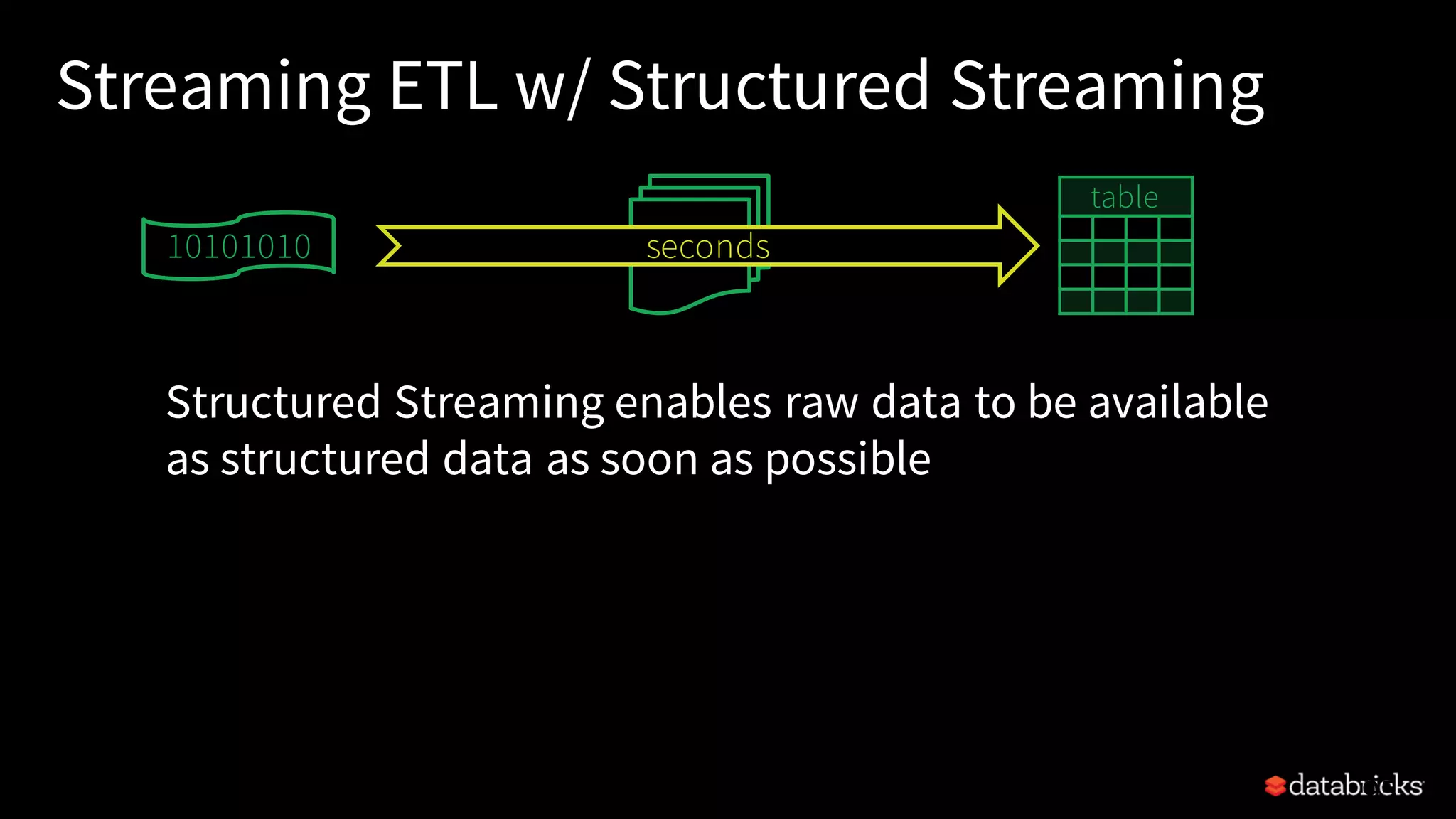

![Reading from Kafka Specify options to configure How? kafka.boostrap.servers => broker1,broker2 What? subscribe => topic1,topic2,topic3 // fixed list of topics subscribePattern => topic* // dynamic list of topics assign => {"topicA":[0,1] } // specific partitions Where? startingOffsets => latest(default) / earliest / {"topicA":{"0":23,"1":345} } val rawData = spark.readStream .format("kafka") .option("kafka.boostrap.servers",...) .option("subscribe", "topic") .load()](https://image.slidesharecdn.com/sparkstaturdayworkshop-170730005213/75/Jumpstart-on-Apache-Spark-2-2-on-Databricks-97-2048.jpg)
![Reading from Kafka val rawDataDF = spark.readStream .format("kafka") .option("kafka.boostrap.servers",...) .option("subscribe", "topic") .load() rawData dataframe has the following columns key value topic partition offset timestamp [binary] [binary] "topicA" 0 345 1486087873 [binary] [binary] "topicB" 3 2890 1486086721](https://image.slidesharecdn.com/sparkstaturdayworkshop-170730005213/75/Jumpstart-on-Apache-Spark-2-2-on-Databricks-98-2048.jpg)

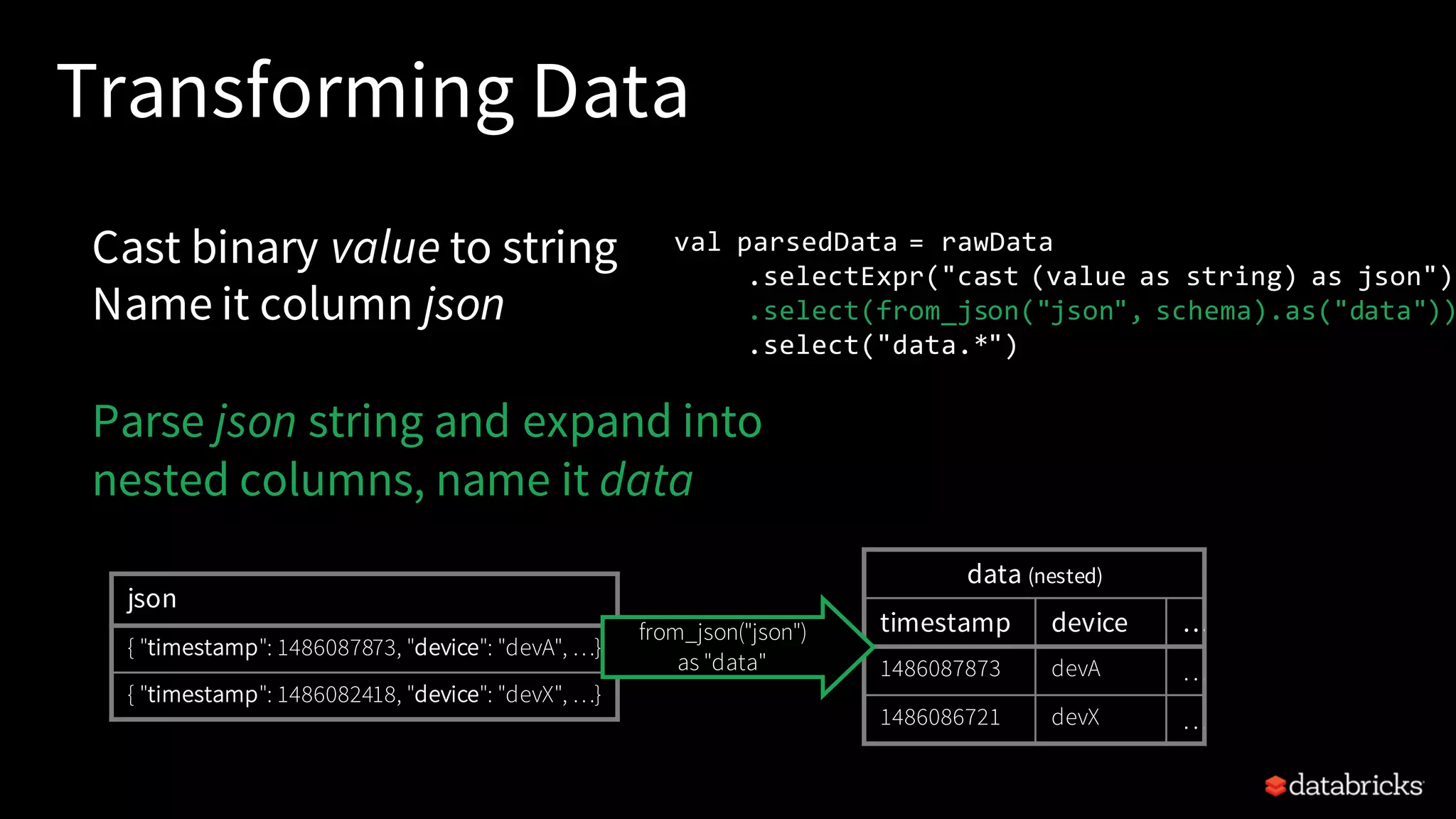
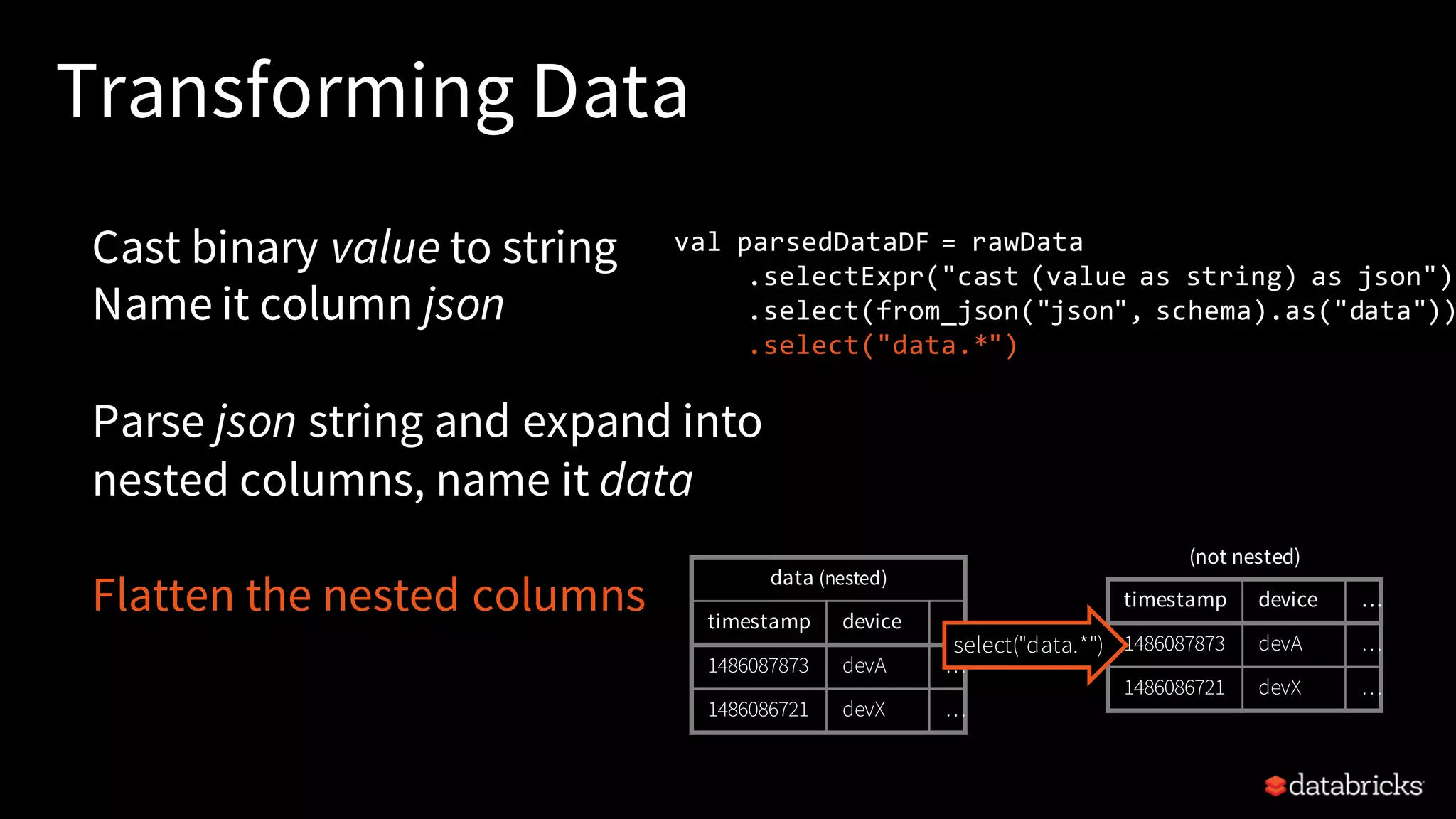
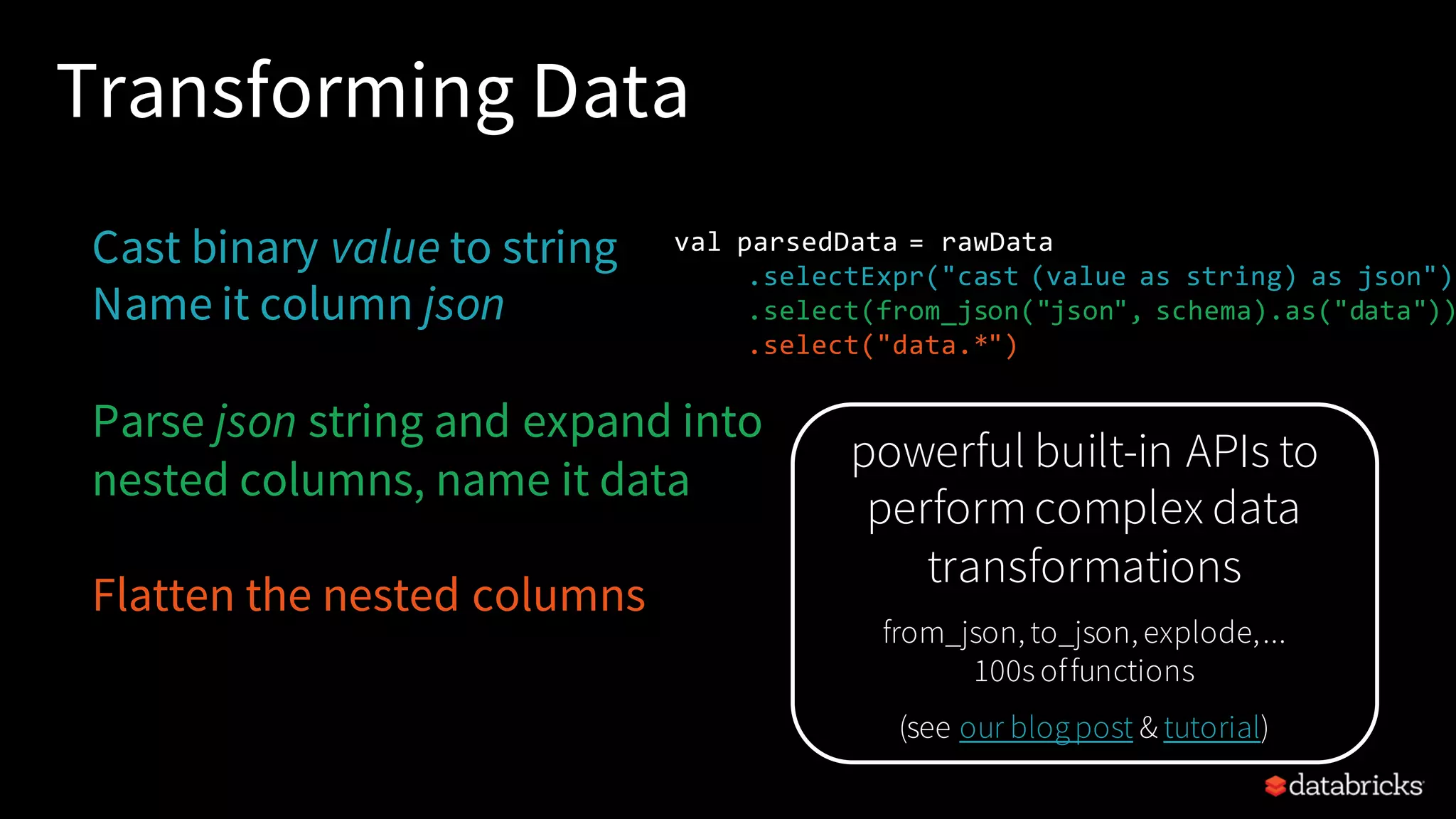
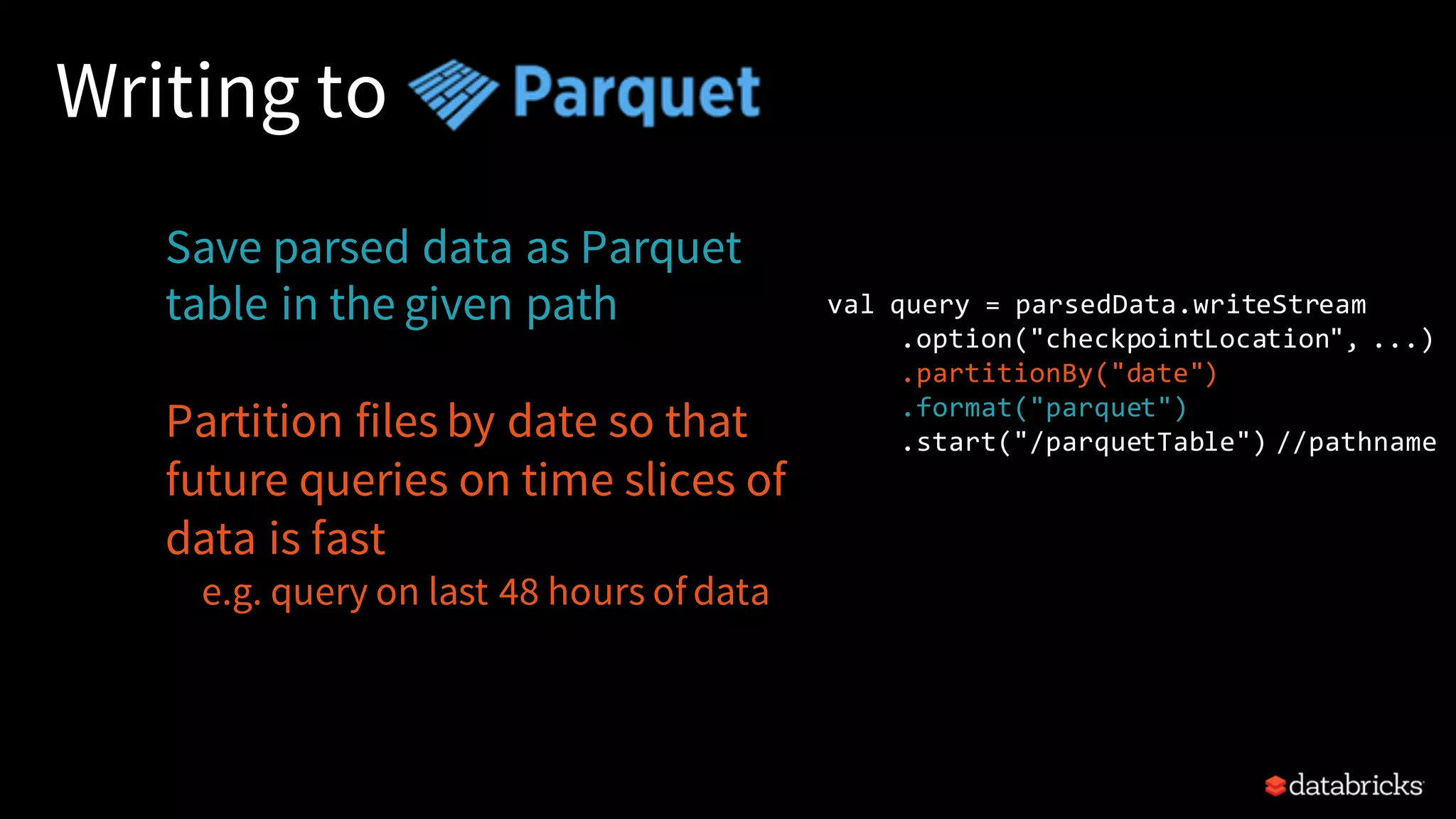
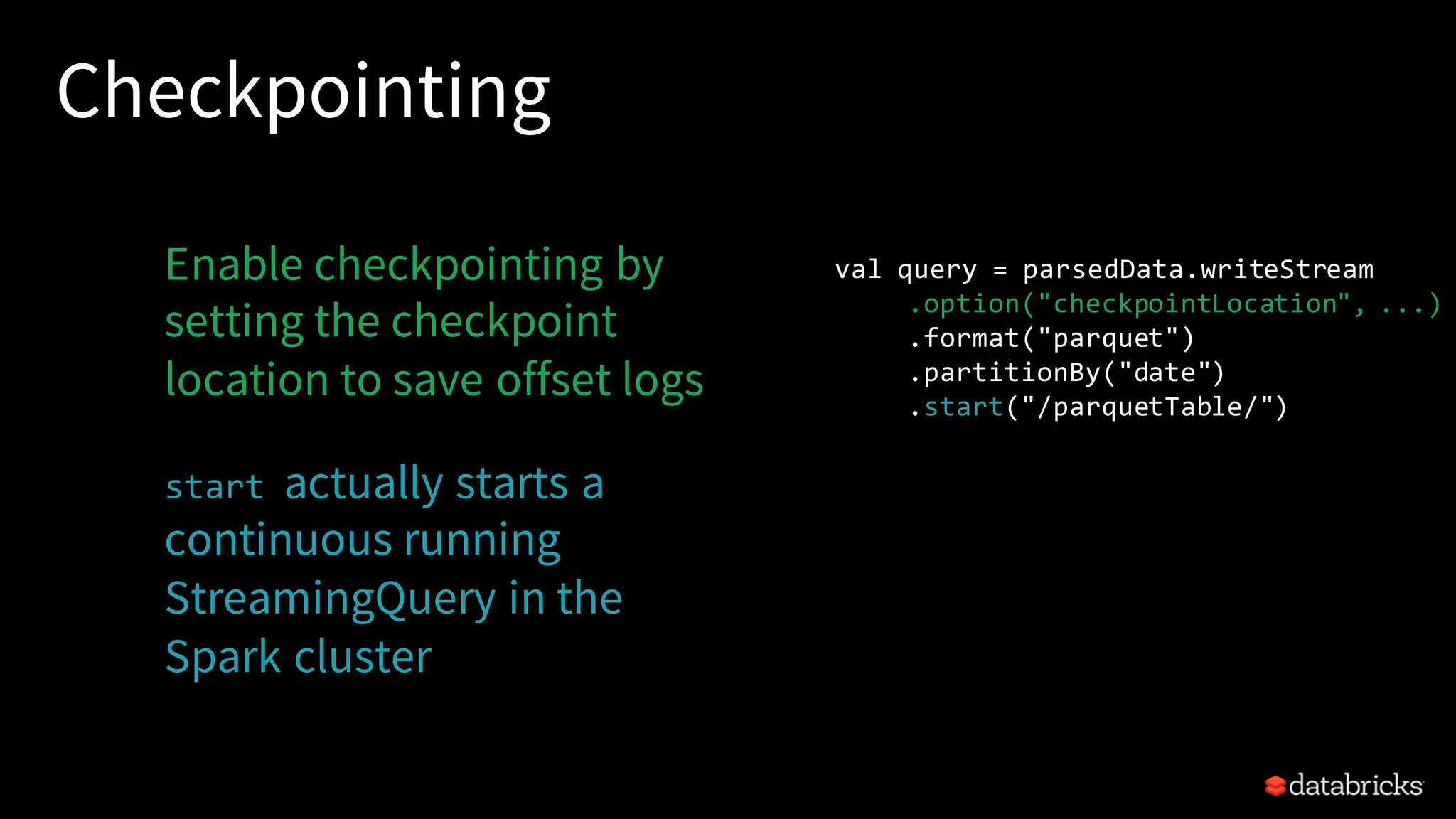


![More Kafka Support [Spark 2.2] Write out to Kafka DataFrame must have binary fields named key and value Direct, interactive and batch queries on Kafka Makes Kafka even more powerful as a storage platform! result.writeStream .format("kafka") .option("topic", "output") .start() val df = spark .read // not readStream .format("kafka") .option("subscribe", "topic") .load() df.createOrReplaceTempView("topicData") spark.sql("select value from topicData")](https://image.slidesharecdn.com/sparkstaturdayworkshop-170730005213/75/Jumpstart-on-Apache-Spark-2-2-on-Databricks-107-2048.jpg)
![Amazon Kinesis [Databricks Runtime 3.0] Configure with options (similar to Kafka) How? region => us-west-2 / us-east-1 / ... awsAccessKey (optional) => AKIA... awsSecretKey (optional) => ... What? streamName => name-of-the-stream Where? initialPosition => latest(default) / earliest / trim_horizon spark.readStream .format("kinesis") .option("streamName”,"myStream") .option("region", "us-west-2") .option("awsAccessKey", ...) .option("awsSecretKey", ...) .load()](https://image.slidesharecdn.com/sparkstaturdayworkshop-170730005213/75/Jumpstart-on-Apache-Spark-2-2-on-Databricks-108-2048.jpg)
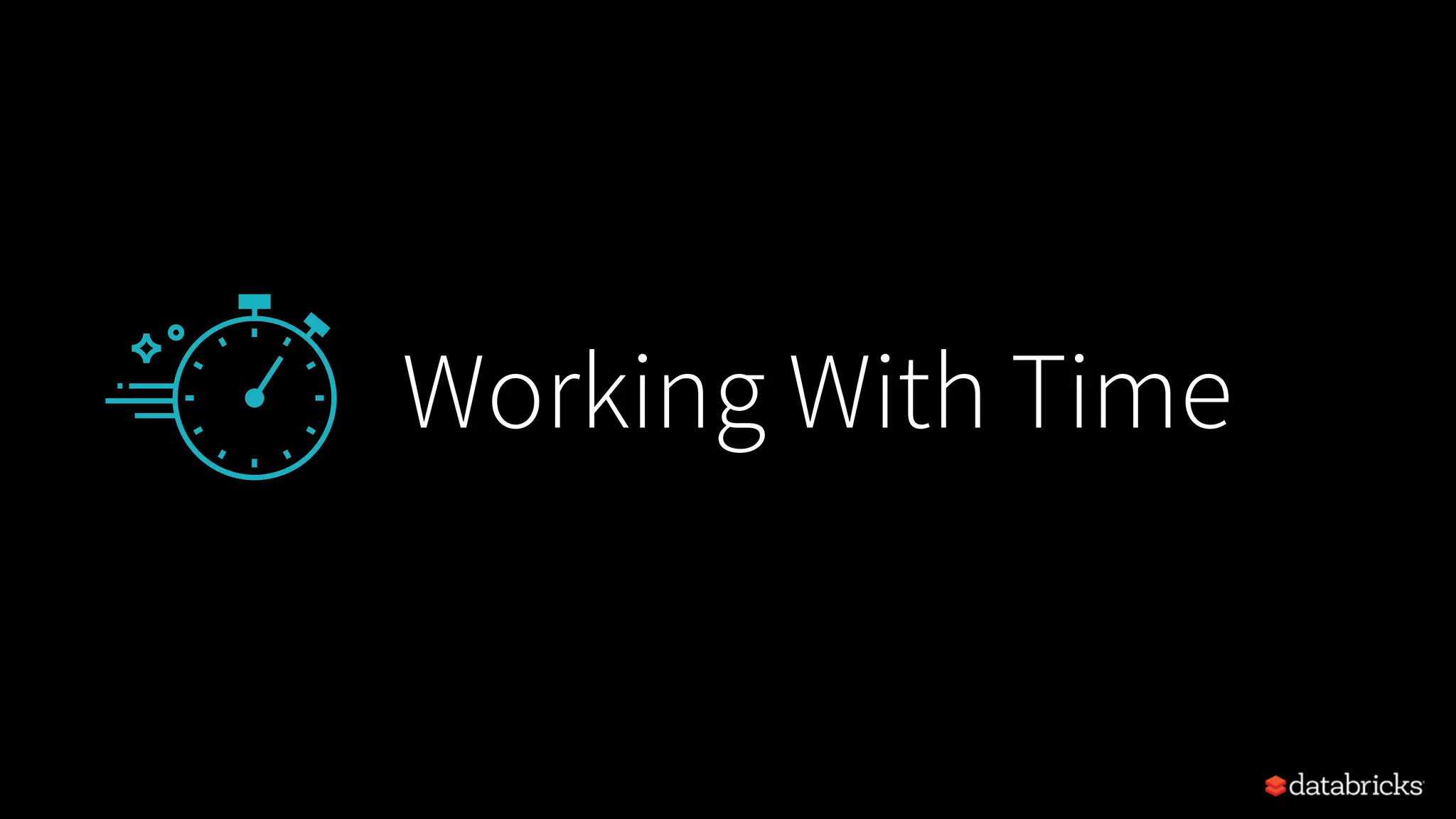
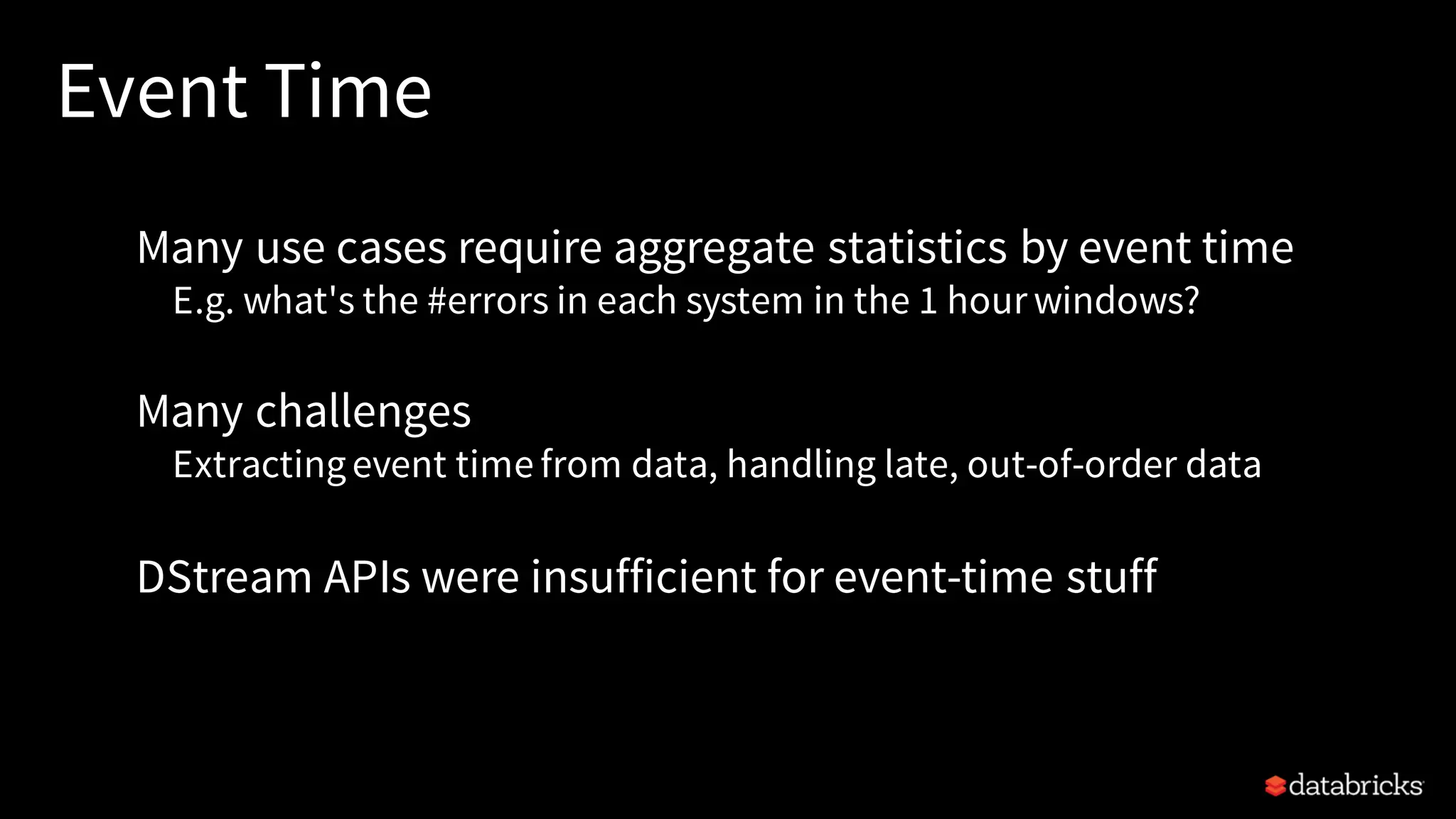
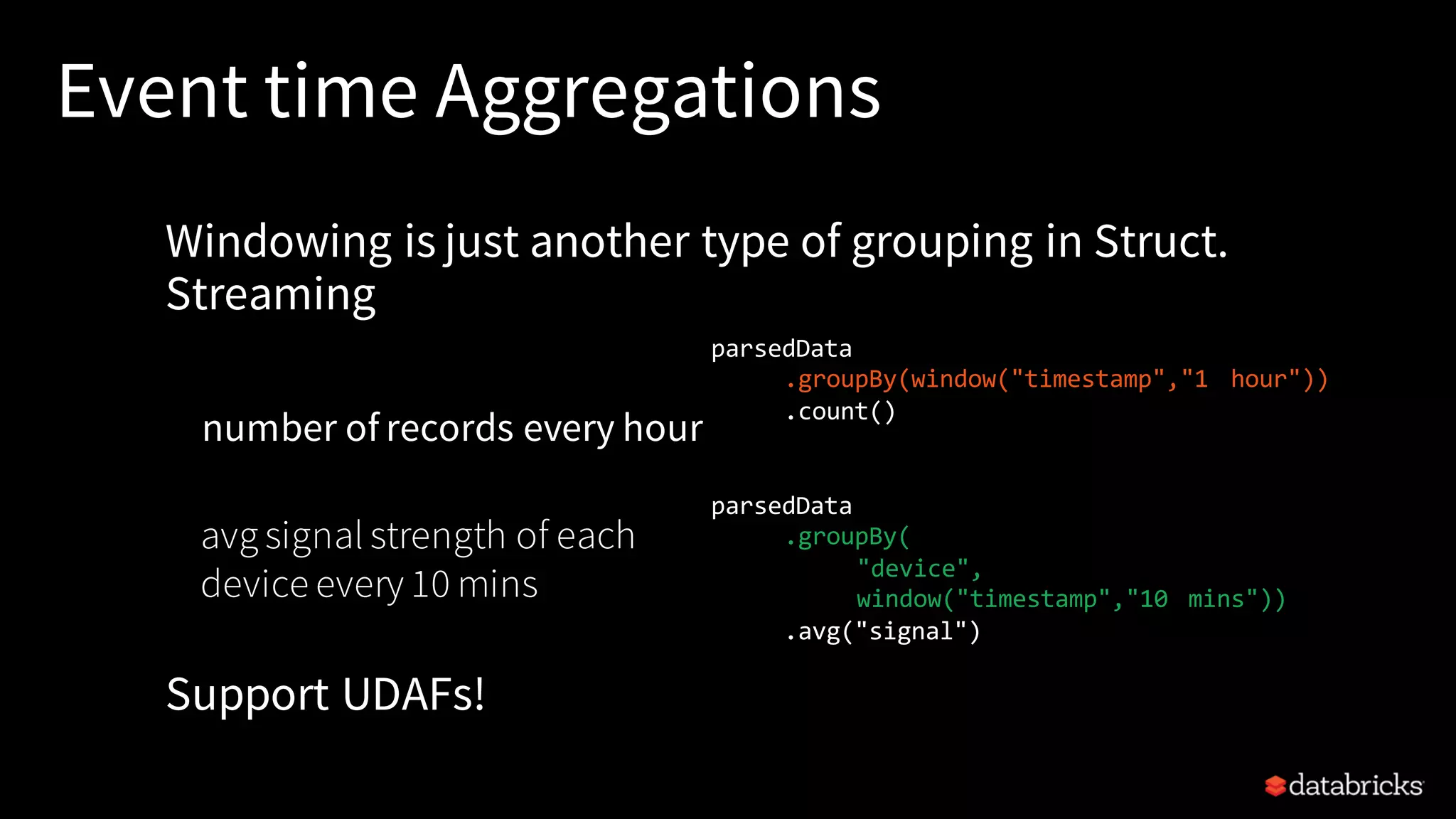
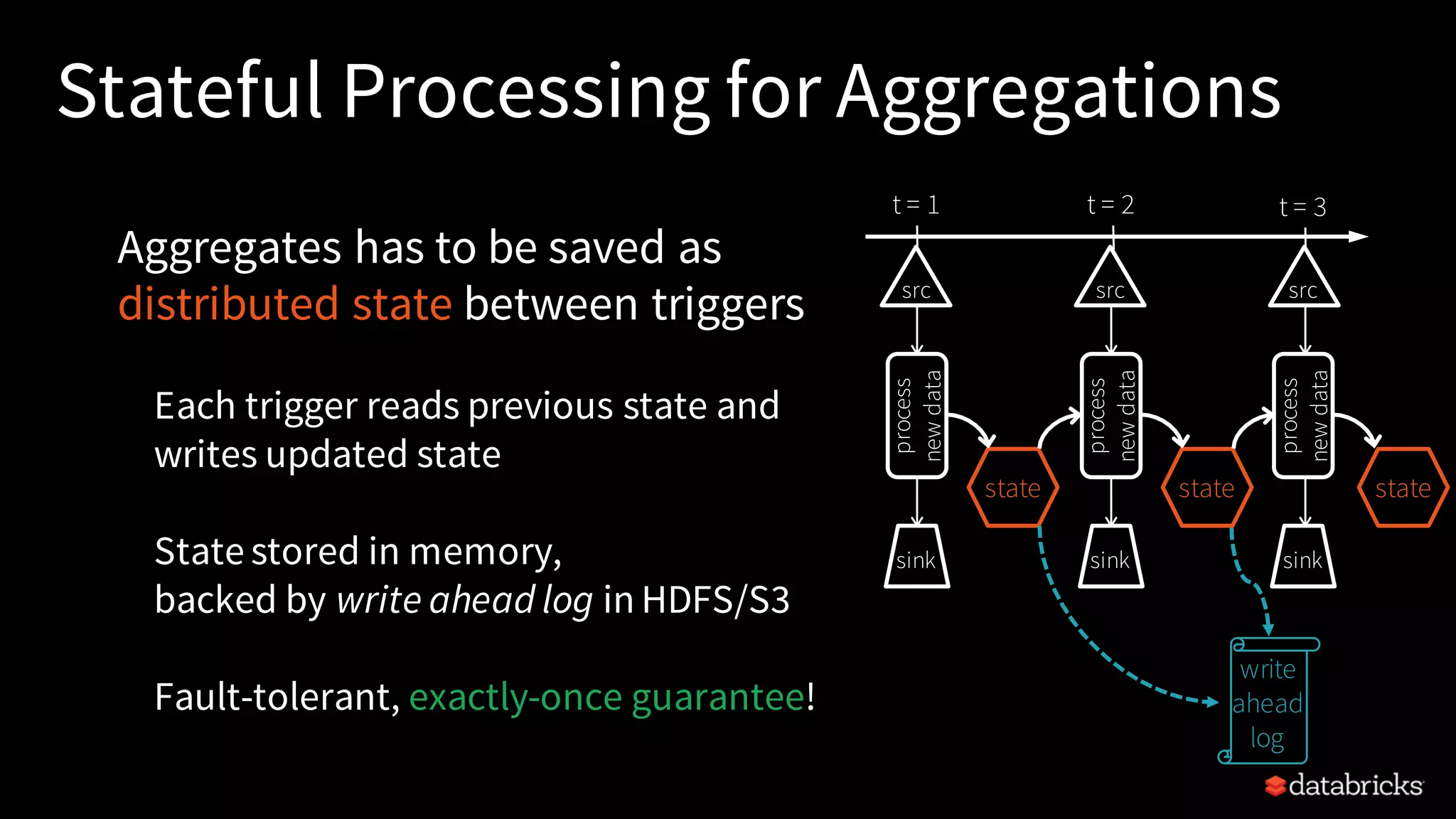
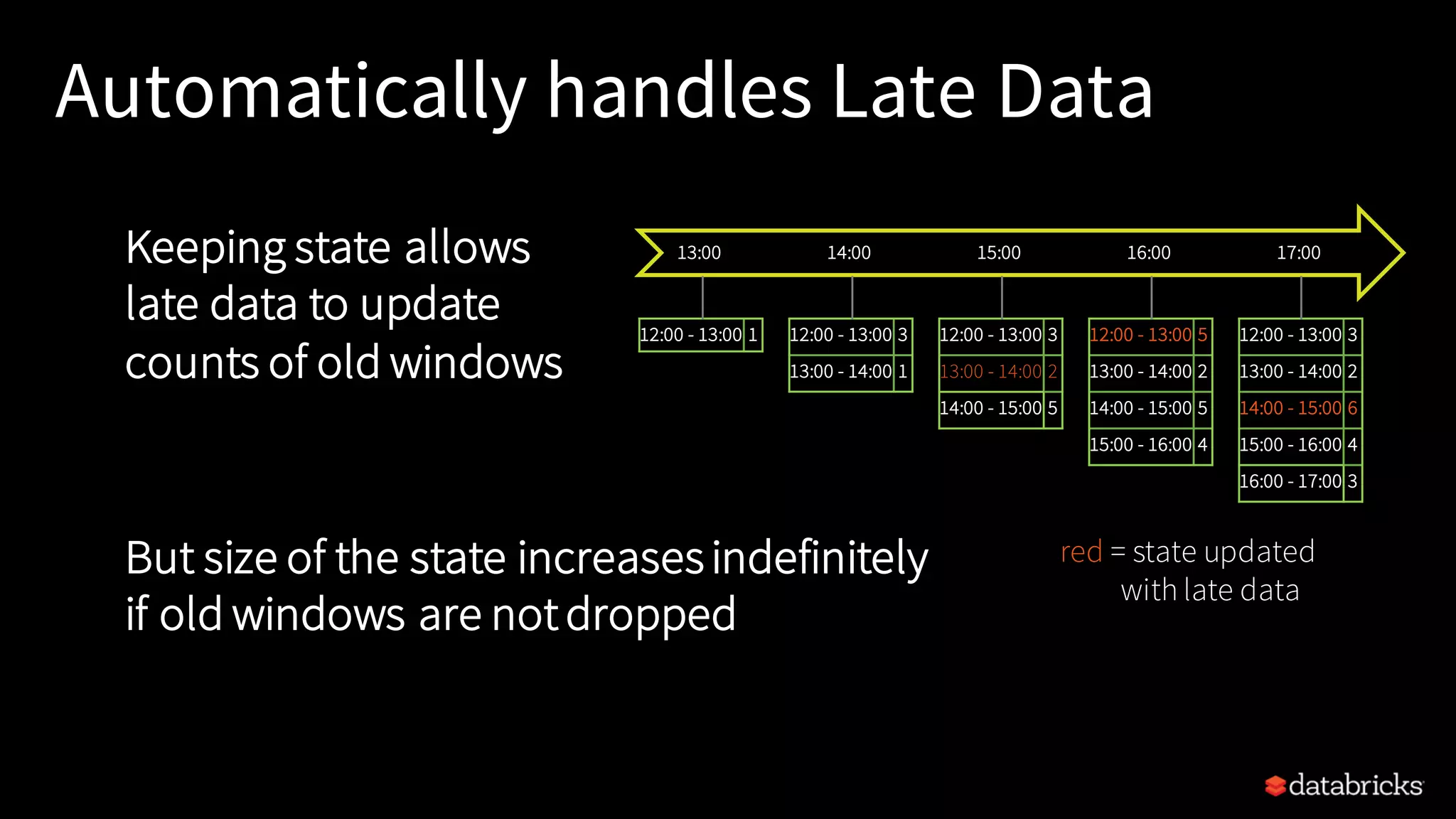

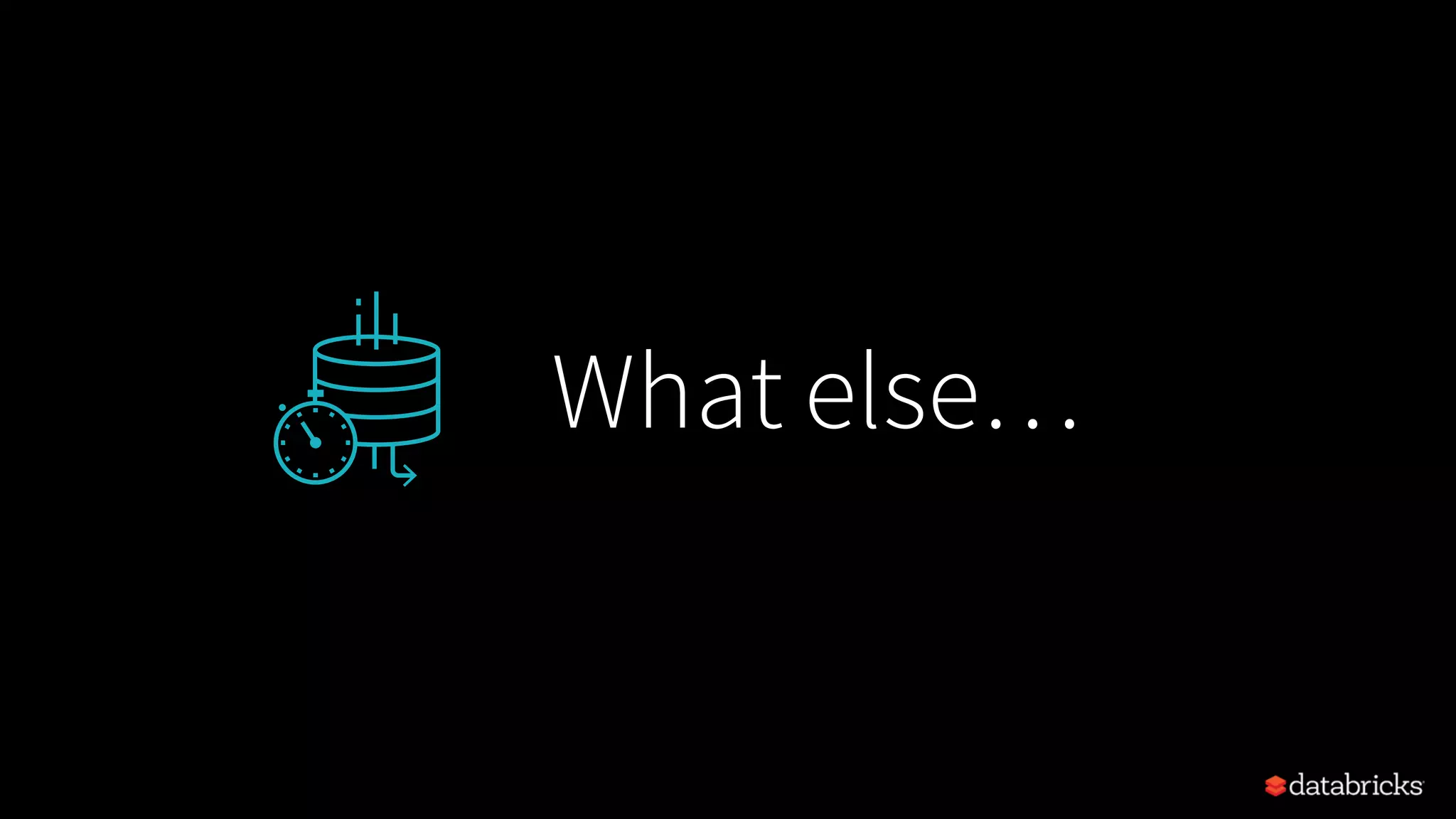
![Arbitrary Stateful Operations [Spark 2.2] mapGroupsWithState allows any user-defined stateful function to a user-defined state Direct support for per-key timeouts in event-time or processing-time Supports Scala and Java 116 ds.groupByKey(_.id) .mapGroupsWithState (timeoutConf) (mappingWithStateFunc) def mappingWithStateFunc( key: K, values: Iterator[V], state: GroupState[S]): U = { // update or remove state // set timeouts // return mapped value }](https://image.slidesharecdn.com/sparkstaturdayworkshop-170730005213/75/Jumpstart-on-Apache-Spark-2-2-on-Databricks-116-2048.jpg)
![Arbitrary Stateful Operations [Spark 2.2] mapGroupsWithState allows any user-defined stateful function to a user-defined state Direct support for per-key timeouts in event-time or processing-time Supports Scala and Java 117 ds.groupByKey(_.id) .mapGroupsWithState (timeoutConf) (mappingWithStateFunc) def mappingWithStateFunc( key: K, values: Iterator[V], state: GroupState[S]): U = { // update or remove state // set timeouts // return mapped value }](https://image.slidesharecdn.com/sparkstaturdayworkshop-170730005213/75/Jumpstart-on-Apache-Spark-2-2-on-Databricks-117-2048.jpg)
